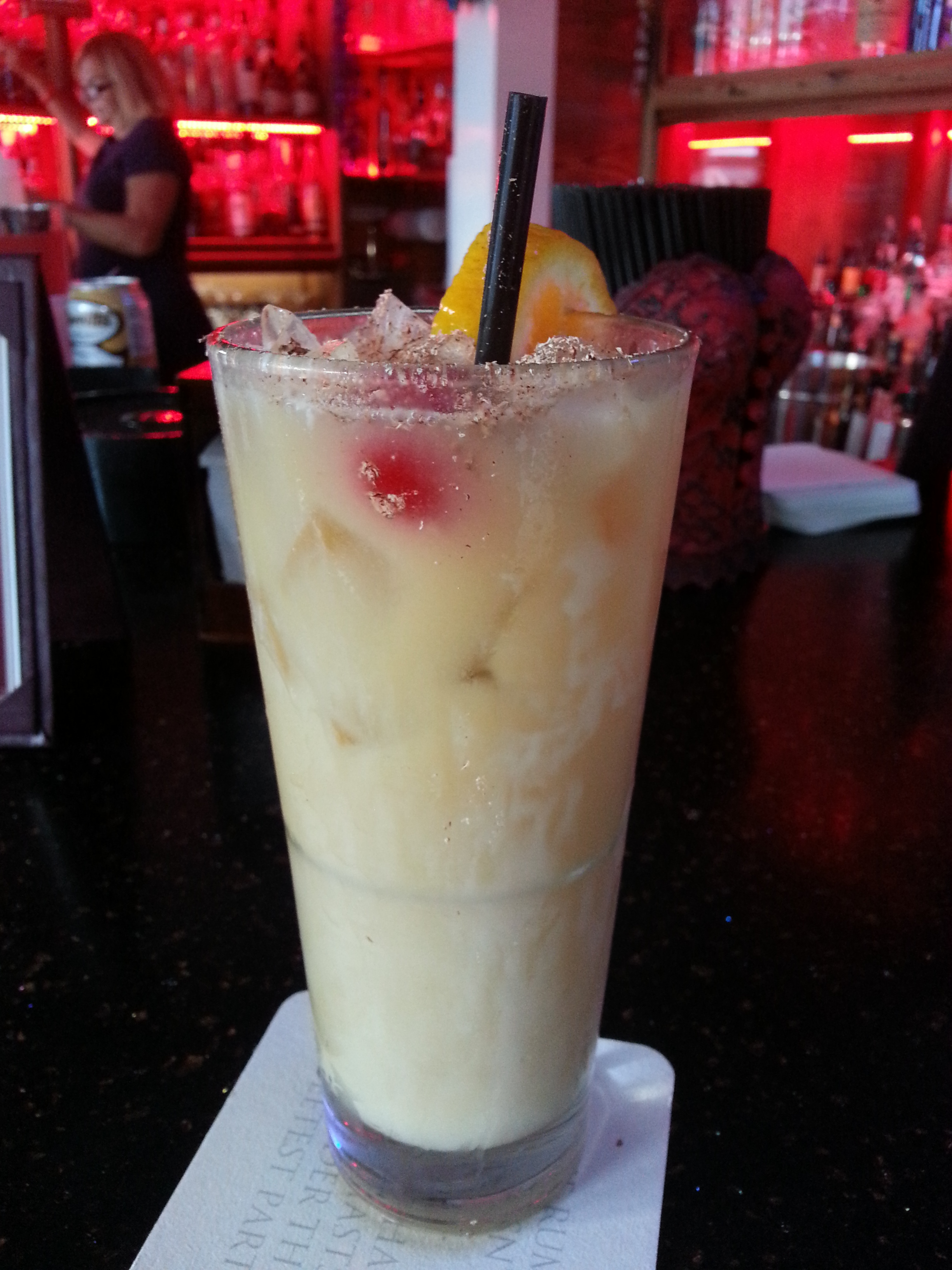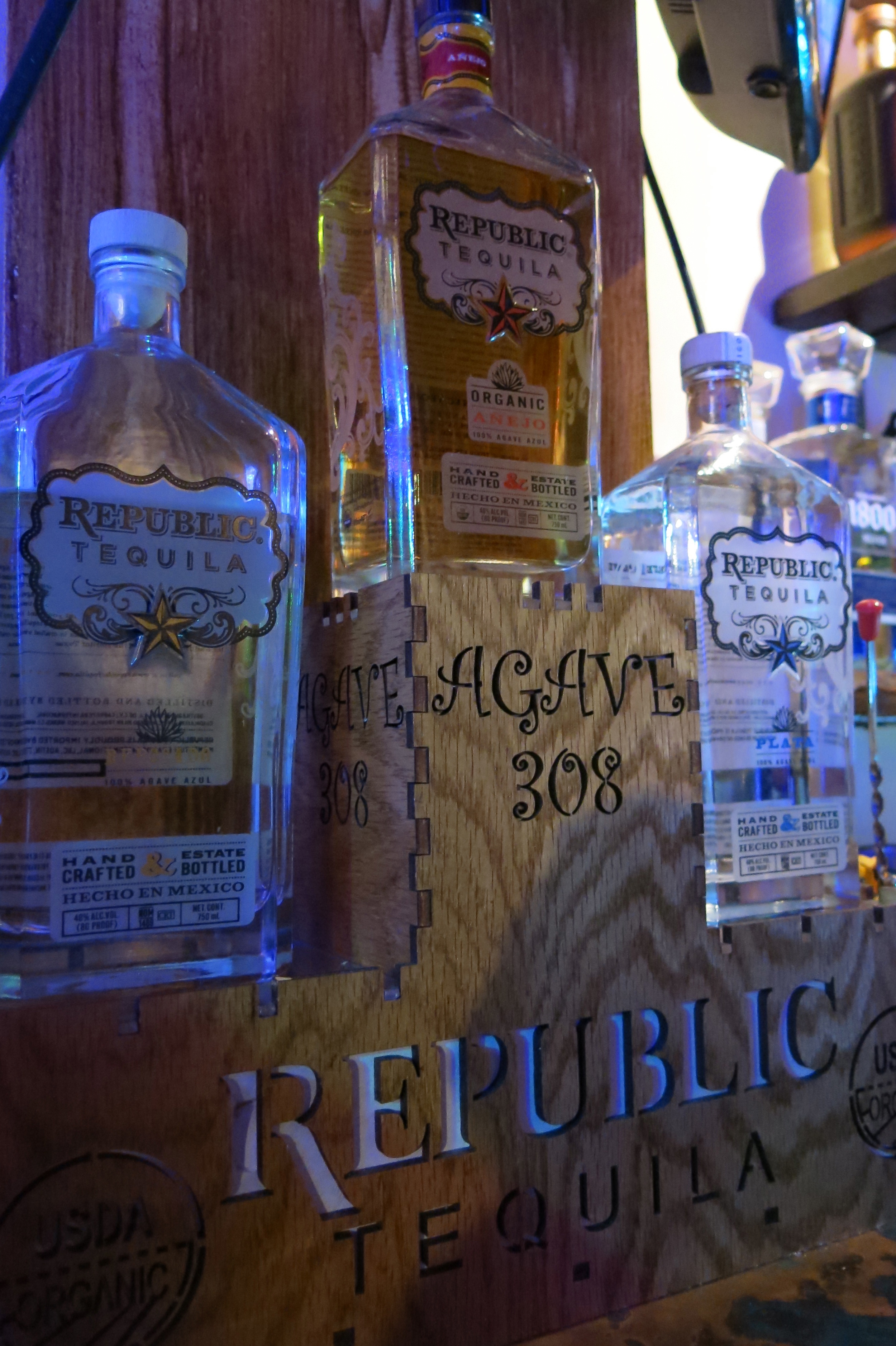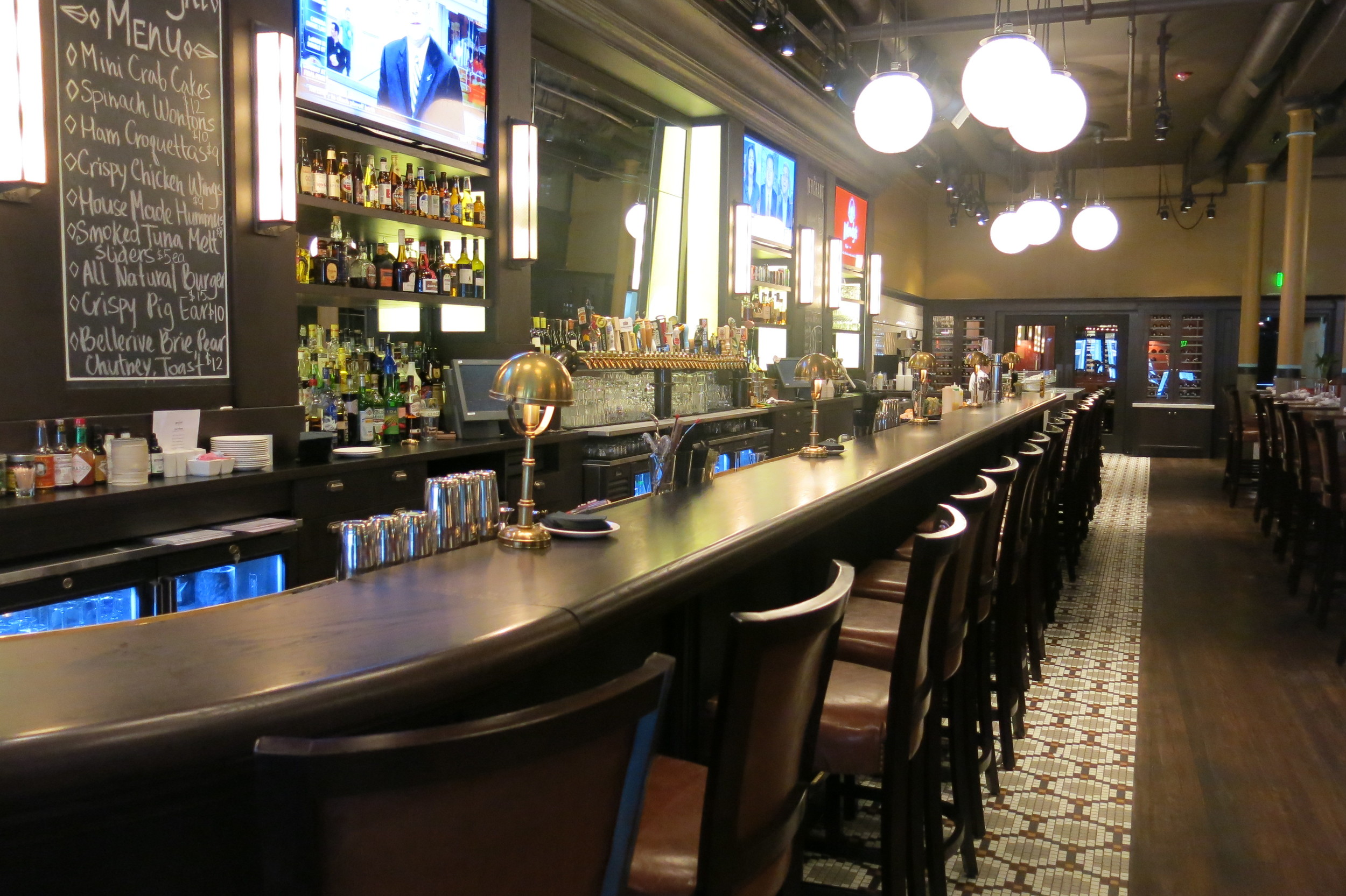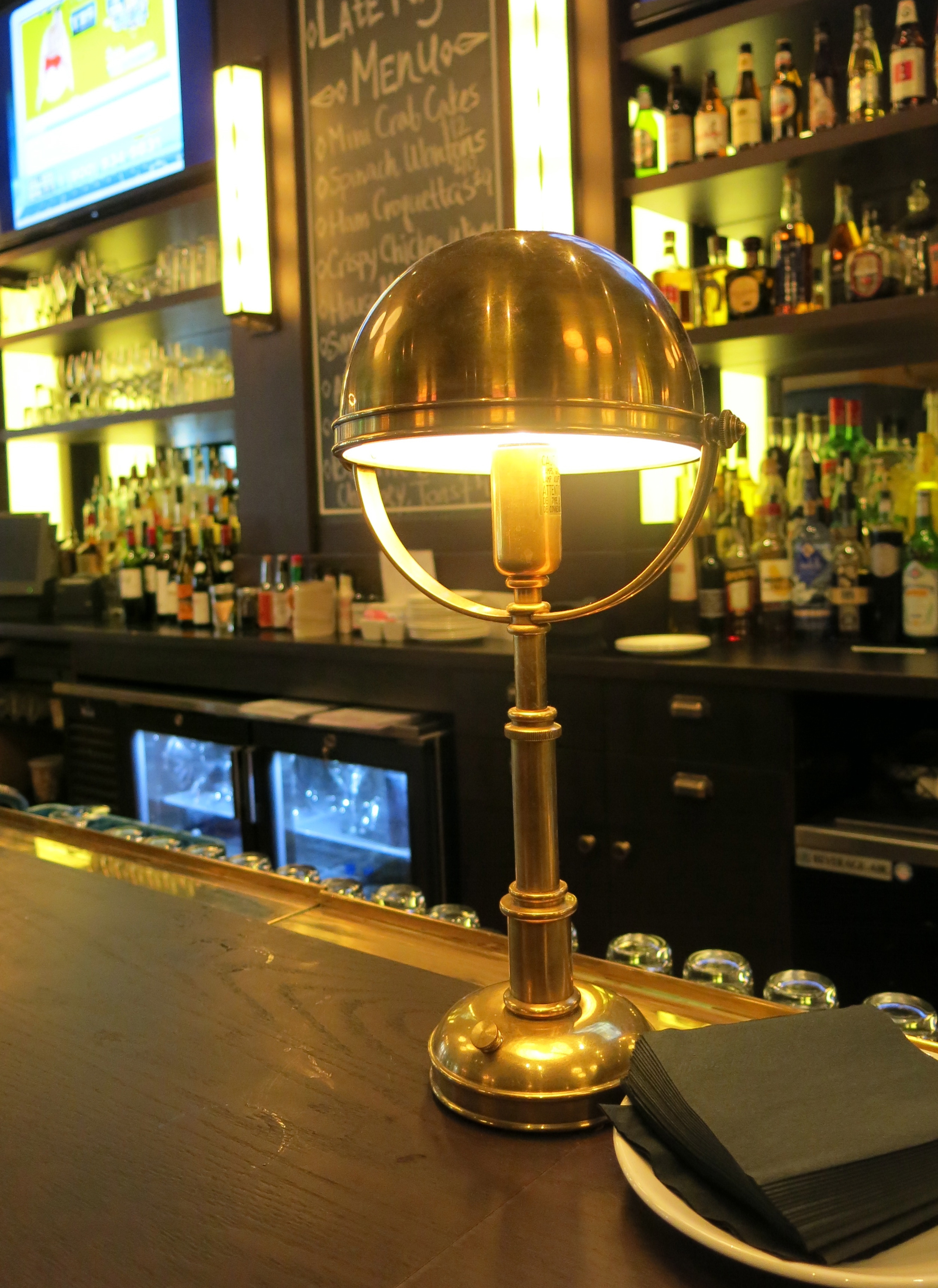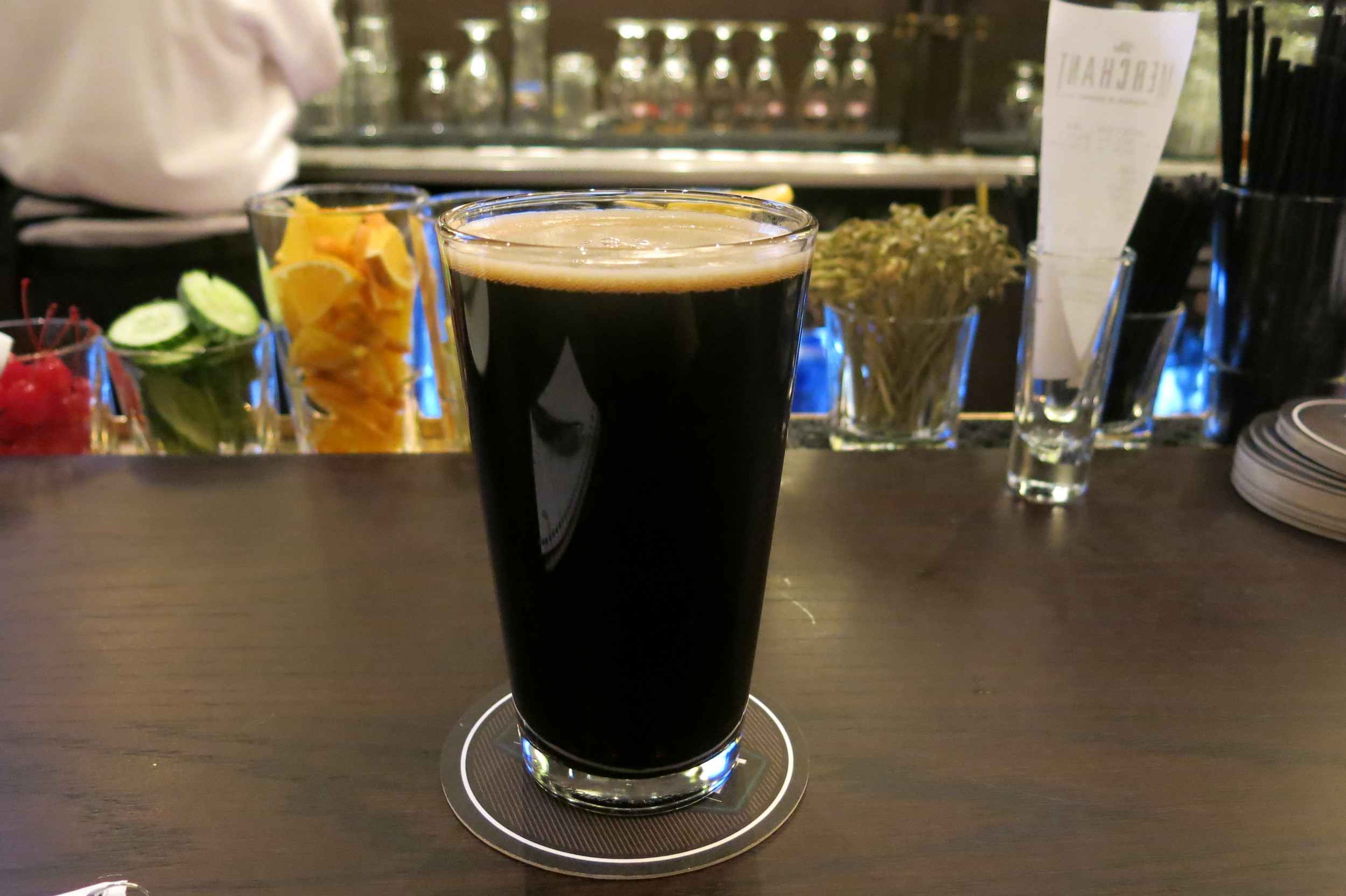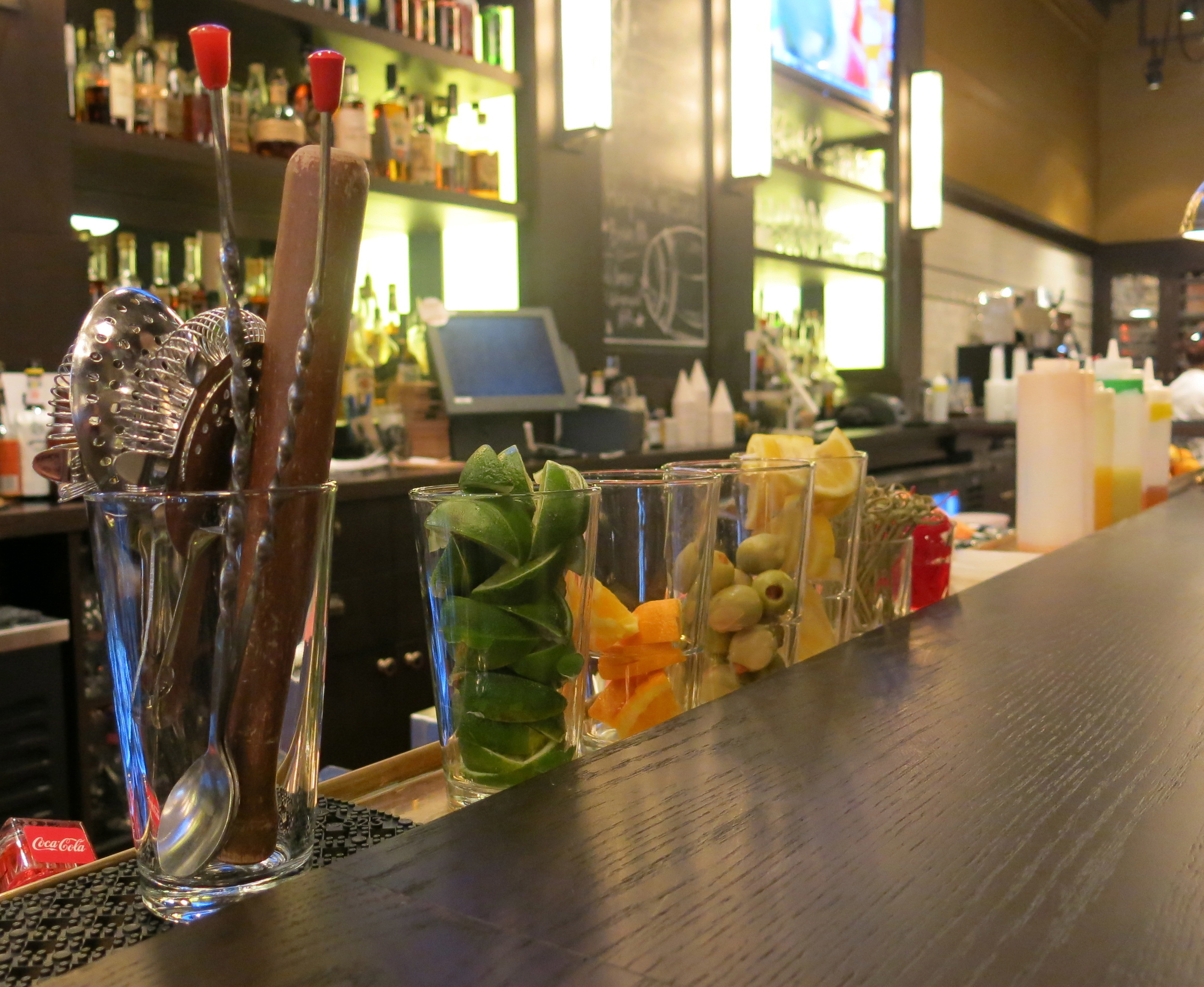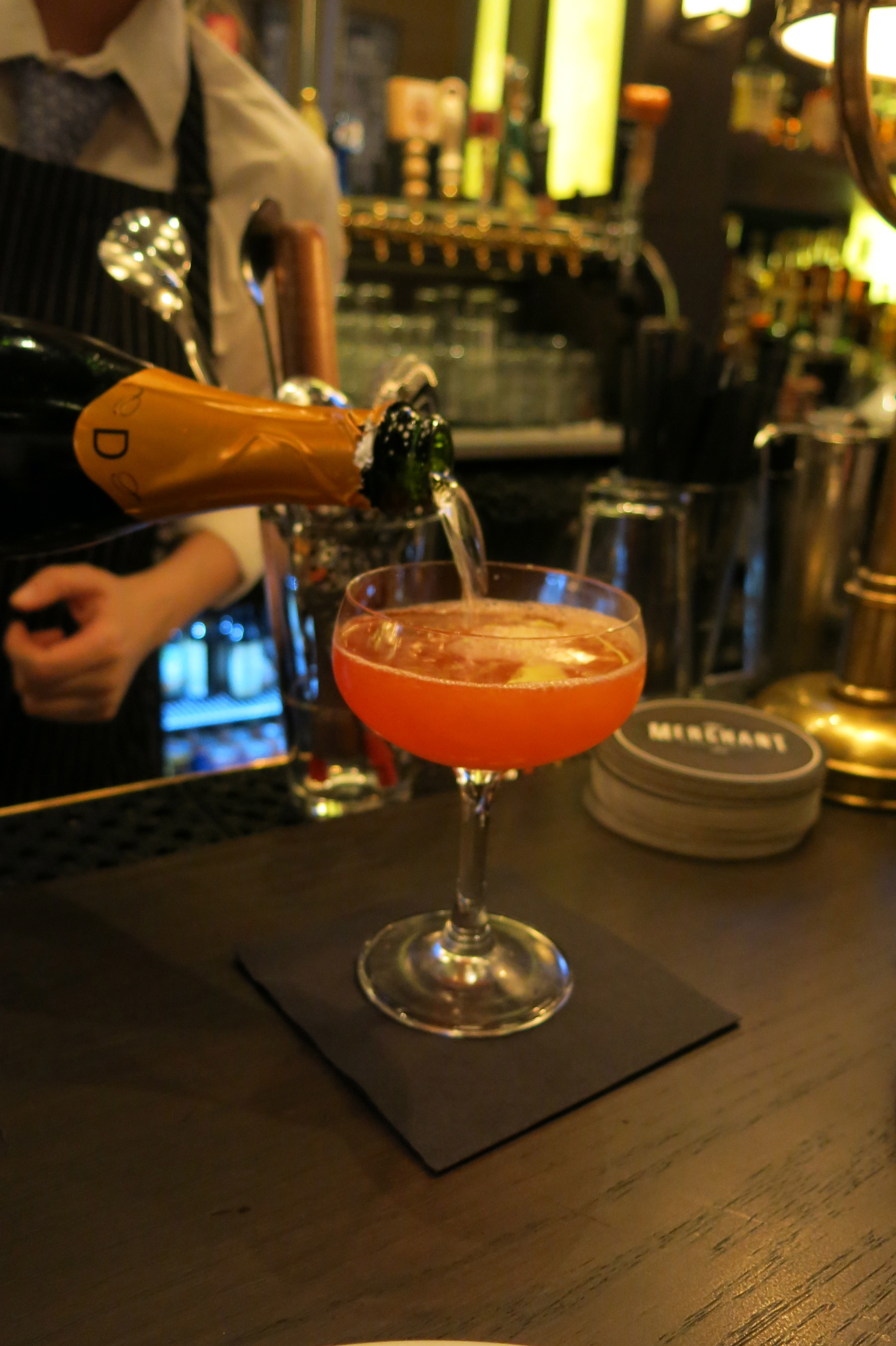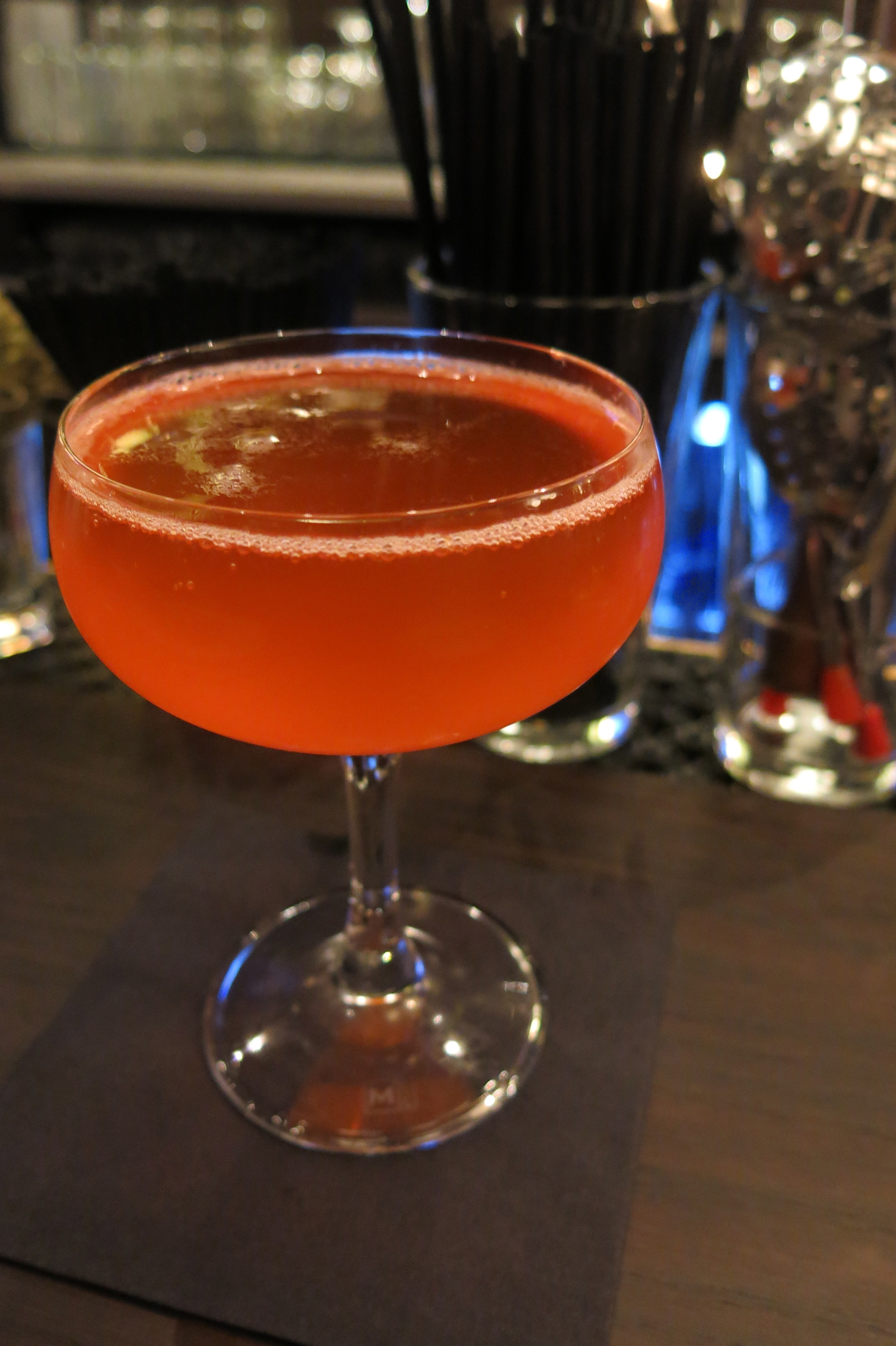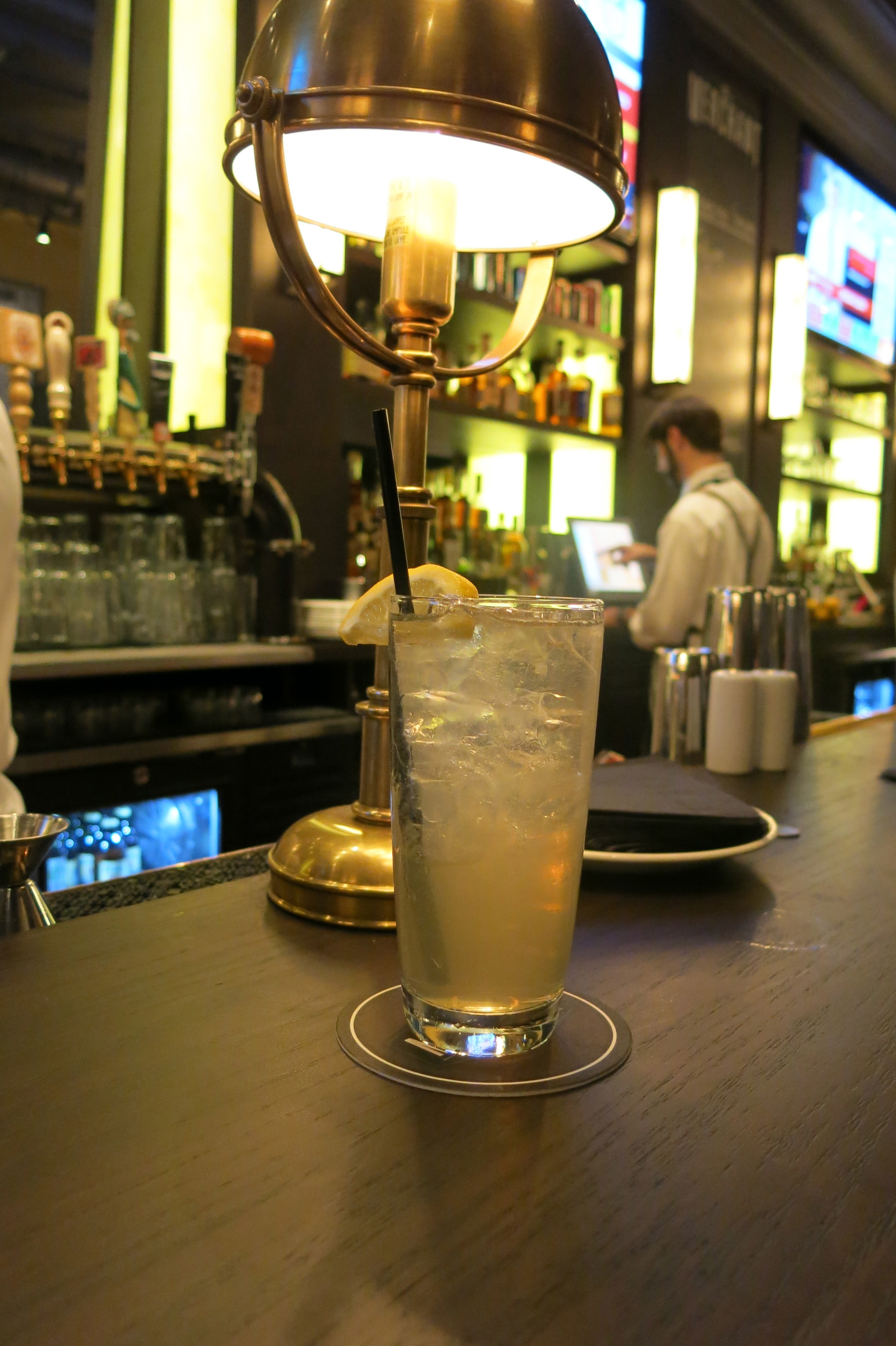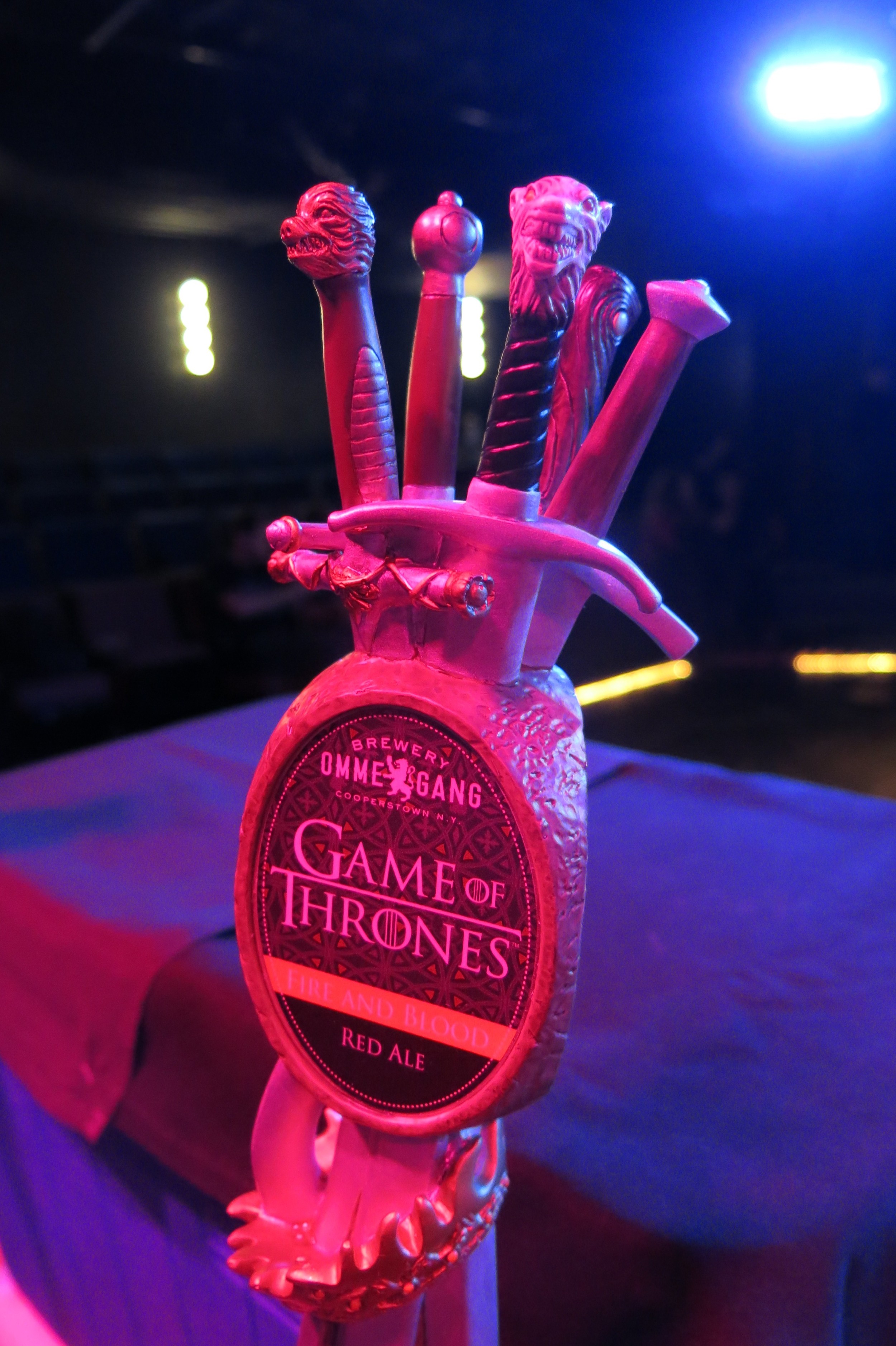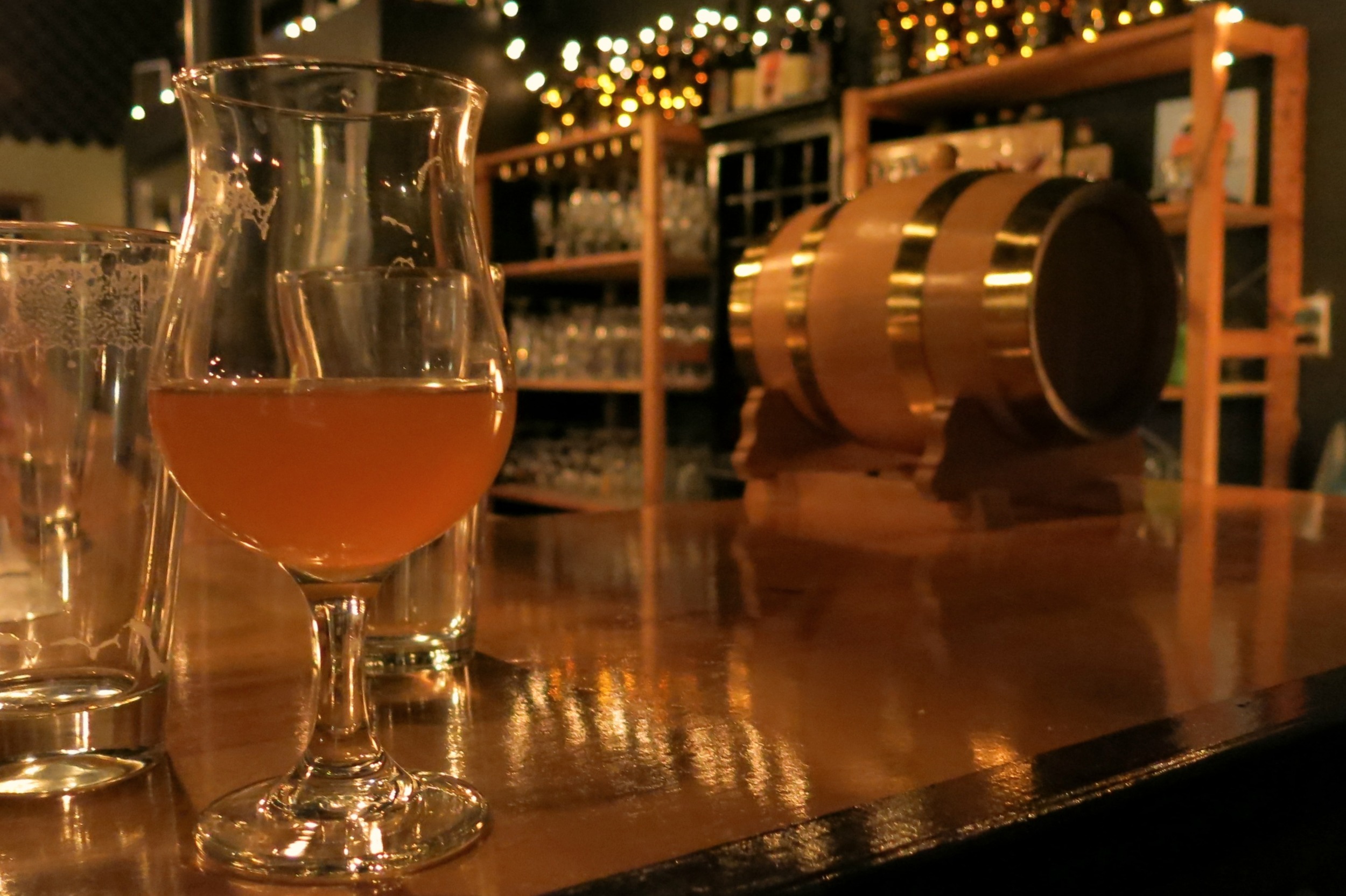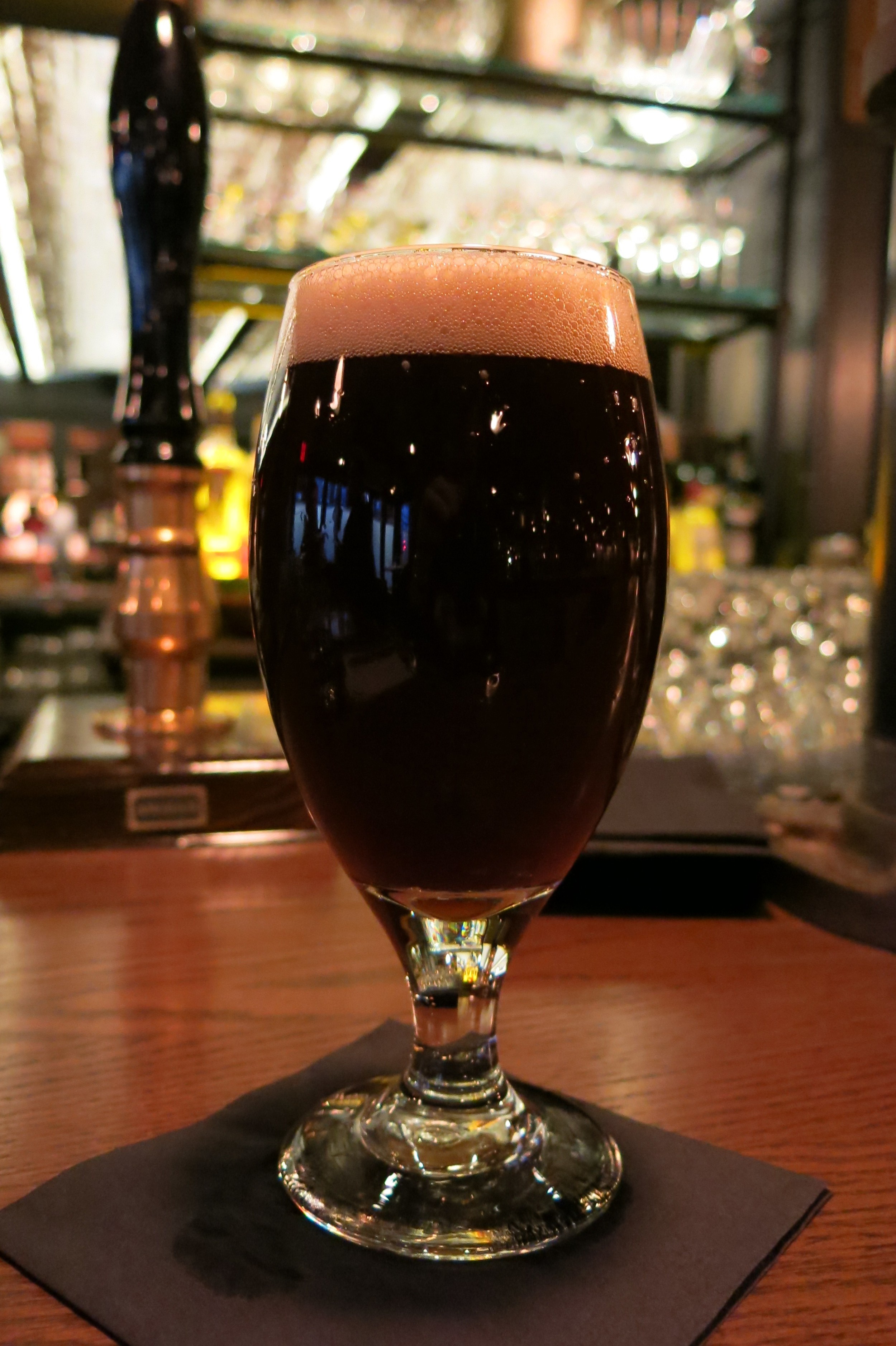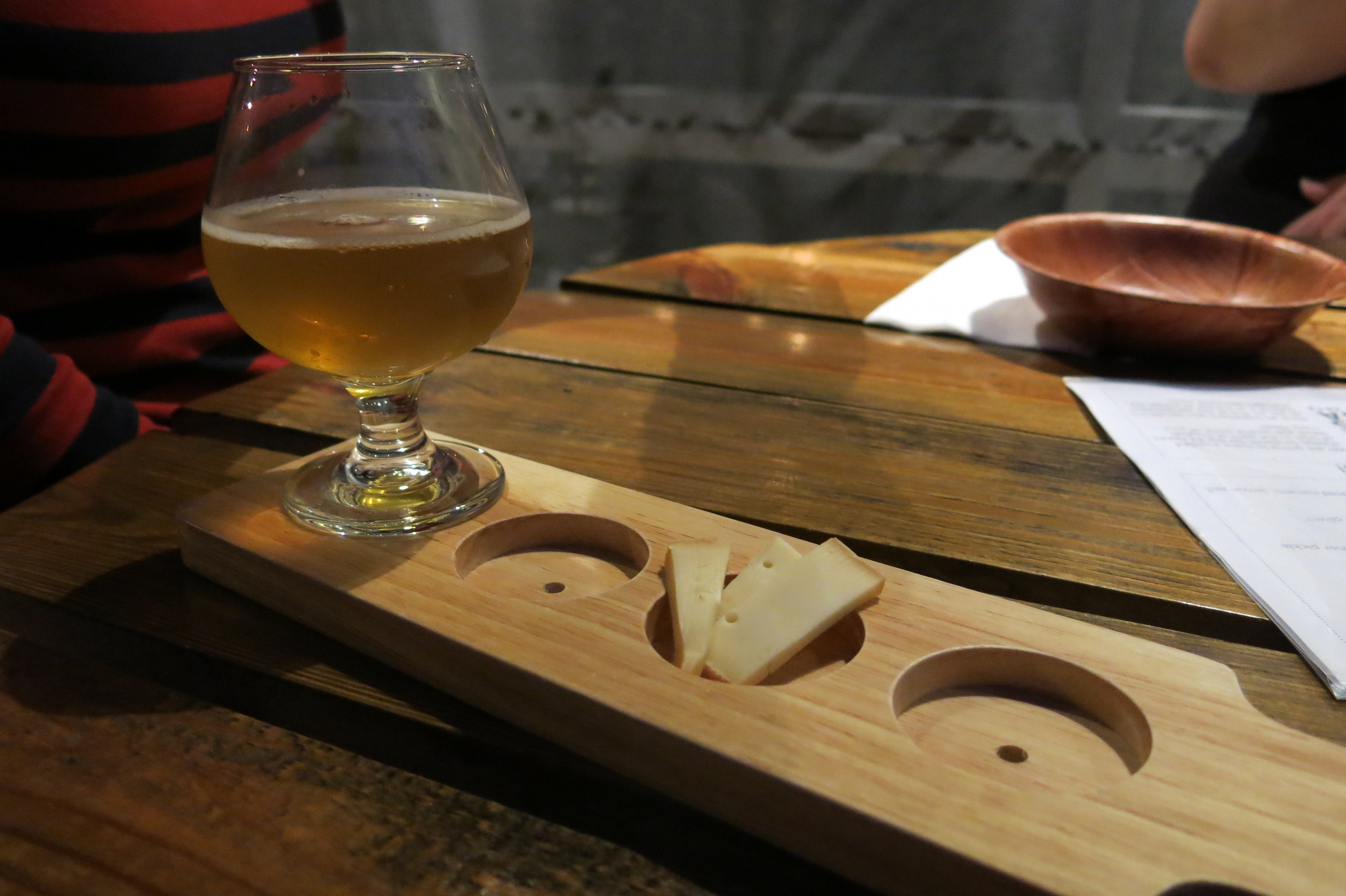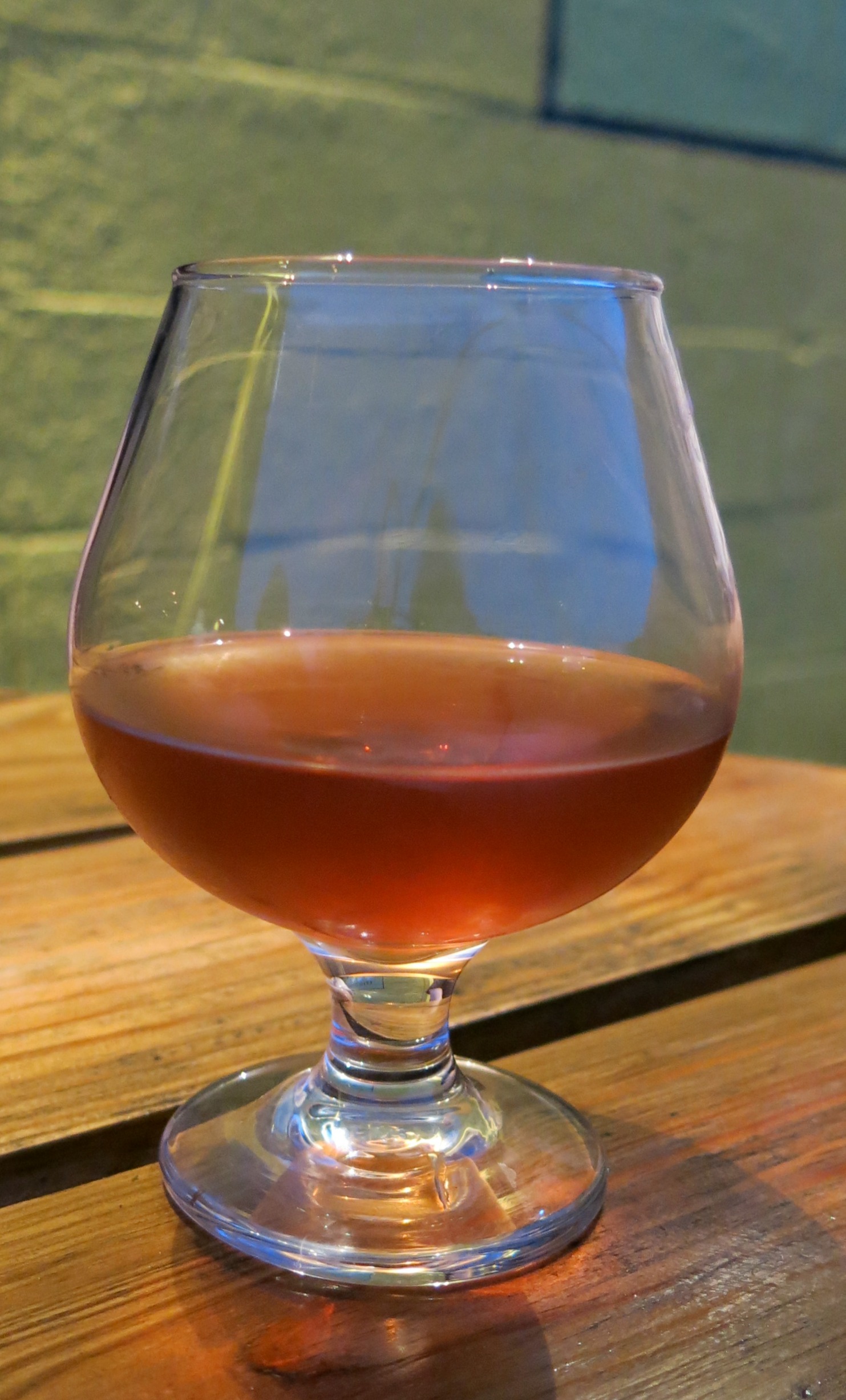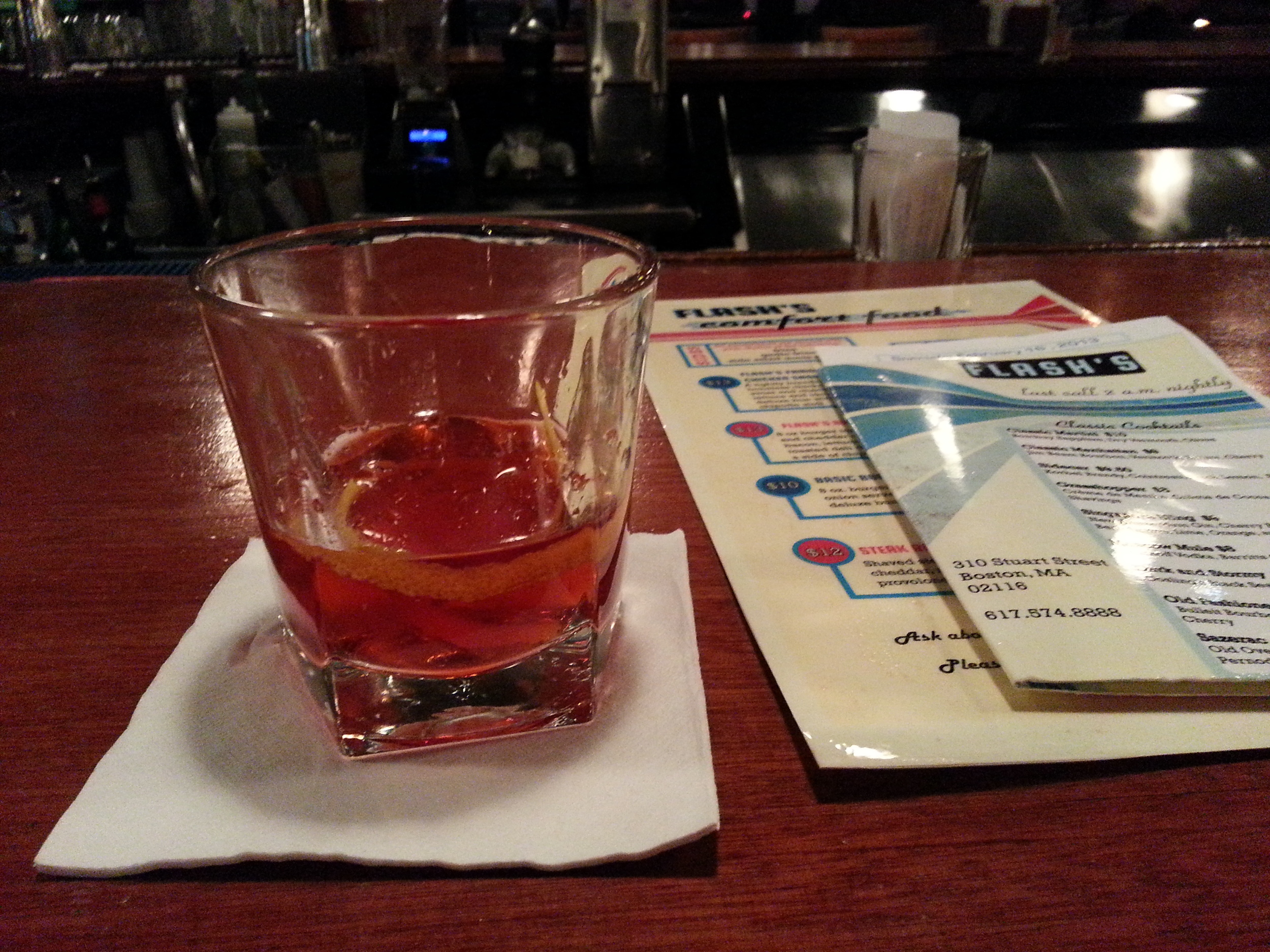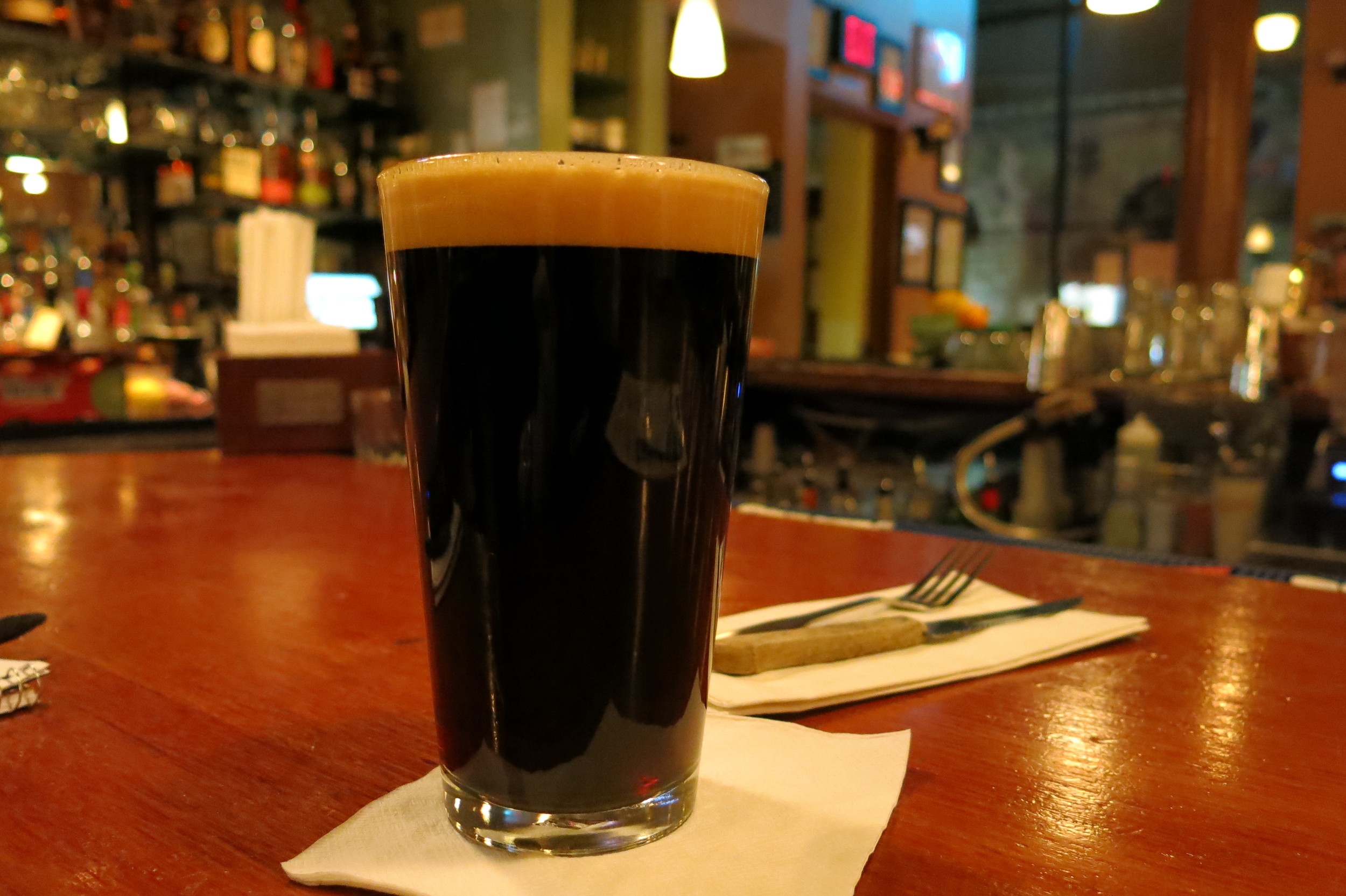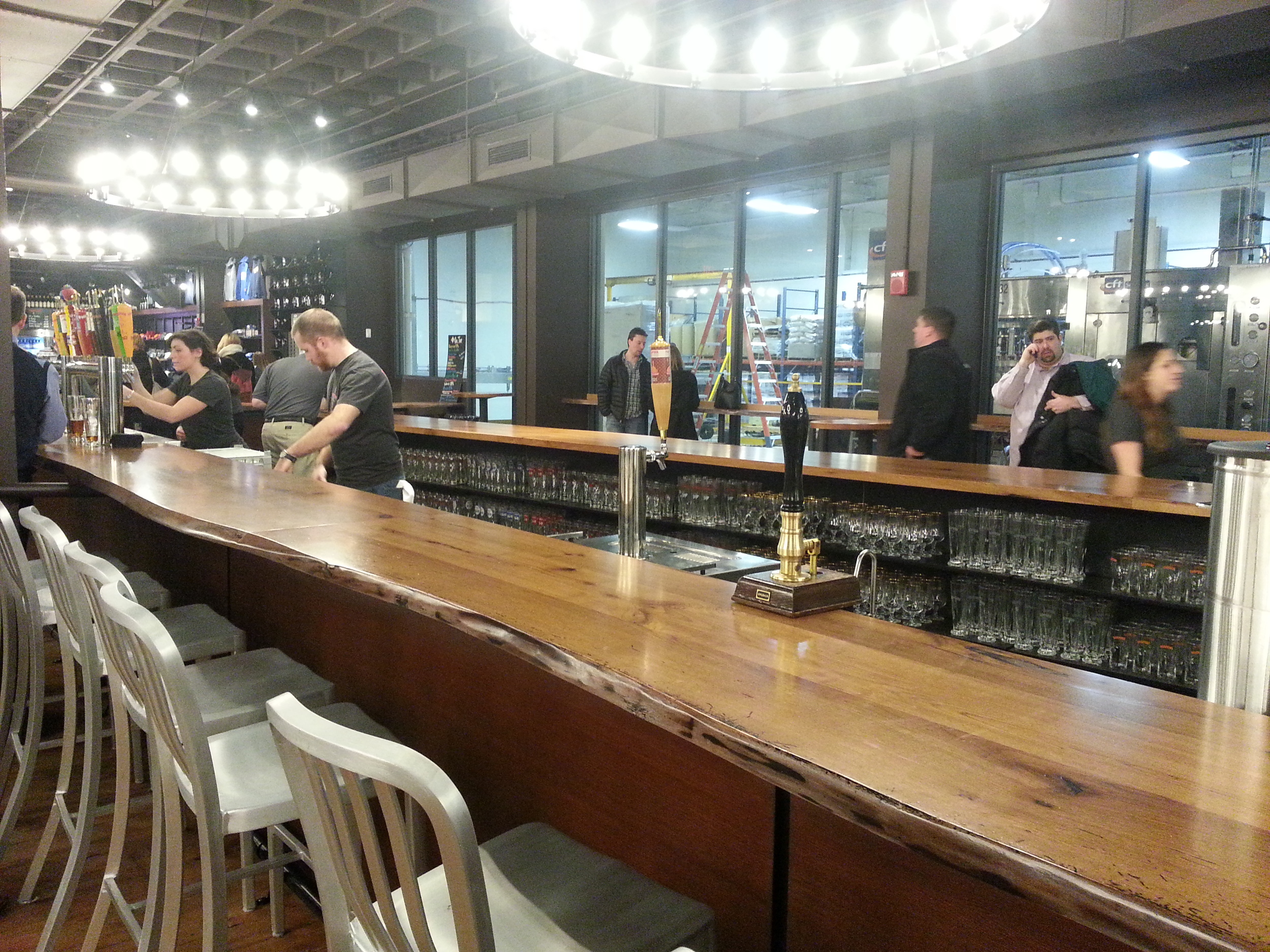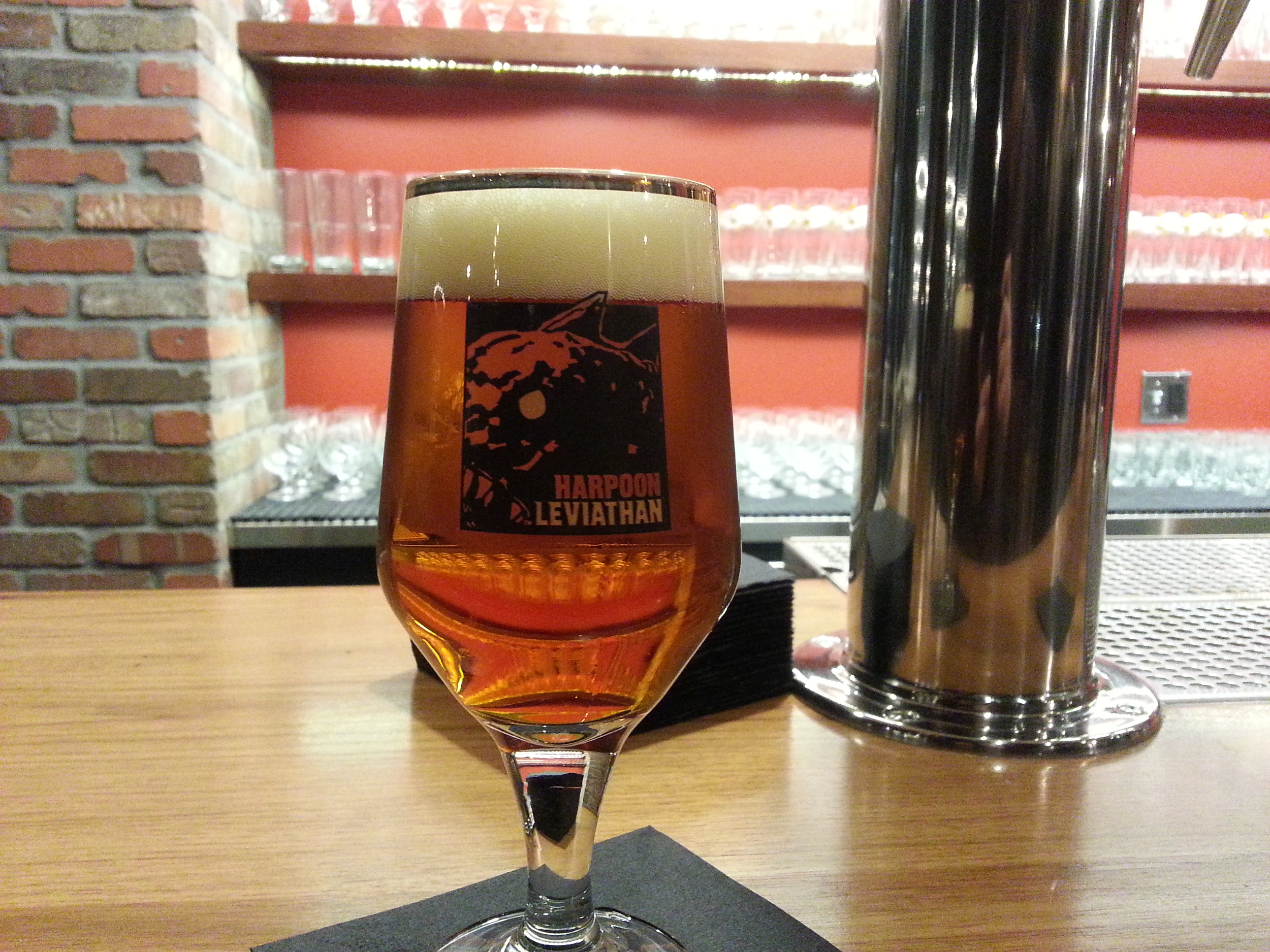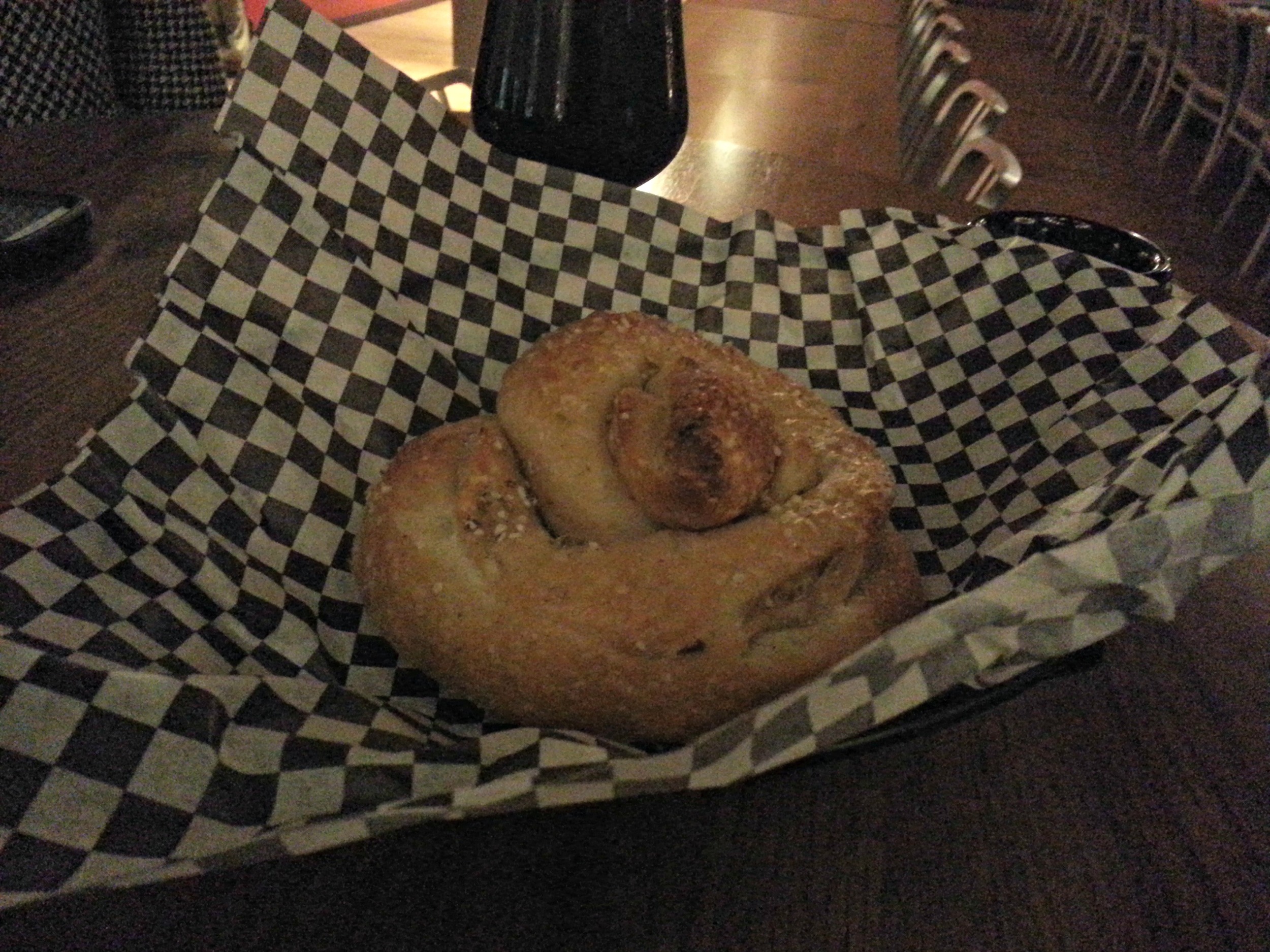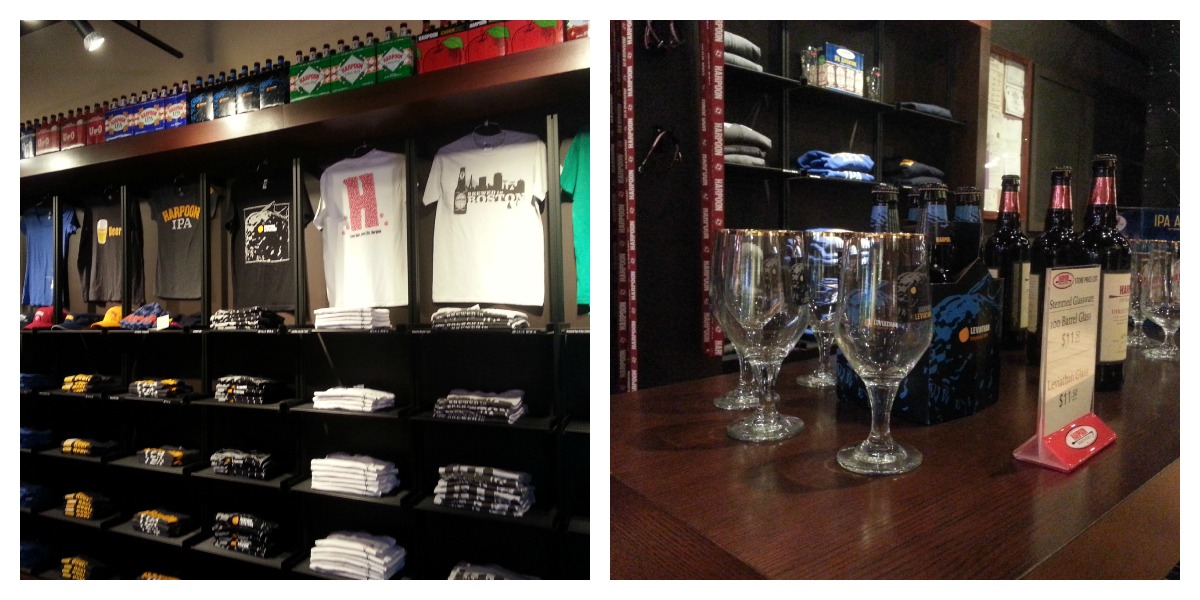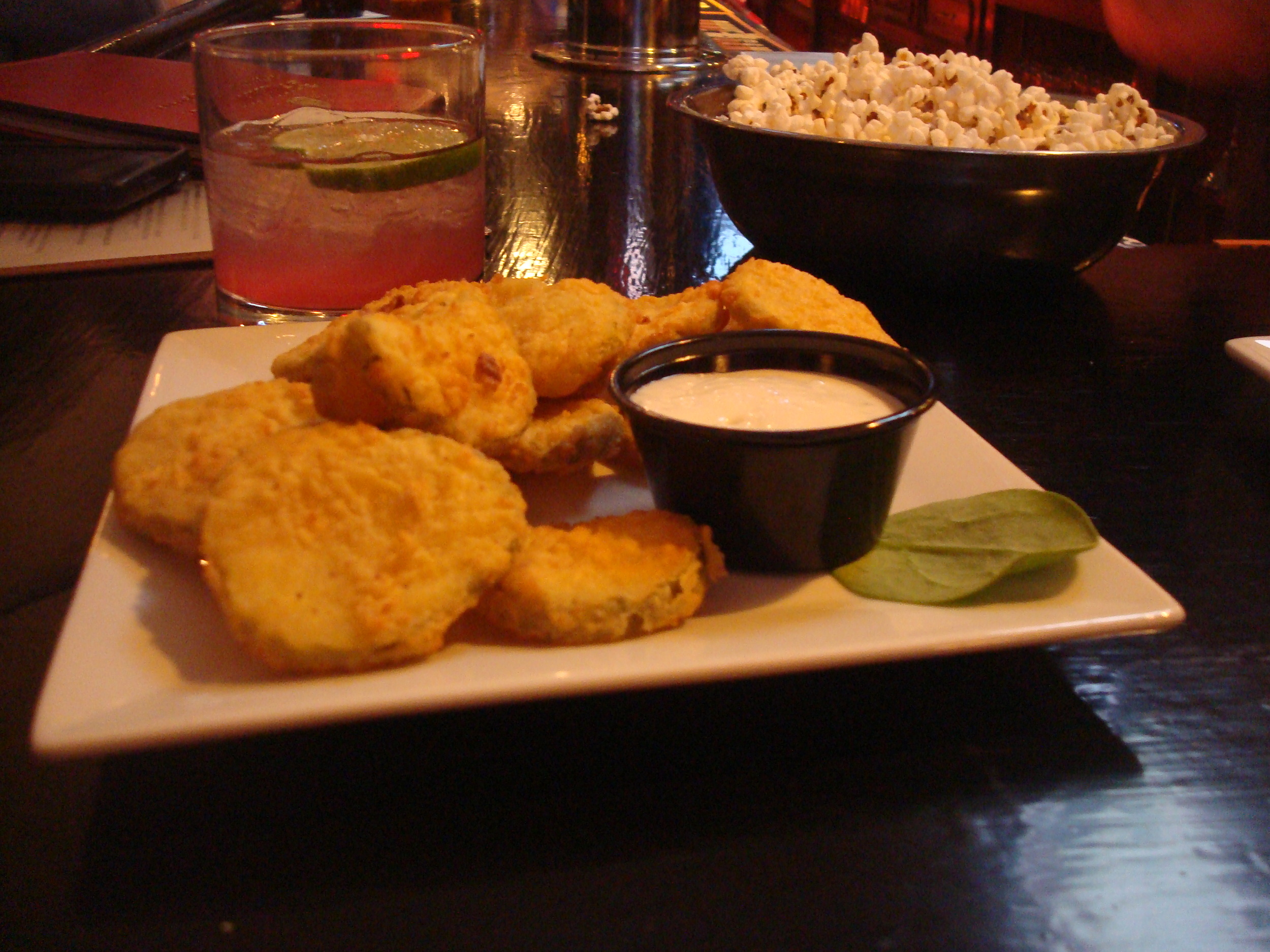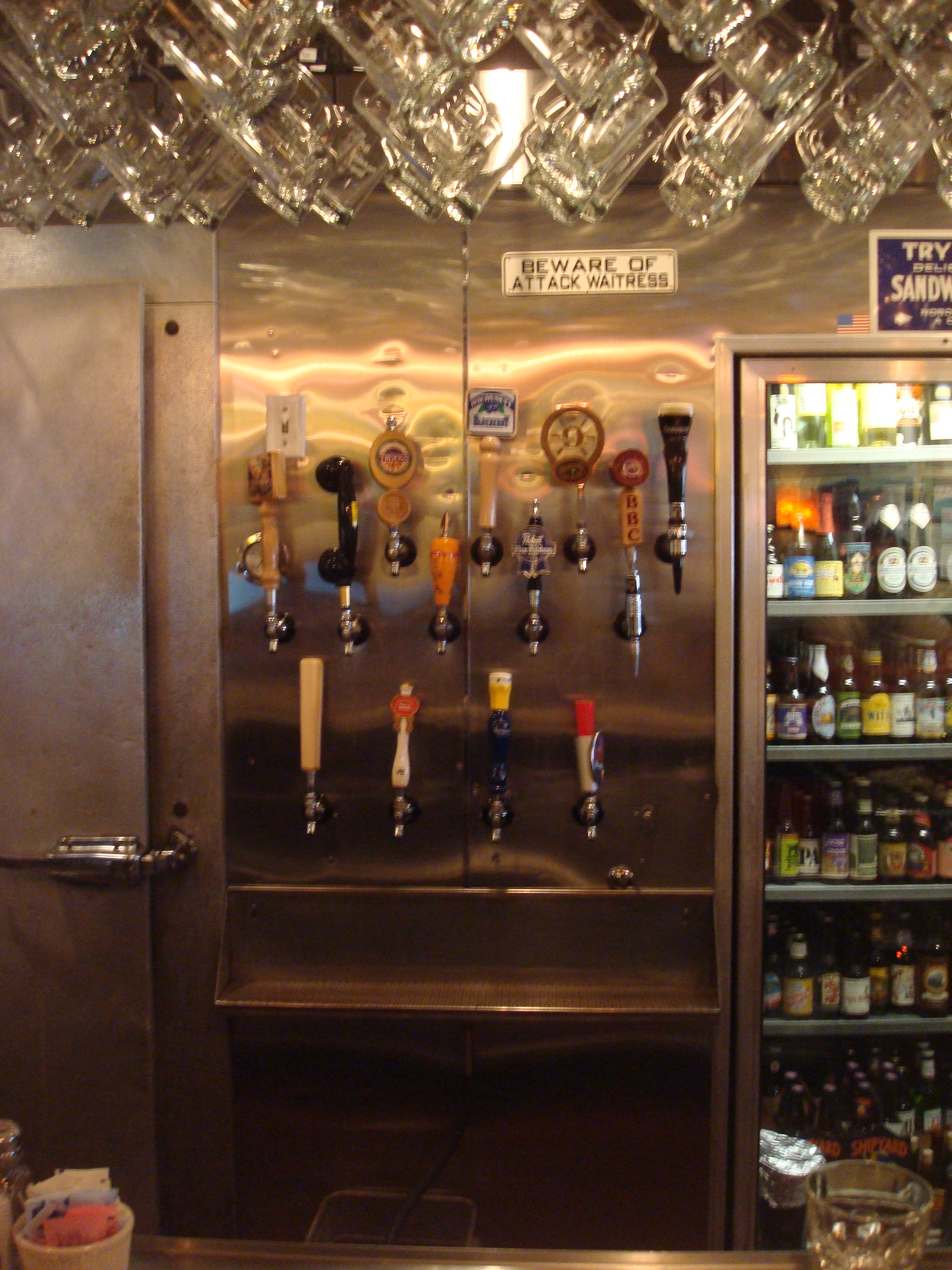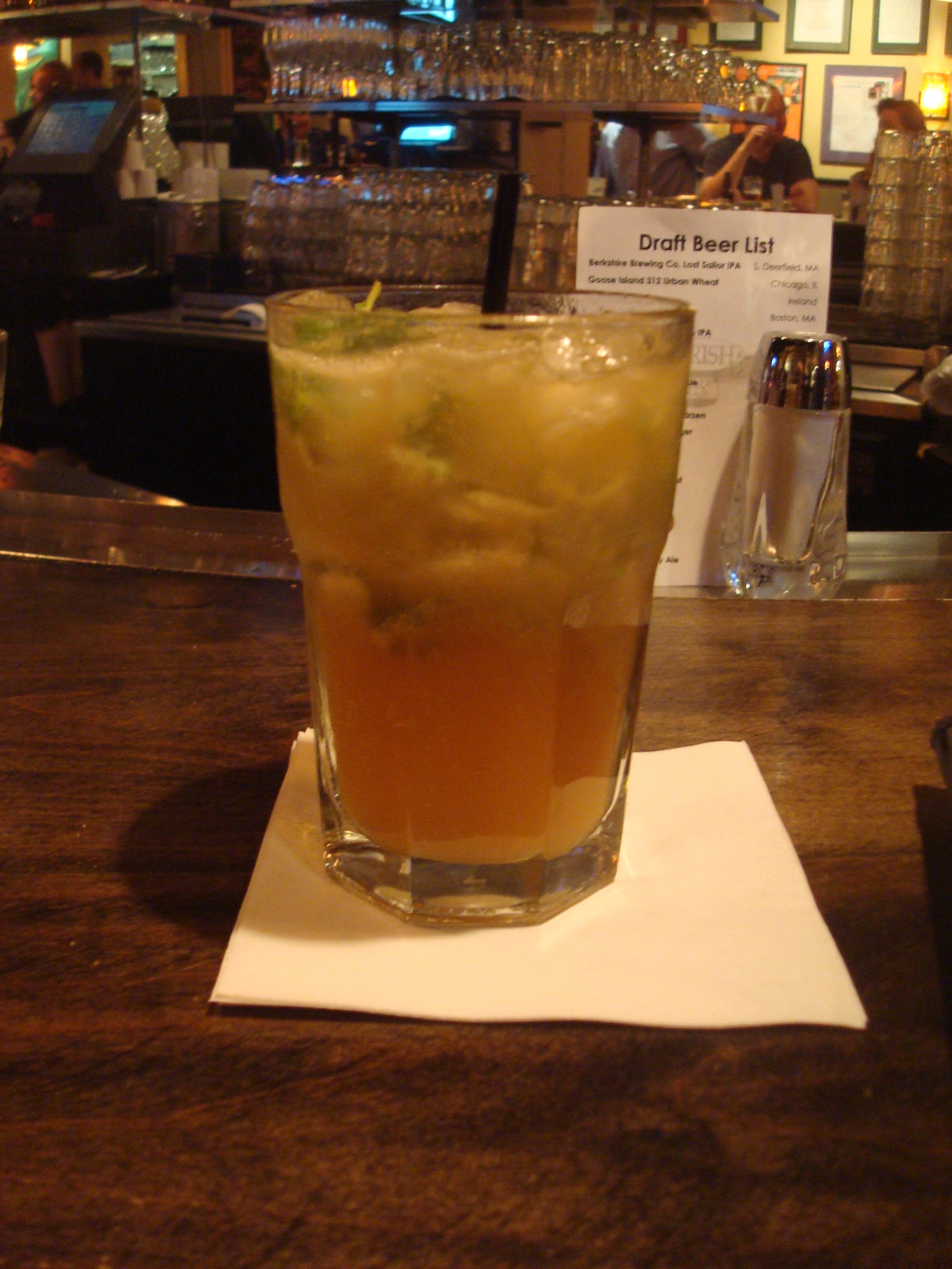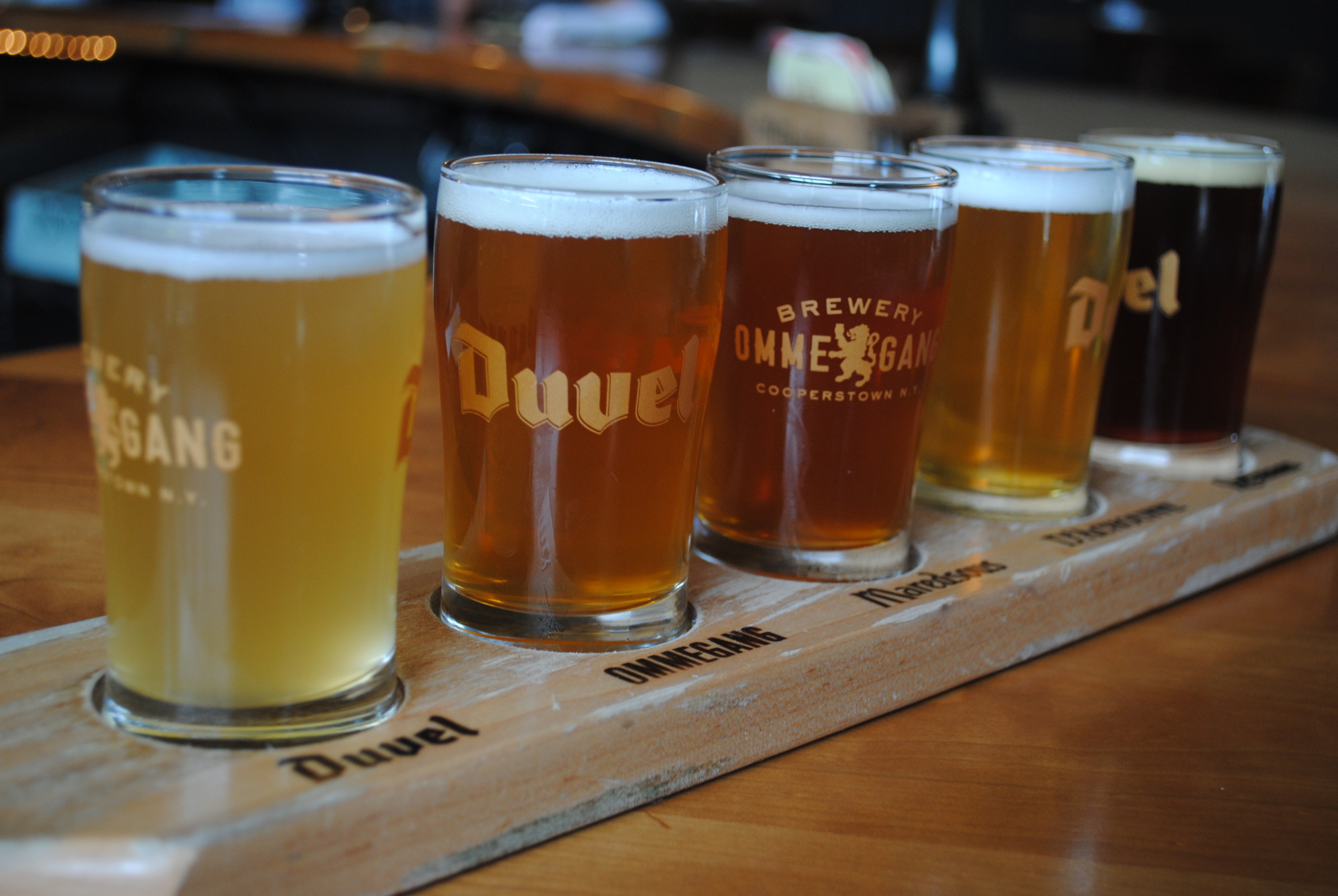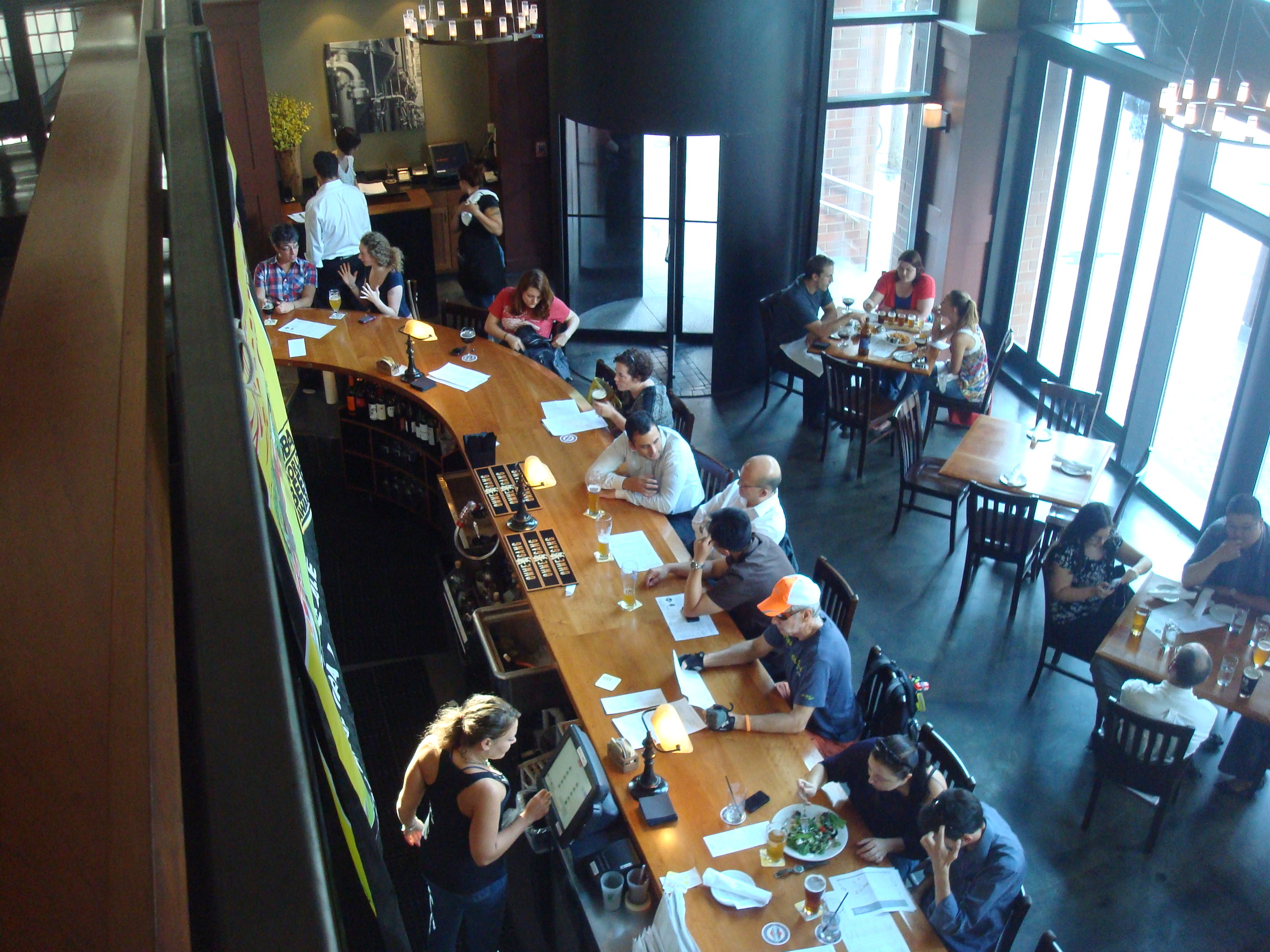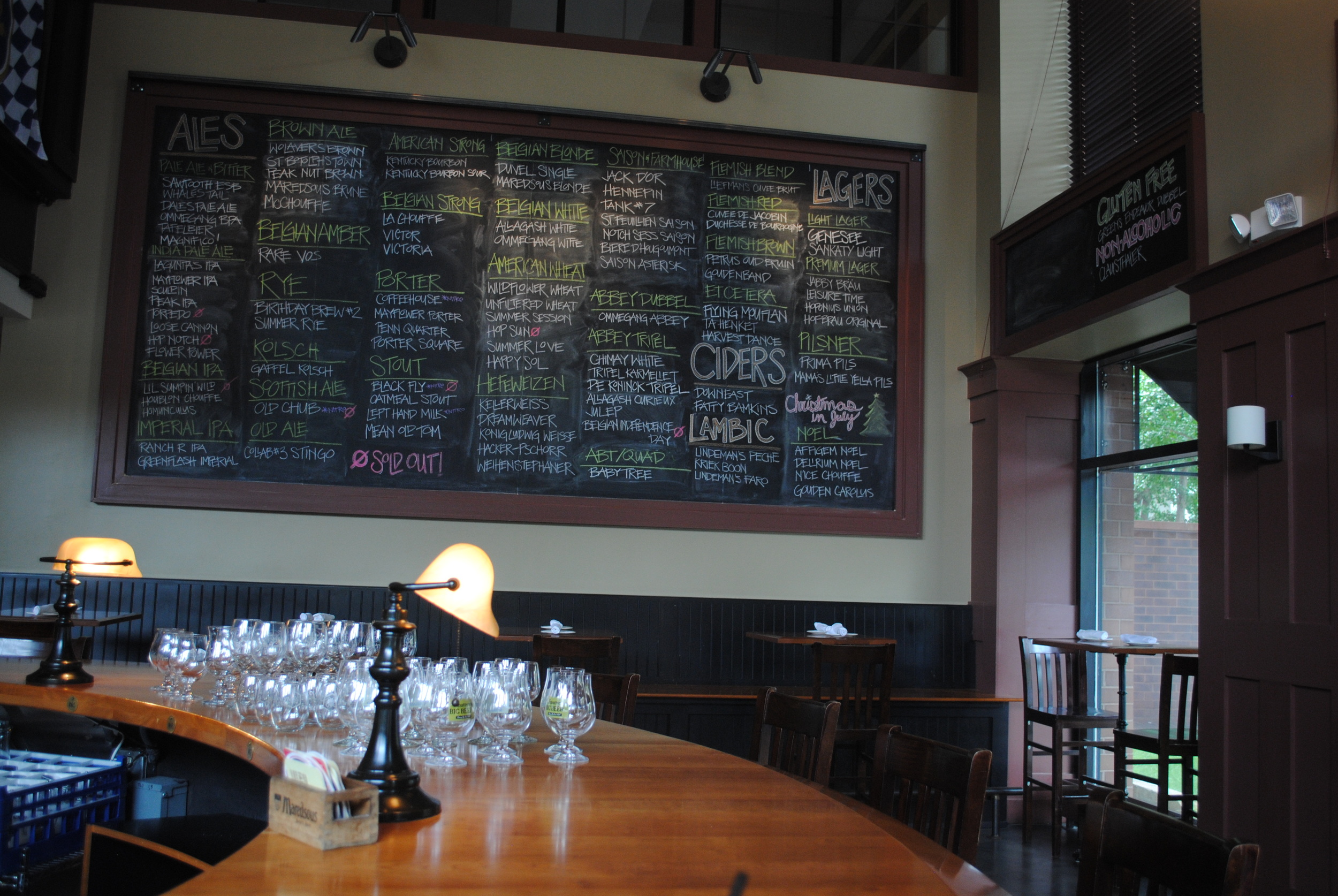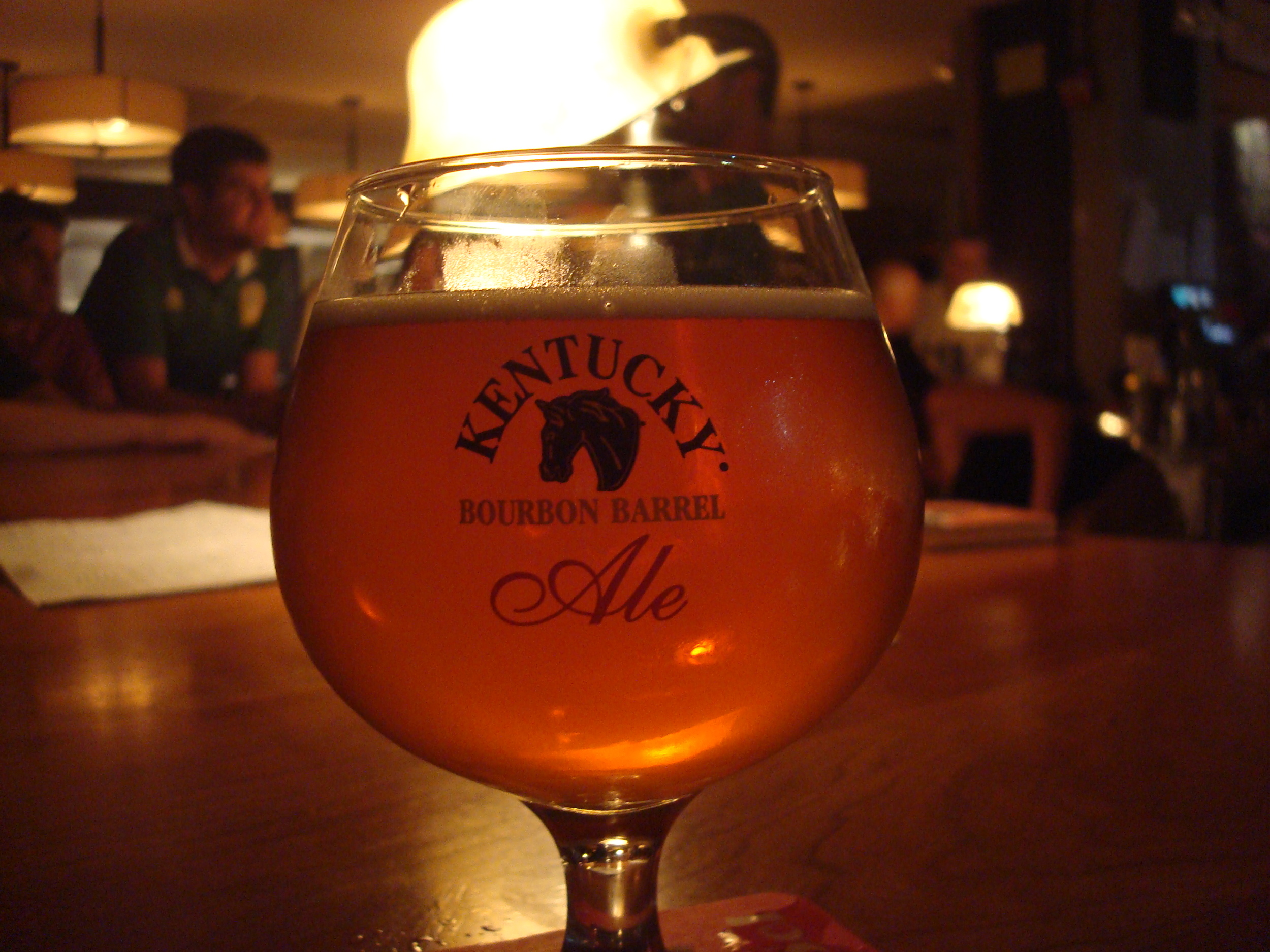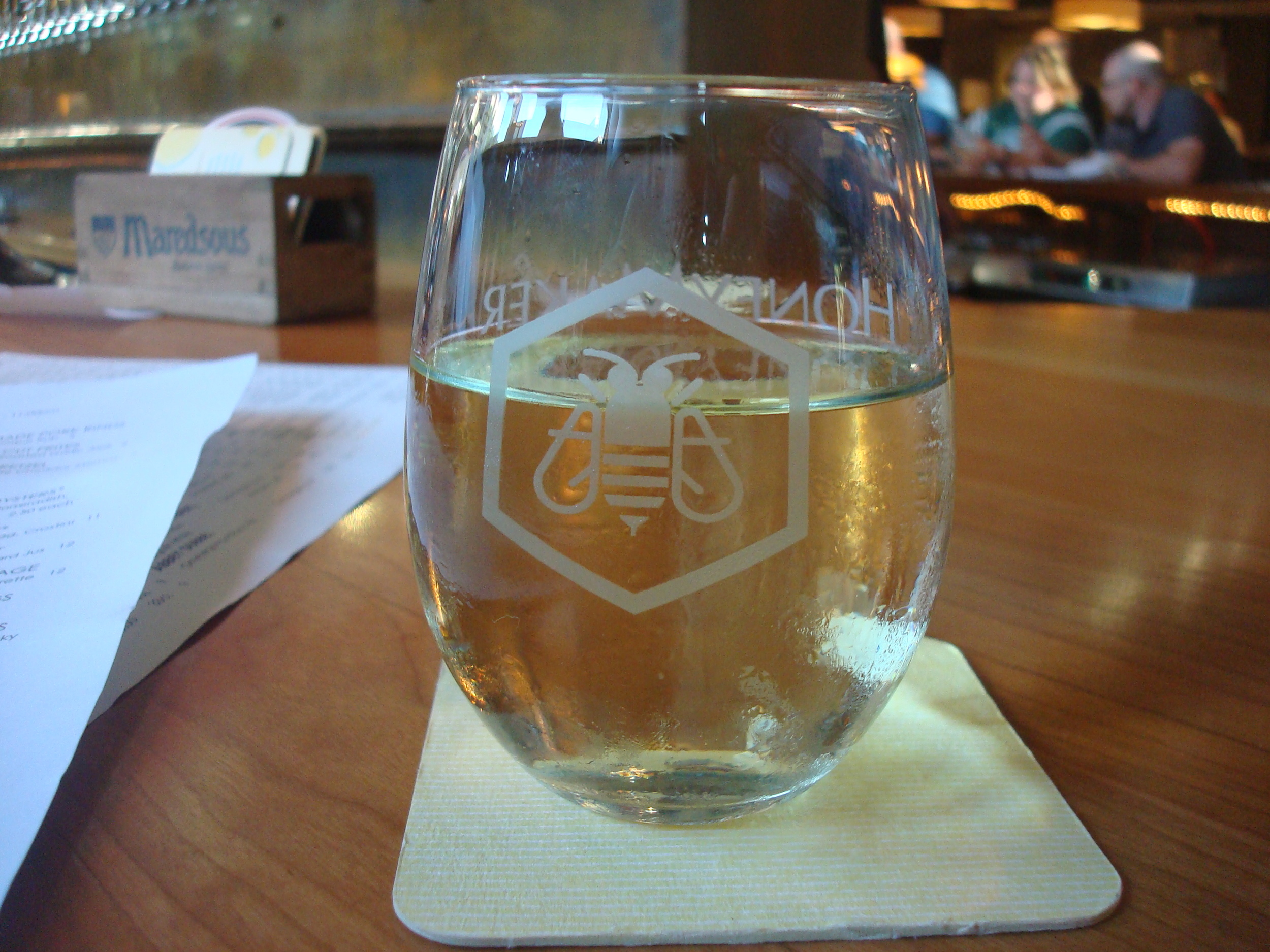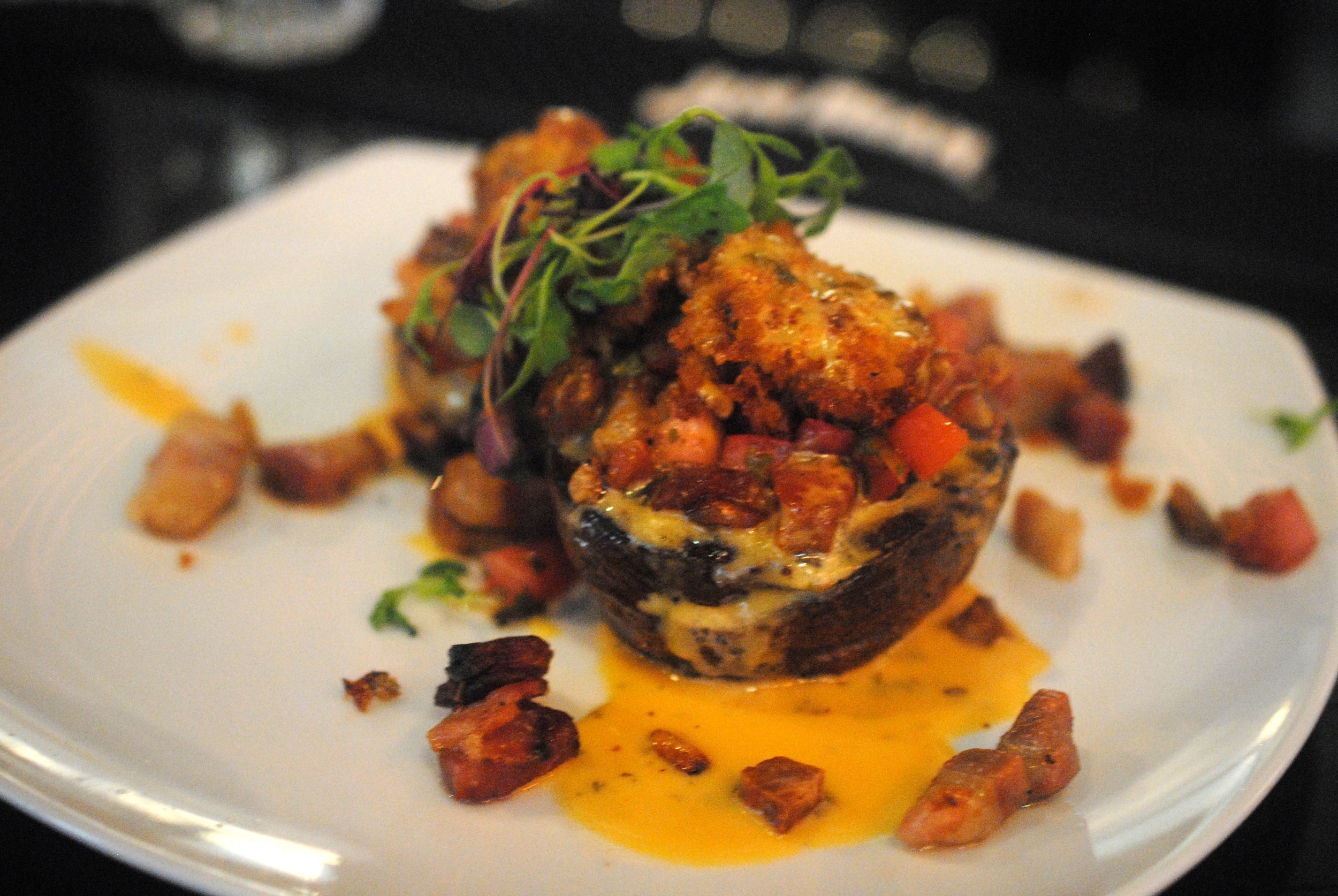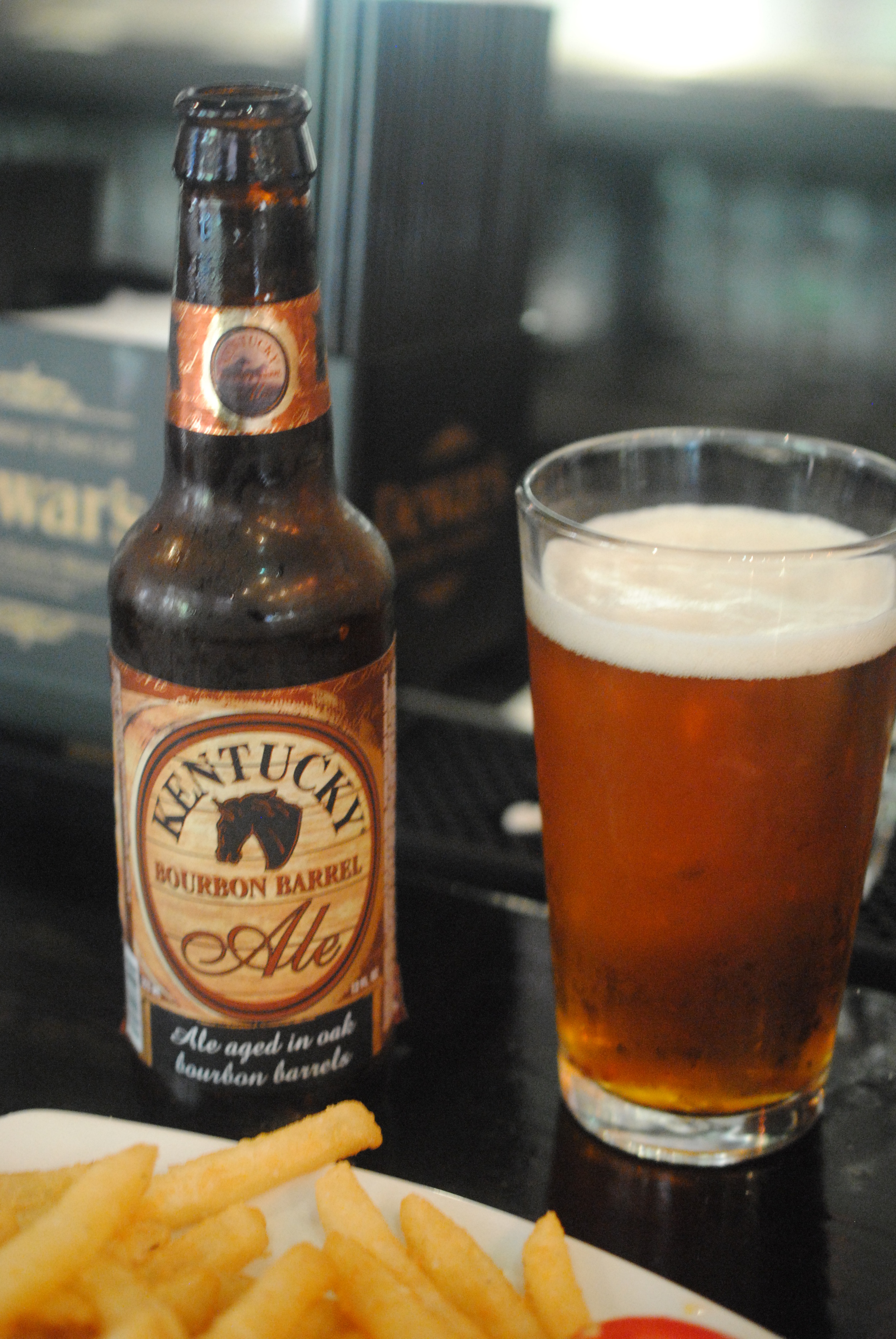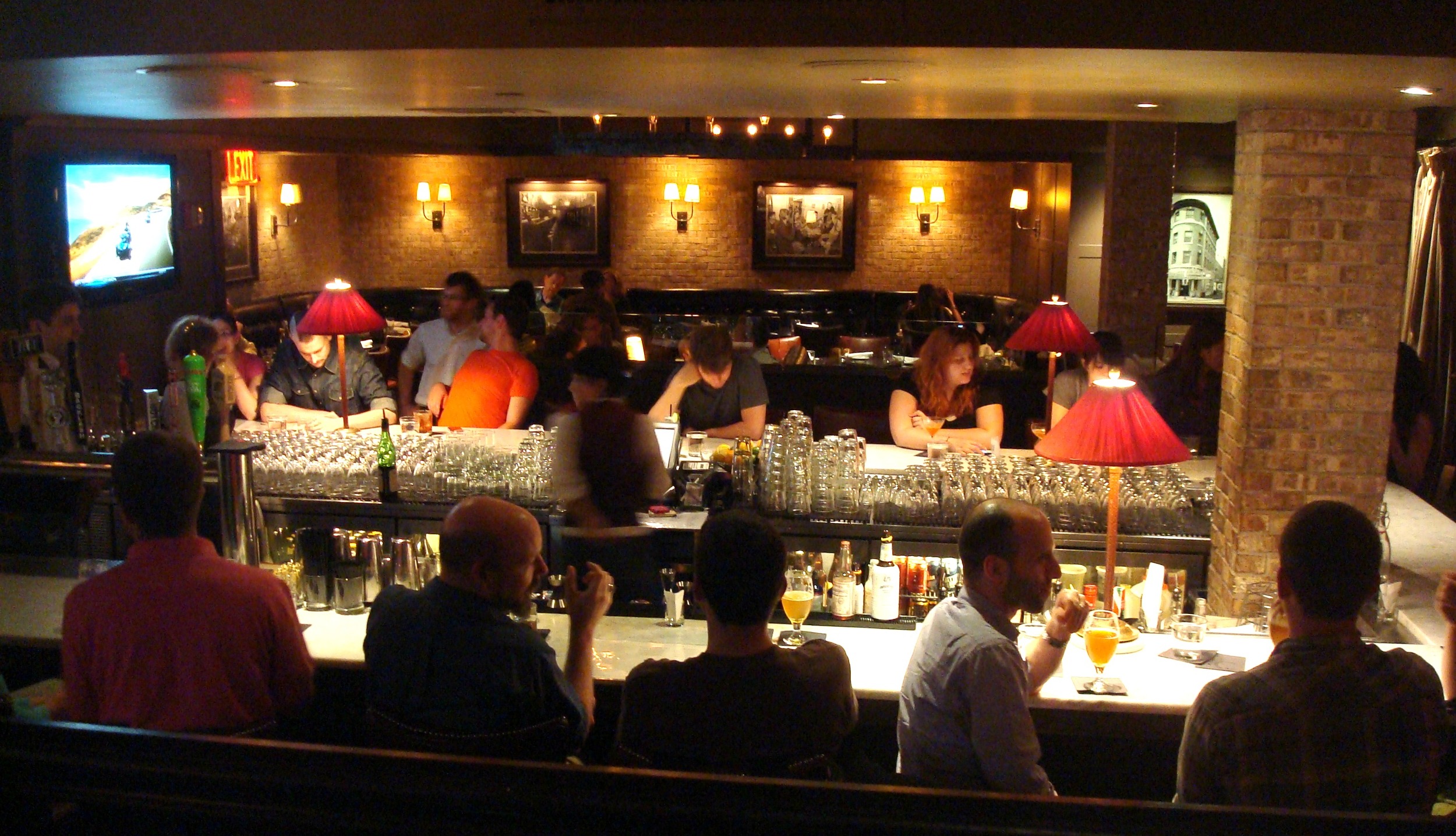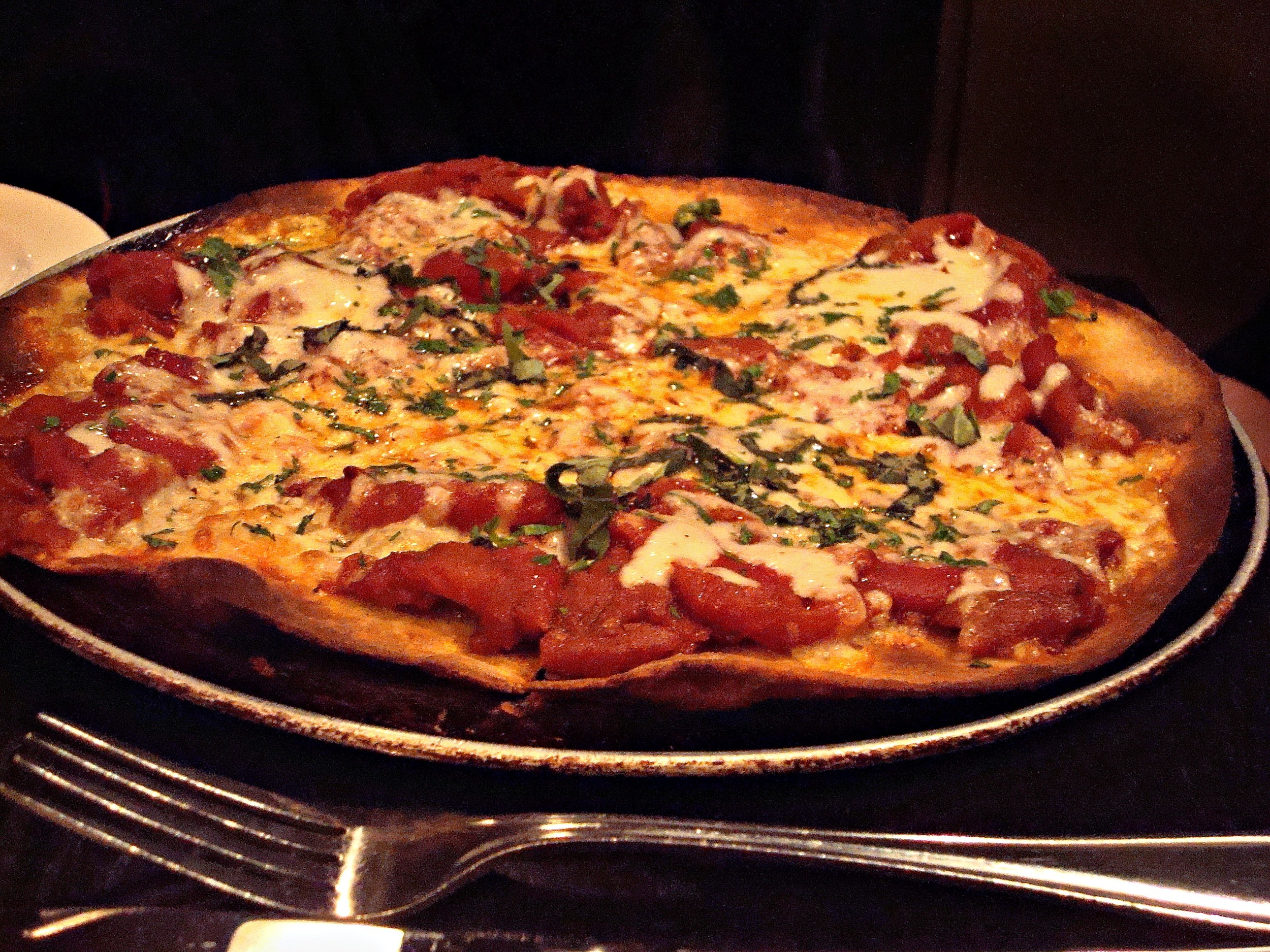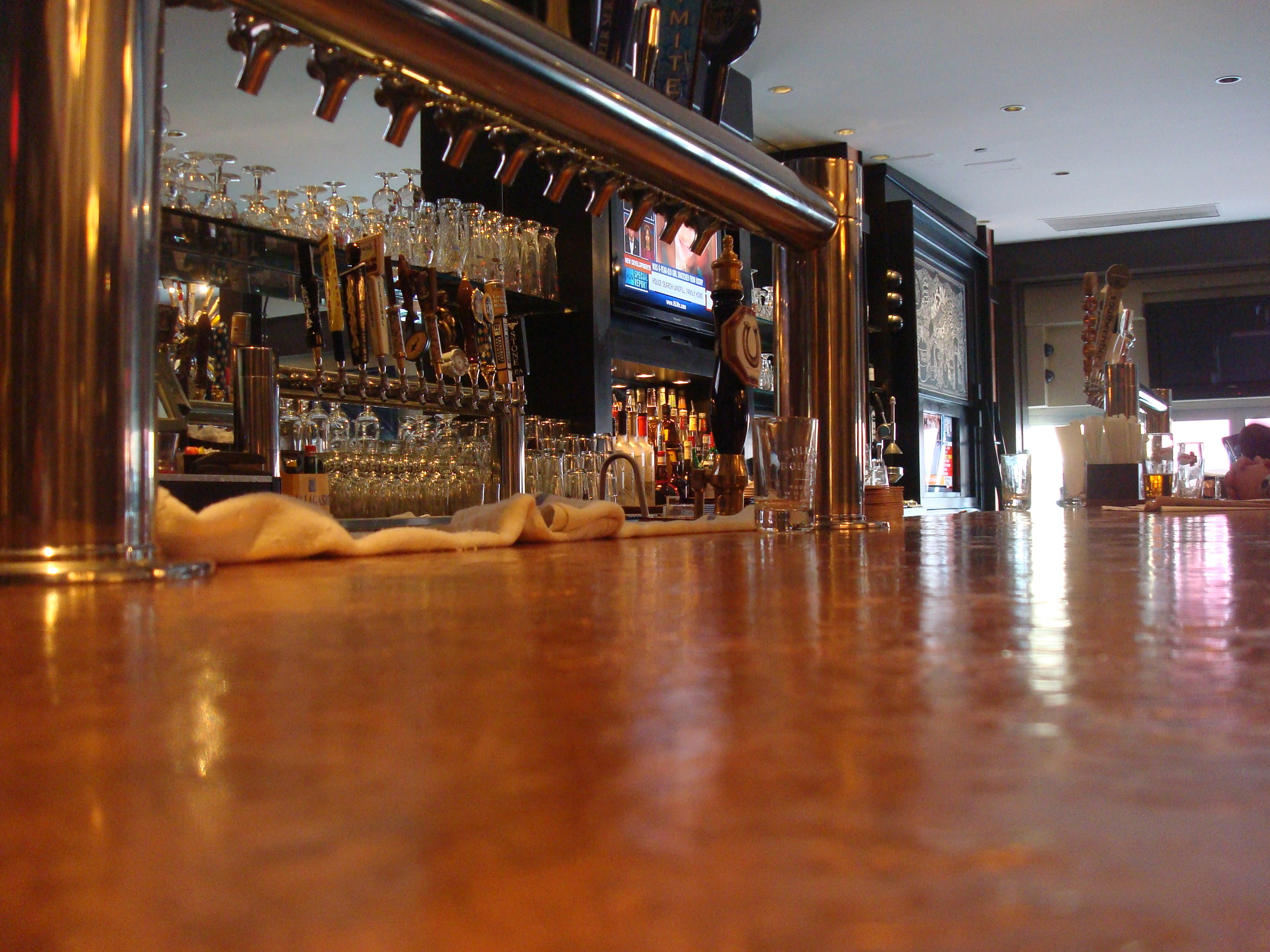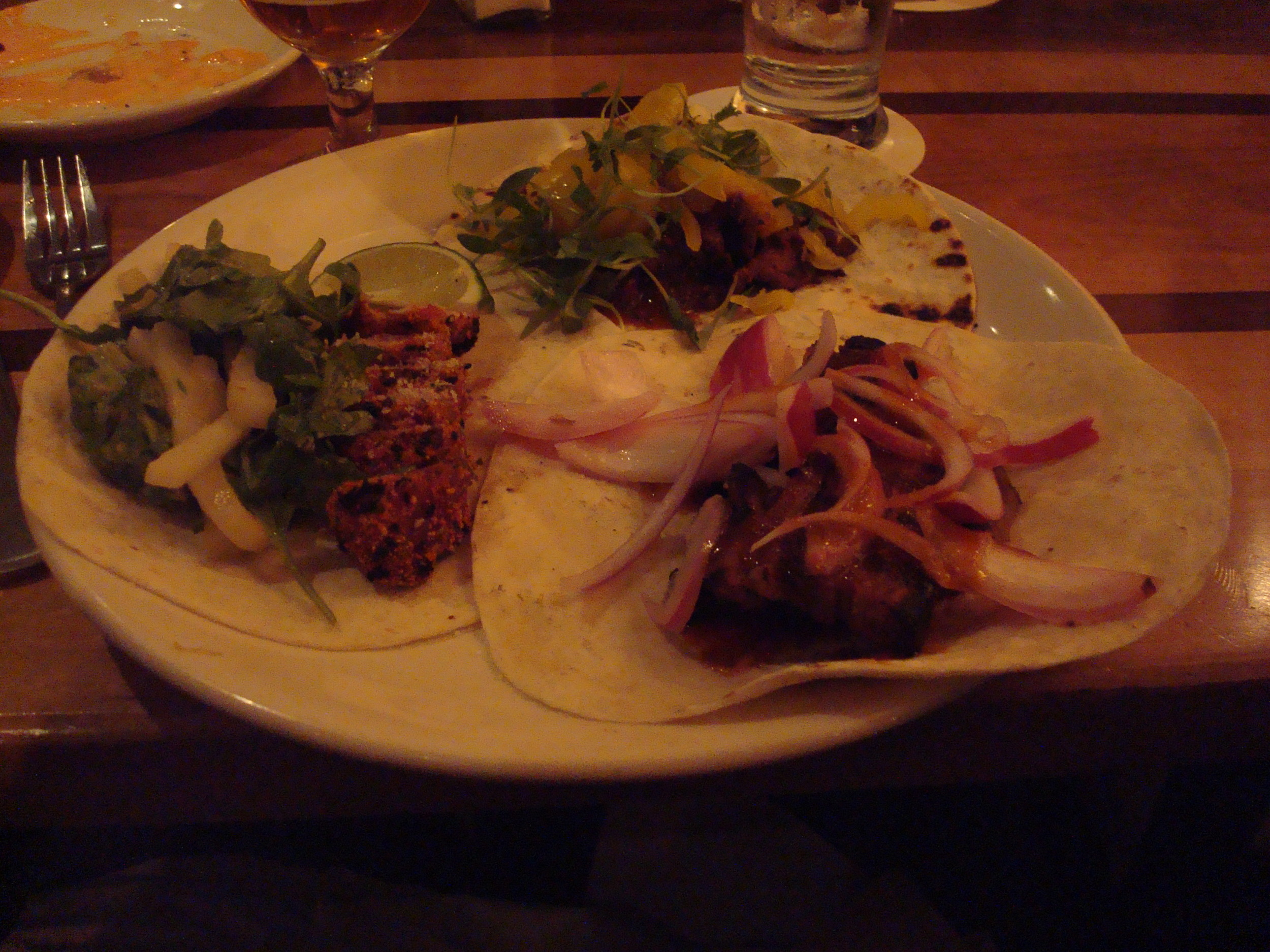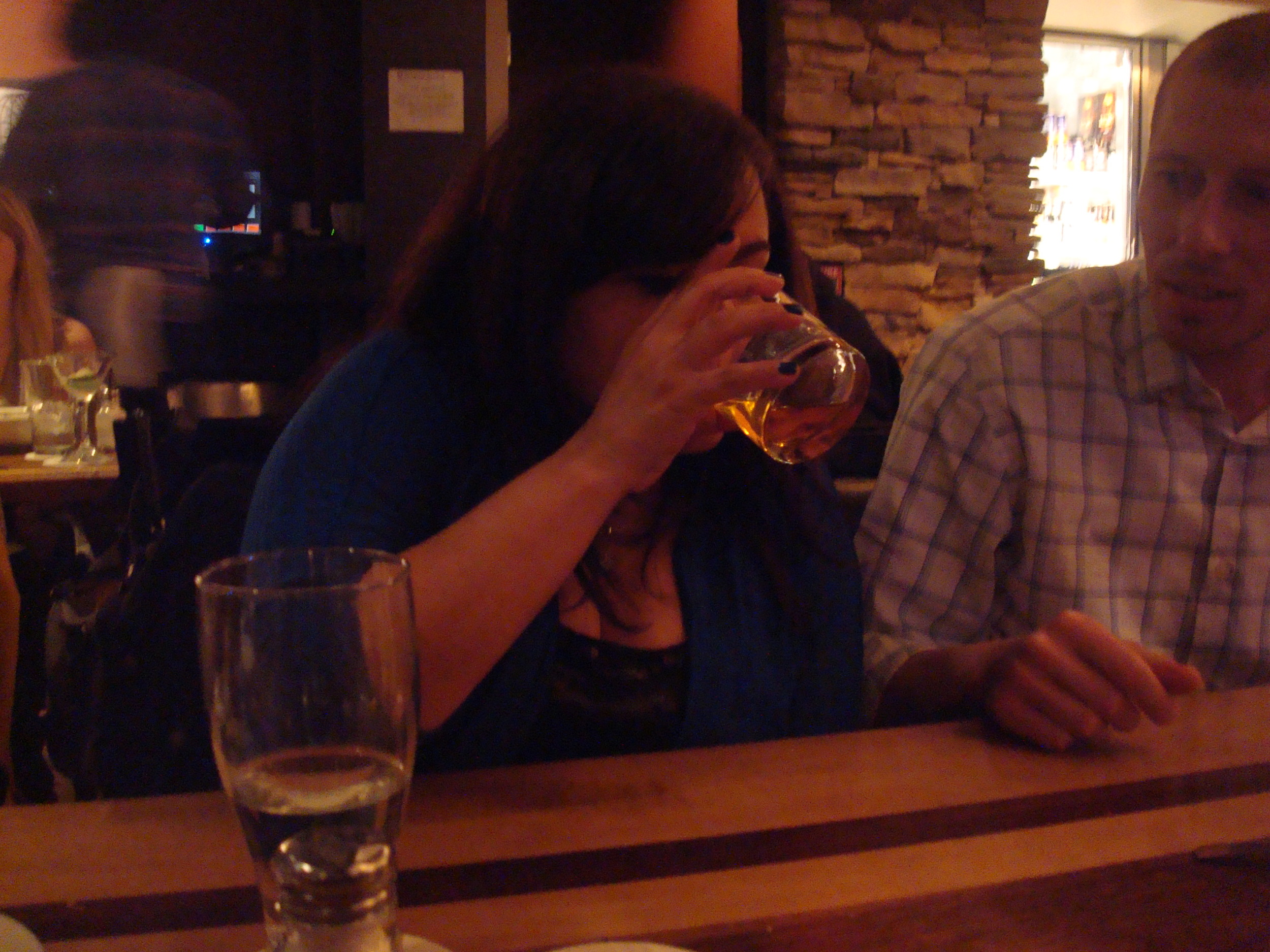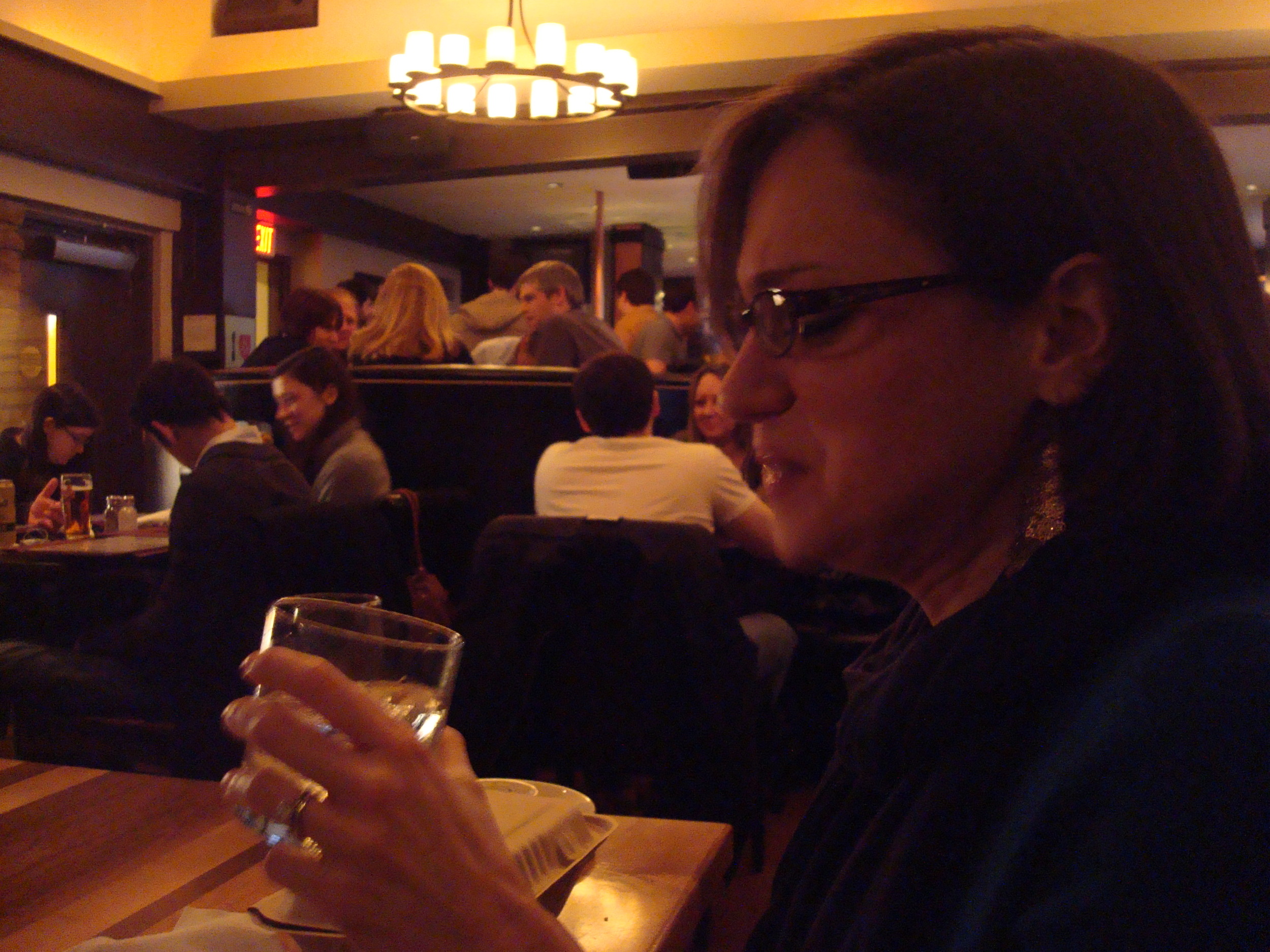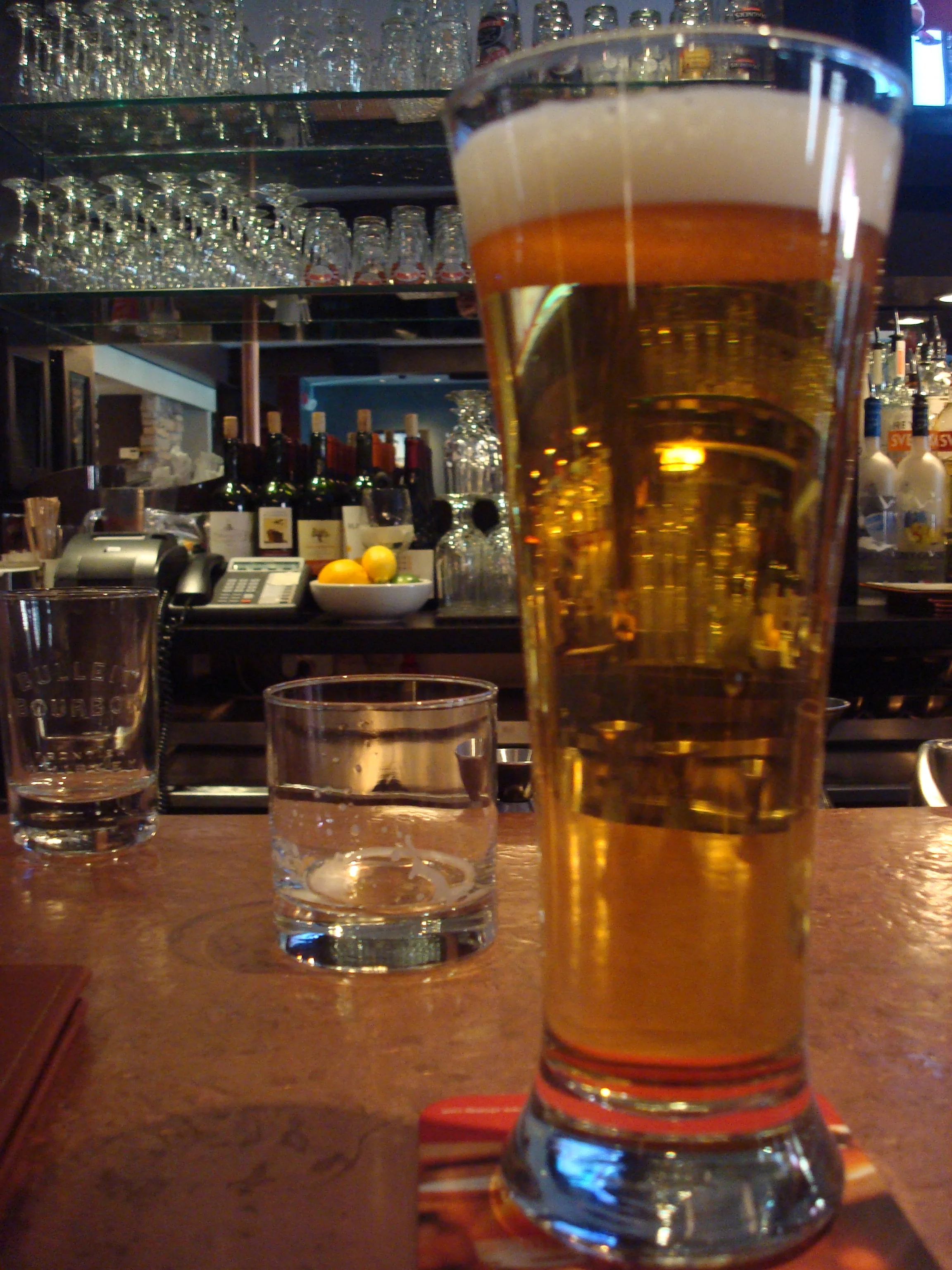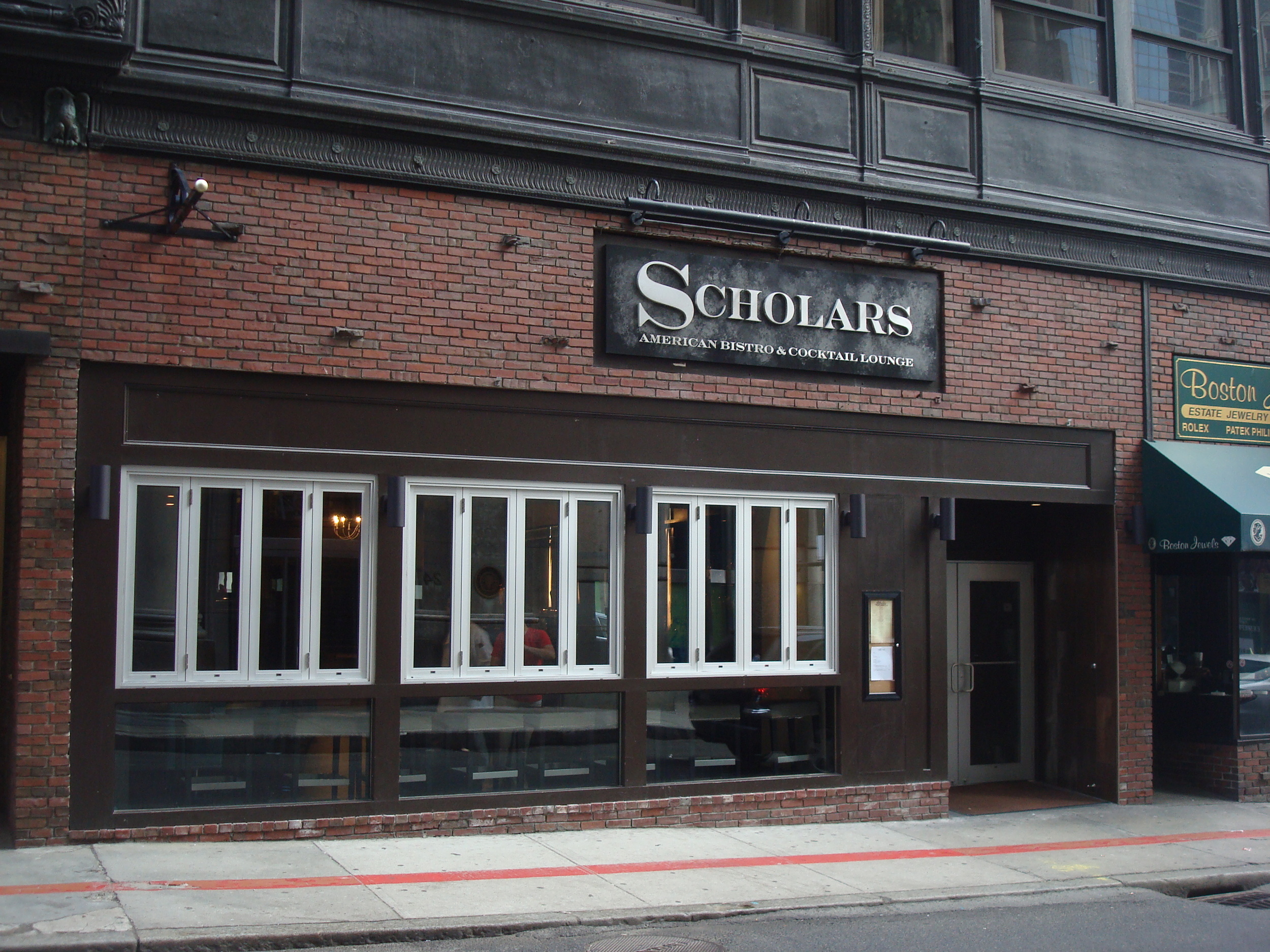The BBH Craft Beer Exchange
One for the Road – Key West: The Adventure Continues
About a year ago, my travels took me to one of the most celebrated tourist destinations in the United States – Florida’s Key West. It’s a city rich in culture, legend, and history; but since the occasion of my visit was my brother’s bachelor party, the vast majority of my sightseeing was relegated to the island’s many bars. I can’t say I had any complaints. But Key West is much more than just a cluster of bars. And so I promised myself that if I ever returned, I’d take the time to explore the nation’s southernmost city and get better acquainted with its unique character. This past fall, I did exactly that. With a little more time and a lot less urgency, and accompanied not by 13 other dudes bent on drunken shenanigans but by a small, dedicated team of fellow barhoppers, I was able to immerse myself in all those activities that make Key West famous.
Like getting up close to schools of radiantly colored fish on a snorkeling expedition.
Visiting the onetime home of Ernest Hemingway, a writer whose work earned him a permanent spot in the canon of American literature and whose exploits infuse island lore to this day.
Relaxing with a cigar on a warm, lazy afternoon.
Partaking in a sunset celebration in Mallory Square, with musicians and other street performers putting on a show while the sun gracefully bowed out for the day.
Visiting the concrete buoy marking the nation’s southernmost point and the mile markers designating the start/end point of U.S. Route 1.
Having an obligatory margarita at the original Margaritaville.
You could even say we made a few friends this time around.
Now don’t worry – we still did our share of drinking. We chugged down Pirate’s Punch at Captain Tony’s, walking away a few commemorative cups the richer.
We drank craft rum drinks at the Rum Bar at the Speakeasy Inn, listening to tales spun by bartender Bahama Bob.
And there was plenty of cheap, light-bodied beer to help us keep the good times afloat.
All of that might embody the typical weekend in Key West, but we also managed to find a few bars that stood in sharp contrast to traditional island drinking culture.
The Porch
You don’t see many people walking around Duval Street sipping a Guinness. No offense to the godfather of dark beers, but Key West’s perpetually temperate climate naturally calls for lighter fare – Corona, Land Shark, Bud Light, that sort of thing. Even the choosiest beer snobs tend to adopt a when-in-Rome attitude in the Keys. And that’s what makes a Key West craft beer bar so unusual.
The Porch occupies one half of the Porter Mansion, one of the oldest houses in Key West. Built in 1839, the mansion is named for Dr. Joseph Yates Porter, Florida’s first public health officer, who lived in the house for eight decades. Despite his death in 1927, some say Porter never actually left – the house is reported to be haunted.
But The Porch feels more homey than haunted, with two small, cozy rooms, hardwood floors, and a well-worn, scraped-up bar.
Movie posters and other memorabilia adorn the walls, giving the space the atmosphere of a man-cave. But for all its interior charm, the best place in The Porch to drink is, well, the porch.
This spacious veranda, decked out with tables, chairs, and ceiling fans, overlooks the mansion’s garden, with tall, leafy trees helping to keep the sun at bay.
All you need to complete the picture is a good brew, and The Porch offers 18 rotating beers on draft and another 50 or so in bottles. Everglades Pale Ale is one of a handful of local options. Bold but drinkable, with clear notes of citrus, it’s well suited to sipping on a warm afternoon.
High-quality craft cider has also made its way to the Keys. Rekorderlig Pear Cider is light, crisp, and sweet, with a natural, subtle pear flavor.
If beer and cider aren’t your thing, the B. Nektar Meadjito is an unusual mead that features elements of a mojito. It still has a strong honey profile but the sweetness is tempered by hints of mint and lime.
Address: 429 Caroline Street, Door #2, Key West, Florida
Website:http://www.theporchkw.com/
* * * * * * * * * * * * *
The Other Side
The Porch isn’t the only bar to have set up shop in this allegedly haunted mansion. On the other side of the hall is a bar called, appropriately, The Other Side. And like The Porch, it offers something that’s a bit of a rarity in Key West – classic cocktails.
Just as complex microbrews tend to take a backseat to lighter, simpler beers in Key West, you don’t see Manhattans or Old Fashioneds on many drink menus down here. Tiki drinks and rum drinks are norm, and they come in every flavor and variety – from hand-crafted cocktails made by a skilled mixologist to slushy plastic cups full of cheap booze poured out of a machine.
But The Other Side caters to drinkers with a more refined palate, or at least anyone looking for a change of pace from the sweeter drinks that dominate the island. It also differs notably in terms of décor; a marble bar, cushy bar seats, and a fireplace give The Other Side a sense of sophistication that sets it apart from the many dives that populate nearby Duval Street.
Comfortable leather couches, a coffee table, and bookshelf wallpaper make you feel like you’re enjoying a cocktail in a friend’s living room.
Not that it lacks that vital sense of Key West irreverence.
As with The Porch, I didn’t encounter any ghosts in The Other Side, but I did see plenty of spirits (har har har). The Other Side’s cocktail menu is loaded with classic choices like Manhattans, Blood and Sand, and Negronis, along with some inventive twists like the Raspberry Ramos.
Needless to say, there’s a Hemingway Daiquiri available, made with the excellent Papa’s Pilar blonde rum, grapefruit, lime, sugar, and maraschino liqueur, garnished with a generous wedge of grapefruit. This one was a tad sweeter than other Hemingway Daiquiris I’ve had, but I’m sure “Papa” would still be OK with it.
The French 75 is pleasantly dry and effervescent, combining gin, lemon, sugar, and Prosecco.
The unusually named Polish Apple Juice is a variation of the Dalmatian cocktail. Simple and sweet, made with Bison Grass vodka and a rich apple juice, it was like drinking a glass of apple pie.
And our bartender was happy to whip up something that wasn’t on the menu. The Million Dollar Sunrise is a variation of a Tequila Sunrise.
Address: 429 Caroline Street, Door #1, Key West, Florida
Website:http://theothersidekw.com/
* * * * * * * * * * * * *
Agave 308
Rum is unquestionably the most popular spirit in Key West, but tequila might take home the silver. This is, after all, “Margaritaville.” And who knows how much tequila gets consumed via shot glass in Duval Street bars while cover bands tear through classic rock and 80s tunes.
You can get sugary margaritas and shots of Jose Cuervo anywhere in Key West, but Agave 308 is the island’s only bona fide tequila bar.
Named for its address on Front Street, Agave 308 specializes in tequila-based craft cocktails made with fresh ingredients. There’s more than 50 types of tequila, a small selection of mezcal, and not one bottle of sour mix.
Despite being steps from popular destinations like Mallory Square and a block from Duval Street, Agave 308 has a tucked-away, hidden feel to it. Dimly lit, with candles on tables and funky artwork on the walls, it can serve as a respite from the hustle and bustle of those arduous Key West days.
You can, of course, get a margarita here, which by virtue of its being made with fresh lime juice and high-quality tequila will differentiate it from what you might find elsewhere. But bar manager Jules Mavromatis’s drink list is fun and inventive and bears some exploring.
The Basil Citrus Splash seems to be the most popular offering, and it’s easy to see why. Made with Milagro Reposado tequila, orange, agave, and fresh lime. The distinctive herbal aroma of a basil leaf accompanies every sip.
The Mezcalita swaps tequila for mezcal and adds jalapeno for a smoky, spicy twist on a margarita. It’s garnished with grilled pineapple, and bits of chopped cilantro contribute an aromatic freshness.
There’s also a variety of house-infused tequilas, with flavors like ranging from strawberry to pineapple to jalapeno.
I mean, if you’re going to do a shot of tequila, you might as well make it a good one.
Address: 308 Front Street, Key West, Florida
Website:http://agave308.com/
* * * * * * * * * * * * *
On the final night of my trip, before heading out for the evening, my brother and I were sitting in the hotel bar, quietly sipping drinks and waiting for everyone else to get their shit together. At one point we toasted and made a solemn pledge that we would someday return to this quirky tropical paradise. Key West may seem like party central and all that, but having vacationed there twice now with my brother, it’s become a place where we’ve not only drank and laughed but bonded and made a lot of memories (even if some of them are a little hazy).
And one of the great things about Key West is that when you go back, whether it’s a year later or five years, or ten, so much of it looks exactly the way you remember it. Every day will end with a breathtaking sunset.
Sloppy Joe’s Bar will be in the same place it’s been since 1937. Same with Captain Tony’s Saloon.
There’ll be icy rum drinks everywhere you look and plentiful cheap beer to cool you down on a hot day.
With its deep roots and colorful history, much of Key West feels preserved and unalterable. At the same time, the island isn’t impervious to trends. Microbrews, old-school cocktails, and handcrafted drinks will always be exceptions in a city where people like to keep things simple, but Key West is anything but uniform. And I’d like to think when I go back someday, there’ll still be plenty to discover.
* * * * * * * * * * * * *
Copyright © Boston BarHopper. All Rights Reserved.
The Merchant
Aging, weathered signs atop discount jewelry shops. Narrow side streets that never see the sun. An enormous, unsightly crater where once stood a humble but iconic local institution.
Amid the budget retailers, seemingly endless construction, and a few long-vacant storefronts, it’s almost difficult to believe that Downtown Crossing was once the thriving epicenter of Bostonian commerce and culture. It’s still a bustling neighborhood, of course, full of shops, food carts, and throngs of pedestrians traipsing through brick-lined streets that are mostly closed to vehicular traffic. But these are mere vestiges of Downtown Crossing’s early 20th century heyday, when Jordan Marsh and Filene’s pioneered the concept of department store shopping and Bostonians flocked to the downtown area to eat, visit theaters, and browse the latest fashions.
The neighborhood’s popularity and prestige diminished rapidly after WWII, when the suburbs siphoned off a quarter of the city’s population and new malls pushed stand-alone department stores to the brink of obsolescence. Since then, the aspect and character of Downtown Crossing have been in a state of perpetual flux – bold store openings and quiet closings, stop-and-start efforts at revitalization, and prolonged periods of general seediness.
But downtown Boston finally started trending in the right direction when Suffolk University and Emerson College expanded their campuses into the longtime shopping district. Their presence attracted new businesses, many of which embraced the golden era of the historic neighborhood. When Stoddard’s opened in 2010, for instance, it assumed the name of the 19th century cutlery shop that once operated in its space. The long-shuttered Paramount Theater, a 1930s-era movie palace that was among the first cinemas in Boston to show “talkies,” was renovated and reopened as a modern performing arts venue.
Likewise, the newest contributor to the rebirth of the downtown area hints at the bubbling potential of this evolving neighborhood while paying homage to its storied past.
The Merchant, a self-described American brasserie, opened its doors last month on the edge of Downtown Crossing and the cusp of the Financial District. Serving an eclectic French-American menu with an emphasis on local ingredients, the large restaurant and bar evokes the sophistication of old-school Boston dining and infuses it with a modern sense of comfort and style.
A long bar with a beautiful wooden top is surrounded by 21 comfortable leather seats. The navy blue, pinstriped aprons donned by the bartenders recall an age gone by, as do the vintage-looking brass table lamps spaced along the bar’s surface.
A spacious dining area is populated by small tables and a few red leather booths. The dark wood and burgundy color scheme gives the interior a conservative, distinguished look, but globe lighting, chandeliers, and brass floor lamps give the space a warm, welcoming appearance.
“We wanted something that would stand the test of time,” co-owner Shane Smyth says of The Merchant’s look and feel. “Not something trendy, not something that might look good for 5 years and then you have to do it over again. We wanted to open a place that was classic, timeless.”
For that, they couldn’t have chosen a more auspicious location – the previous tenant, luggage retailer London Harness, occupied the space for nearly a century. “We wanted to keep some of the character, keep with the merchant theme,” he explains. They retained portions of the infrastructure as well. “We kept as much of it as we could,” Smyth says. “We were able to keep the mezzanine, the flooring, the ceiling is original.”
The notion of a brasserie originated in France and refers to an informal restaurant that serves food all day and late into the evening. It also translates to “brewery,” and while The Merchant doesn’t brew its own beer, it does boast an impressive selection. The 36 draft options span a broad range of styles and feature a number of regional offerings, like Slumbrew Happy Sol.
“Being in the Financial District and downtown, we couldn’t have all craft beer,” Smyth acknowledges. “But we want to have something for everyone, and having that many lines gives us the opportunity to change it up on a regular basis.”
A few local, limited release beer specials are posted on a chalkboard behind the bar. This farmhouse saison from Fort Point’s Trillium Brewing is crisp and fragrant.
If microbreweries are too big for you, try a beer from Boston’s only “nanobrewery.” Each batch of Everett’s Idle Hands Craft Ales is limited to five barrels, making it a pleasant surprise to find one on draft. This Belgian stout, appropriately called “Absence of Light,” has notes of chocolate and unexpected hints of fruit and spices.
That celebration of local wares and devotion to craft is especially evident in the food menu. Executive chef Matt Foley and sous chef Tim McQuinn are both alumni of the renowned Craigie on Main, so it’s fair to say they know their way around a kitchen. Their menu centers on locally sourced ingredients and caters to just about anyone who might be passing through downtown – theatergoers seeking a quick pre-meal bite, businesspeople on lunch from the adjacent Financial District, and those in search of a creative, meticulously prepared meal. The kitchen even stays open until 12 or 1 a.m., depending on the night of the week, for those working the late shift.
Traditional French items like duck l’orange and steak frites share space with steak and eggs, slow-roasted chicken breast, seafood dishes, and a raw bar. Chef Foley brings elements of Craigie on Main’s “snout to tail” approach to The Merchant, with items like the crispy pig ear on the late-night menu and the most eye-catching entry on the appetizer menu – veal sweetbread “nuggets.”
“Sweetbread,” for those of you sort of know but are afraid to know more, is a most delightful name bestowed upon the thymus or pancreas of a calf, pig, or lamb. Nothing about it is sweet and there’s usually no bread involved. I guess the term just sounds more appetizing than “organ meat.” The Merchant’s tasty version is reminiscent of a veal cutlet, but milder and with a much softer texture. Crunchy house-made chips provide a simple contrast.
More straightforward options are available too, if that’s your speed. Crispy wings are served in a sweet and sour sauce over a spicy Asian slaw.
And there’s nothing deceptive about the hot and cold crab dish, which is exactly what its name implies – a traditional, seared crab cake topped with a zesty tartar sauce, and a chilled citrus crab salad topped with a soft house-made pretzel.
Even the bar staff seem genuinely impressed with the kitchen’s efforts. Andy, a veteran bartender who’s worked at No. 9 Park and Clio, remarks that Foley always manages to get “amazing” crab. Bartender Becca calls the sweetbread “special.” Another bartender, Mike, is effusive as well. “They put more work into food preparation than I’ve seen anywhere else,” he says, noting that in addition to the chefs’ locavore tendencies, they make nearly everything from scratch and brine meat for at least 24 hours. That even goes for the phenomenal country fried chicken sandwich on the lunch menu.
Topped with a sweet, nutty Gruyère cheese and a smoked tomato aioli, the tender chicken isn’t the heavily breaded fare you might expect of a fried chicken sandwich, and the aioli gives it a mild smoky essence.
The Merchant’s appreciation for Boston history, fondness for local brands and fresh ingredients, and penchant for innovation all converge on the cocktail list.
“I’d call it ‘big tent,’” bar manager Ian says of the cocktail program and the diverse set of tastes it appeals to. “You can come here with a big group, and everyone can find something they like.”
The time-honored Old Fashioned gets a Back Bay-style makeover in the Newbury Fashion. Combining bourbon, a house-made mixed berry syrup, Angostura and orange bitters, and splash of soda, it’s a strong, sweet cocktail with a hint of spice.
That mixed berry syrup adds a rich, fruity character to the effervescent Ritz Spritz, combining with Aperol, fresh lemon, and sparkling wine.
The Boston Collins uses locally distilled Bully Boy vodka, Earl Gray syrup, fresh lemon, and soda. Sweet and light, with mild flavors of black tea and lemon, it’s a drink well suited to the gradually warming weather.
Another local distiller shines in the Violet Hour. GrandTen’s Wire Works gin combines with Crème de Violette and fresh grapefruit juice for a vibrant, floral cocktail with a pale purple complexion.
As inventive as the drink list is, there’s a certain simplicity to the offerings – and a deliberate sense of approachability. “Some places are just overreaching,” Ian says. “No one will come in here and feel like they ordered the ‘wrong’ drink.”
Speaking of which, the Negroni has never quite been the “right” drink for me. I regret to say I have an uneasy relationship with the popular aperitif Campari. So I probably wouldn’t have ordered The Merchant’s “Pegroni,” which adds Punt e Mes to the already bitter proceedings, had Ian not handed me one unsolicited.
But his interpretation is unlike any other Negroni I’ve encountered. While it maintains its trademark bite, orange-infused Cold River gin and orange bitters mellow the bitterness and give the drink a surprising citrus character. An orange twist provides an effervescent bouquet.
The drink list will change periodically, as will the food menu; the availability of local, seasonal ingredients will likely influence both. But that only means The Merchant’s offerings will remain fresh and dynamic. And for a restaurant in a neighborhood long characterized by transition, that seems entirely appropriate.
Last Call
The glory days of Downtown Crossing exist mainly in our collective memory. Faded black and white photographs attest to the neighborhood’s pre-war vibrancy, and our elders’ stories of visiting the beloved Enchanted Village, the Jordan Marsh window display that grew into an annual holiday phenomenon, offer hints of what was once its special charm.
“We felt that downtown was making a comeback,” Merchant owner Shane Smyth says. And while the 21st century iteration of Downtown Crossing might not be anchored by large department stores, the neighborhood is already growing into a contemporary entertainment district with deep historical roots. Even the notorious hole in the ground that was once Filene’s Basement, the store that popularized the concept of bargain basement shopping, is finally being filled with the foundation of the much-ballyhooed Millennium Tower.
Downtown Crossing’s identity will continue to evolve, but its geography won’t – which means it will always be a busy area. Smyth understands this, and recognizes that The Merchant’s success depends on its broad appeal. “We wanted to open a neighborhood place for a neighborhood we believe in,” he says. “Open early, open late; a focal point for people moving into the area, people who are already there, people who are shopping, tourists.”
It’s a simple vision and a laudable goal in a neighborhood poised to recapture its onetime splendor.
Address: 60 Franklin Street, Boston
Website: http://www.themerchantboston.com/
* * * * * * * * * * * * *
Copyright © Boston BarHopper. All Rights Reserved.

Brewery Ommegang, HBO, and Game of Thrones: Fire and Blood Launch Party
Our present-day conception of Belgian beer has its roots in an era marked by prolonged warfare, political upheaval, ghastly torture devices, and religious zealotry – the Middle Ages. It seems fitting, then, that a modern-day brewer of Belgian-style beers would devote a line of specialty brews to a Medieval-themed fantasy epic known for bloodshed, treachery, and mysticism (not to mention a whole lotta sex).
Brewery Ommegang has teamed up with HBO to release a series of limited edition beers based on Game of Thrones, the George R.R. Martin books that the cable network has turned into a blood-soaked TV series and cultural phenomenon. The collaboration began last year with Iron Throne, a blonde ale that paid tribute to the King Joffrey, the fair-haired but vicious young ruler of the Seven Kingdoms. It continued last fall with the hearty Take the Black Stout, inspired by noble bastard Jon Snow and his brothers in the Night Watch.
Last night at Davis Square’s Saloon, Ommegang unveiled the third beer in its series – Fire and Blood. The malty brew is named for the motto of House Targaryan and the beautiful Daenerys, the young woman who, like seemingly everyone else in Westeros, lays claim to the Iron Throne. Unlike everyone else, though, Daenerys commands three fire-breathing dragons – exactly the sort of pets you want when attempting to decimate opposing armies and declare yourself ruler of the Seven Kingdoms.
With its blood-red hue and spicy hop character, the latest entry certainly lives up to its name. Fire and Blood is a powerful red rye ale with a raisin-like fruitiness. Notes of licorice and star anise provide spicy depth, while ancho chilies add complexity and a mild hint of dragon fire.
Ommegang also brought along the previous beer in its Game of Thrones series. The Take the Black Stout is robust and unusually vibrant, with notes of chocolate, caramel, and coffee. A complex, hoppy beer that finishes with a surprising sweetness, it’s just the sort of brew you’d want to enjoy while standing atop a massive wall of ice and watching for an army of undead invaders.
Ommegang publicity manager Allison Capozza explains that the beers are truly a collaborative effort between the brewery and HBO. “HBO will talk to us about themes, nuances, and characters in the upcoming season. Then we think about style, color, and ingredients.” She says the reaction from the network has been overwhelmingly positive. And the beers themselves have become something of a phenomenon, as anyone who’s had trouble finding them in stores can attest. “The response was incredible,” Allison says of last year’s inaugural release. “We just had no idea how big it was going to be.”
There was no shortage of the beer at Saloon, which was decked out in its Westerosian best for the release party. Sword hilt tap handles clearly identified the honored brews of the evening.
Hors d’oeuvres such as beef skewers, chicken wings, and fig jam with goat cheese on bread would be right at home at a King’s Landing feast. And since Saloon is best known for its excellent cocktails, they didn’t miss the opportunity to whip up something special for the occasion – the Battle Axe.
A mix of brandy, honey, and lemon, with an Ommegang Witte float, its composition was appropriate for a Medieval cocktail – simple, with classic ingredients, and packing plenty of punch.
The crowd of 200+ revelers got into the spirit as well, some donning attire for spending a day at court, heading into battle, or giving birth to a murderous shadow demon.
And while there were no mock beheadings or reenactments of the Red Wedding (thankfully), Ommegang brought more than just beer.
Upstairs, at Saloon’s sister bar, Foundry, sat a full-size replica of the Iron Throne. Forged from the swords of a thousand vanquished foes, the throne, commissioned by the enigmatic king Aegon Targaryan, is a sharp and notoriously uncomfortable seat. Aegon deliberately fashioned it this way, believing that “a king should never sit easy.” The replica wasn’t quite so austere, enabling attendees to pose for pictures without incident.
Fire and Blood will be in stores starting on March 31, just in time for the April 6 premiere of Season 4 on HBO. The 750-ml bottles are sold with three different labels, each commemorating one of Daenerys’s dragons – Drogon, Rhaegal, and Viserion. One note of caution: with an ABV of 6.8%, Fire and Blood is a potent brew. So think twice about downing one before a boar hunt.
* * * * * * * * * * * * *
Copyright © Boston BarHopper. All Rights Reserved.
Centre Street Sanctuary
[Note: I'm sorry to say that Centre Street Sanctuary has closed its doors. I'm even more sorry to say that I never made it back for their brunch, which sounded incredible.] Adam Rutstein is grinning, and it’s understandable why. Emerging from the Centre Street Sanctuary’s kitchen on a recent Saturday morning, he’s been testing an updated version of one of the signature items on the brunch menu – the Elvis. The grilled peanut butter, bacon, and banana sandwich already sounds decadently delicious, but Rutstein isn’t entirely satisfied. “We use Teddie peanut butter, and it’s a little dry,” he explains, “so we added bourbon maple vanilla syrup.”
Syrup is only the latest in a long line of creative solutions Rutstein has employed in making his unique bar a reality. Wanting to open a restaurant in Jamaica Plain focused on small-plate comfort food, Rutstein shopped around for properties and found an affordable option in an unlikely spot – the former rectory of the Blessed Sacrament Church, which closed its doors in the mid-2000s.
A church rectory might not be the most conventional of settings for a bar and restaurant, but a good deal is a good deal. And instead of distancing his new venture from the building’s previous function, Rutstein doubled down – he decided to outfit his new bar with reclaimed wood and used furniture from area churches.
So where does one look for used church fixtures? The internet, of course. And in further proof that there’s a market (and a website) for everything, Rutstein found a site called usedpews.org, which connects sellers of used church furniture with prospective buyers (keep this in mind the next time you need an altar for…whatever). Thus began a months-long crusade in which he accumulated pews, stained glass, and a host of other relics from independent sellers throughout the state.
The church pews now serve as benches in the dining area.
Stained glass windows from various local churches flank the bar area. Cabinetry from a church in Charlestown was re-cut and used as shelving in and around the bar.
An old pulpit doubles as the hostess desk.
Only one thing was missing – the bar. And since most churches don’t have bars, finding one that fit the theme wasn’t an option. But in a true case of thinking “outside the box,” Rutstein’s architect spotted a choir box on one of their pilgrimages and said “there’s the bottom of your bar.” With a bit of creative carpentry, it became exactly that.
The wood from the choir box was cut into the bottom portion of the bar, complete with an angular curve that makes for a classic L-shape. For the surface of the bar, they used a couple of 800-pound oak doors found at a lumberyard. The wood was so thick, it had to be cut with a saw normally reserved for slicing cement. Wood leftover from the doors was then used for some of the tables in the bar area.
Although cobbled together from disparate parts, the resulting décor is cohesive, tied together by gleaming hardwood floors and warm, orange-brown walls. It’s an inviting atmosphere; and even though there are no confessionals, you might find yourself opening up after a few strong drinks.
The night before I met with Rutstein, I visited Centre Street Sanctuary with a good-sized crew – my sister Kelly, my cousin Adam and his girlfriend Danielle, and later my other cousin John and his friend Vanessa. We perused the cocktail menu and enjoyed a complimentary bowl of crispy, hand-cut chips.
Centre Street’s drink list is divided into three sections – Sangrias, Drinks, and Martinis and Manhattans. Danielle and Kelly began with two of the sangria options. Danielle’s Nectar of Life was made with white wine, rum, jasmine liqueur, mango puree, orange juice, cranberry juice, and ginger beer. The mango puree stole the show and lent the drink a deep yellow hue.
Kelly’s appropriately named “Short but Sweet” combined port wine, blood orange liqueur, and ginger beer. The port made it a little sweeter than your average sangria, but it was the ginger beer that gave it a truly unusual dimension.
Adam opted for the Mug o’ Grog from the Drinks section – rum, fresh lemon and lime juice, St. Germaine, peach bitters, orange juice, grapefruit juice, and soda water. The citrus components seemed to elevate the already prominent rum flavor, while the St. Germaine softened the drink and lent it a floral essence.
I, of course, headed right for the Martinis and Manhattans and ordered the one with the best moniker – the Drink From the Grave. Presumably named for its blood-like hue, this lugubrious drink was made with Angelica liqueur, Maurin Quina, brandy, triple sec, lemon juice, and bitters. The flavor was deep and complex, with forward notes of cherry and cinnamon from the Maurin and Angelica, respectively.
With the chips long gone and the alcohol gradually making its presence known, we needed a little food while we waited for John and Vanessa. First up was the modestly named “Fries and Gravy.” I say modest because Centre Street should call this what it is – poutine.
Now I don’t use that term lightly or inaccurately, especially given the many poutine imposters served throughout the Boston area. (If someone gives you “poutine” with melted cheese instead of cheese curds, you need to walk away.) But as a veteran of 15 Montreal Jazz Festivals, I feel qualified to call this version authentic. Maybe a strict poutine-ist would quibble with the bacon, but this mix of French fries, brown gravy, cheese curds, and scallions is the real deal. No need to be humble, Centre Street Sanctuary. Your poutine holds its own against the best.
As we devoured the poutine (there, I said it again), we were joined by John and Vanessa. John dove in with the boldly named Drink’s Boss – a mix of amaretto, Kina L’avoin d’or, Cynar, port, cherry bitters, and cola. Led by a powerful punch of amaretto and cherry, it was eerily reminiscent of a Dr. Pepper. A highly potent Dr. Pepper, that is.
Vanessa opted for the Hyde Square Shandy, a seasonally appropriate blend of Sam Summer, lemonade, pomegranate juice, St. Germaine, and grapefruit bitters. Perfect for a summer evening.
Finally, with all of us pew-ed up, it was time for dinner. Centre Street Sanctuary’s food menu features mostly small plates, though there are also steaks and a handful of other entrées, highlighted by a tempting seafood etouffee. Adam and Kelly went the entrée route, with Adam opting for the delicious hand-rolled gnocchi.
Continuing her uneasy truce with seafood, Kelly ordered the fish and chips, which she described as flaky and mild (she meant that as a compliment, though it sounds weak now that I’m writing it).
The rest of us stuck to the small plates. Danielle chose the rather substantial stuffed pepper, filled with quinoa, cheddar, and tomato fondue.
John got three impressive looking sliders, topped with muenster cheese and house-made bacon.
Vanessa got curried mussels, topped with peppers and onions, spiced up with cilantro and coconut milk. A slice of grilled bread on the side added a little crunch.
I went with the duck spring rolls. These were fantastic – crispy on the outside, filled with duck confit, cabbage, onion, and shaved carrot. A spicy Asian BBQ dipping sauce put it over the top.
We wrapped up dinner and ordered another round of drinks. Like Vanessa, Kelly got the Hyde Square Shandy, which was quickly emerging as the hit of the night. Danielle went with the Honey Pot Smash – honey tea bourbon, mint tea simple syrup, lemon juice, and soda water. She found it a little too sweet; no surprise, given her notoriously sour demeanor.
I closed out with the Ward 10 Manhattan – rum, Punt E Mes, simple syrup, chocolate mole bitters, and cherry bitters (they seem uncommonly fond of cherry-infused drinks here). I’d always been curious about rum-based Manhattans, and this was intense and slow-sippin’. While nothing tops a traditional Manhattan for me, I liked this as a change of pace. The chocolate mole bitters worked especially well with the rich sweetness of the rum.
When the check came, I almost expected it to show up on a collection plate. It might have been funny if it had, but one of the things I like about this place is that they don’t beat you over the head with the motif. The focus remains not on the décor but on the food and drink, as it should. I guess even an owner who’s willing to build his own bar out of a choir box knows when something is just good enough.
Closing Hymn
When I think of Jamaica Plain bars, I think small, cozy, and a little quirky. Places like Brandon Behan’s, the Haven, and Tres Gatos come to mind. Even newer entries tend to have a well-worn, neighborhood kind of feel. Centre Street Sanctuary, by contrast, is big, shiny, and new, but owner Adam Rutstein understands the essence of Jamaica Plain establishments. “We just want to be a neighborhood restaurant,” he tells me. “People might look in and think it’s pretentious. It’s not,” he insists. “There’s something on the menu for everybody.”
He’s right. Centre Street Sanctuary feels right at home in JP – good service, good food, and good prices. And any bar with church pews for seating fulfills the quirk quotient.
The drinks were pretty good, though none elicited a Hallelujah chorus. Some of them just had a little too much going on in them. But the Shandy was a favorite among the table, and my Ward 10 Manhattan was complex and intense.
It’s too bad we didn’t avail ourselves of the beer selection, because it’s excellent. There are a dozen draft options, plus many more in bottles, cans, and even “22-Ounce Bombers.” It’s a broad, varied mix of local favorites and microbrews from around the country.
Prices are definitely reasonable. Cocktails ranged from $8 to $10, which is pretty standard. The small plates averaged about $10, and the portions were fairly generous. The entrées were in the $12 to $13 range, which is also not bad.
Oh, and the brunch menu looks fantastic. I don’t typically do brunch reviews (though that’s in the works), but there’s a slew of bloody marys and other tempting brunch cocktails.
Uh, can I get an amen?
Address: 365 Centre Street, Jamaica Plain
Website: http://centrestreetsanctuary.com/
* * * * * * * * * * * * *
Copyright © Boston BarHopper. All Rights Reserved.
Hops N Scotch
Hops N Scotch – the name is at once playful and pragmatic. Despite the nod to a children’s playground game, the emphasis at this Coolidge Corner bar is on a decidedly more mature diversion – specifically, 40 draft beers and 100+ varieties of Scotch, whiskey, and bourbon.
Hops N Scotch opened last summer in the space vacated by Finale. Darren Tow and David Ng, owners of the adjacent Coolidge Corner Wine & Spirits, converted the former desserterie into a two-floor beer and whiskey bar with a menu featuring Southern-style comfort food.
As is befitting for a bar that holds beer and Scotch in equal reverence, the décor at Hops N Scotch is a blend of upscale sophistication and laid-back coziness.The gold-painted walls, black ceiling, and track lighting above the bar give it a modern look, while exposed beams, hardwood flooring, and a couple of TVs keep the atmosphere fairly casual. Large windows look out onto the street, and there are a handful of tables downstairs for dining.
But the highlight is the long, angular bar, with a dark wooden top, 15 comfortable leather chairs, and eye-pleasing views of the beer taps and the impressive whiskey selection.
My first visit to Hops N Scotch came about a month ago, with Melissa and our friends Dave and Christine. I arrived at about 5:15 on a Friday and found the bar nearly full, though it wouldn’t get really crowded for another 45 minutes or so. Torn between starting with beer or whiskey, I opted for a compromise – the bar’s namesake cocktail, the Hops N Scotch.
A mix of Dewar’s whisky, IPA, grapefruit juice, ginger, and bitters, this is the kind of drink that’ll wake you up if you need a boost. It was bitter at first but mellowed out midway through.
As I sipped it, a couple of other customers and I watched with rapt attention as the bartender/manager, Adrienne, pulled out an ice ball machine and put on ice-ball-making clinic. We were transfixed as she put large blocks of ice into the machine and then, with a wave of her hand and a few words uttered in a strange but hauntingly beautiful language, extracted a perfect sphere of frozen water. This led to an engaging discussion about various methods of making crystal clear ice balls (and cubes). OK, I guess you had to be there.
Anyway, Melissa arrived next and ordered a Mint Julep, which was appropriate given that the Kentucky Derby was the following day. No, it didn’t come in the iconic pewter cup, but it was loaded with ice, crushed by ice priestess Adrienne herself. It was refreshing, with prominent flavors of bitters and mint.
Wanting a sweet contrast to the biting tones of my first drink, my next choice was one I don’t ordinarily see outside of Asian restaurants – a Mai Tai. “That’s one of our favorites,” Adrienne told me, explaining that they’d added it to their repertoire about a month ago, when they changed the cocktail menu and needed a rum drink.
Tropical and not overly sweet, this was an exceptional Mai Tai. What really set it apart was orgeat, an almond syrup used in the original Mai Tai recipe but seldom employed today.
Melissa and I ordered up a couple of appetizers while we waited for Christine and Dave, beginning with fried pickles. As opposed to the typical sliced rounds, they came in the form of spears, kind of like fries. Mel boldly declared them to be the best ever.
To that we added some delicious crab cake sliders, an order endorsed by bartender Adrienne. Her opinion carries some weight here, since she hails from the Chesapeake Bay region and insists on Hops N Scotch getting “the good stuff” when ordering their lump crab. Served with a spicy remoulade sauce, these bad boys made for a satisfying pre-dinner treat.
With that it was time to begin the hops portion of the evening. Like any bar that takes its beer seriously and expects that you do the same, Hops N Scotch offers a few well-crafted beer flights. This is especially helpful when you’re staring down 40 draft options (to say nothing of the additional 40 or so in bottles) and feeling indecisive. There are several prearranged flight options, delineated by theme. We settled on the “Wicked Dahk” flight – Unita Baba (a black lager), Left Hand Milk Stout, Mayflower Porter, and Lost Abbey Serpent’s Stout.
This was a good mix of dark beers – the sour essence of the black lager, the creamy milk stout, the rich porter, and the thick, malty Serpent’s Stout.
Dave and Christine arrived shortly thereafter, and we were shown to a table upstairs. The second floor at Hops N Scotch is a good-size dining room with 16 to 18 tables, surrounded by big windows offering a lovely view of the city through the trees.
Dave, a whiskey connoisseur with an enviable personal collection at home, ordered the first Scotch of the evening – an Auchentoshan 12-year, a single malt from the Scottish Lowlands. He said it had a subtle, delicate flavor, lighter and fruitier than most single malts.
Christine opted for the Bitter End, a mix of bourbon, Campari, bitters, and ginger beer. I thought the Campari and ginger beer would make for an intense flavor combination, but the drink was very well blended.
Melissa ordered that night’s drink special, the Boston Strong. The proceeds of this tangy blueberry lemonade went to the One Fund, benefiting victims of the marathon bombing; its blue and yellow hues were meant to echo the familiar colors of the Boston Marathon. And who doesn’t like drinking for a good cause?
Dinner began with a few appetizers. First up were light and savory Caprese skewers, with mozzarella, grape tomato, basil, and a balsamic reduction.
Next was the house-made beer bread – griddled bread made with Allagash White and served with a zesty pimento cheese.
Hops N Scotch’s dinner menu is stocked with comfort food, highlighted by some Southern classics like a catfish po’boy and shrimp etouffee. We started with an order of mac & cheese for the table. It was creamy and rich, with a little crispiness thanks to the breadcrumb topping.
Dave ordered the shroom burger, topped with sautéed Miatake mushrooms.
Christine got the grilled chicken club sandwich, topped with bacon and a tasty rosemary mayo.
While Dave and Christine both liked their sandwiches, it was the accompanying French fries that seemed to steal the show. “Any French fry that still has the skin on it is f*cking awesome,” Dave sagely observed. So say we all.
Melissa got the roasted beet salad; given my loathing of beets, I will say no more about this.
The catfish po’boy had my name written all over it, but since I’d been snacking all night, I continued with a couple of small plates. First up was an item I’d picked out long before I even walked in that night – Scotch eggs.
I’ve been in love with these heavenly things since I first tried them at the Haven, and Hops N Scotch’s “Southern” version did not disappoint. A soft-boiled egg encased in house-made chorizo, battered and fried, and served with a bourbon mustard dipping sauce…phenomenal.
Equally irresistible were the pecan-stuffed dates wrapped with bacon. I had a similar version of these last year at Orinoco. Already packed with flavor, a drizzle of maple syrup put them over the top.
For dessert, Melissa and Christine split a chocolate chip brownie sundae. Topped with fresh strawberries and butterscotch, with vanilla ice cream oozing down the sides, Christine pronounced it “top of the line.”
The brownie looked pretty decadent, but Dave and I had other plans – a whiskey flight. As with the beer flights, Hops N Scotch offers a variety of whiskey flights. Some are devoted to single malts, others to blends; I think they shuffle the arrangements periodically. Dave and I split the Global Passion Whiskey Flight, so called because it featured selections from around the globe. Our selections were Hibiki, a 12-year blend from Japan; Reisetbauer, a single malt from Austria; Virginia Highland Single Malt (USA! USA!); and Amrut Fusion, an Indian single malt.
The samples made their way around the table, and the consensus was that the Virginia whiskey was the best. Dave thought the Indian one tasted like feet. Maybe that’s what prompted him to close things out with he affectionately referred to as “old reliable” – Johnny Walker Black, on the rocks. Even among such an expansive selection, sometimes nothing beats a classic.
While Dave closed out his night with Scotch, I figured I’d go back to hops.
But when my Troegs Sunshine Pils arrived, the waitress brought with it a most intriguing message – my beer had been paid for by an anonymous friend of BBH. I scanned the restaurant for a familiar face or a guilty look, but came up empty. With a little sleuthing, I eventually narrowed my list of suspects to one – Liv, of Liv.Love.Blog. She won’t own up to it (and I’m not even sure her name is Liv, which should tell you something about my sleuthing skills). But I was very thankful, and that was a pretty cool way to end the night.
Last Call
There are plenty of bars with impressive selections of both beer and whiskey. Five Horses comes to mind. Often, though, the emphasis is on the beer, and the whiskey seems to be there for a small subset of discerning customers. Hops N Scotch does a good job of putting both on an equal footing. The result is a casual atmosphere for drinkers with sophisticated taste – or for those who are looking to broaden their palate. The well-chosen beer and whiskey flights give novices a chance to become acquainted with different styles while offering microbrew or Scotch lovers the chance to compare.
Prices are pretty standard. Our cocktails were all $10, most beers were around $6. The “Snacks” and “Small Plates,” which I thought offered the most variety of the menu, ranged from $6 for our beer bread to $14 for the crab cake sliders. The sandwiches were $12 to $13.
Whether you’re there for beer, whiskey, or both, it’s always a pleasure when the person pouring your drink is friendly and able to tell you something about what you’re drinking. Whether the subject was the proper composition of a Mai Tai or the finer points of ice making, Adrienne was chatty and offered good suggestions all evening. Similarly, I stopped in on a Sunday afternoon to get a few more pictures, and the bartender, Matt, was quick to tell me about a few beers they’d just tapped. At his recommendation, I ordered a Jack’s Abby Smoked Maple Lager, made with maple syrup from Vermont. Good stuff, and not nearly as sweet as you’d expect, given that it’s made with real maple syrup.
That’s two visits and two solid experiences at the bar. And that’s pretty important – because you can have all the beers and whiskies in the world, but it’s the people behind the bar who tend to make it a good or bad place to drink at.
Address: 1306 Beacon Street, Brookline
Website:http://www.hopsnscotchbar.com/
* * * * * * * * * * * * *
Copyright © Boston BarHopper. All Rights Reserved.
One for the Road – The Birch Bar
When it comes to availability of craft beer, we here in Boston are absolutely, positively, 100% spoiled. Sunset Grill & Tap. The Publick House. Meadhall. Stoddard’s. Five Horses. Bukowski’s. Lord Hobo. Park. Their beer selections are phenomenal, and usually, the people pouring them know their stuff, too. And this is but a small sample – in nearly every corner of this city and its neighboring towns, you can find a bar with dozens of microbrews on draft, usually accompanied by extensive bottled and canned options. Local and regional breweries, large and small, are well represented, while beers from all over the country and around the world are shipped in every day. Whether your taste for craft beer is casual, evolving, or so advanced that you can justify paying $30 for a 16-ounce bottle of some obscure Belgian ale, this city’s got you covered.
Boston is only one among many great beer cities in the United States. Portland, Maine, is rich in local microbreweries. I remember seeing endless beer options on a trip to Seattle, Washington, a few years back. Denver, Colorado, and Portland, Oregon, are considered craft brew meccas. And that’s only naming a few; there are hundreds of cities in this country where you can find bars with rich, expansive beer selections.
Now, there probably aren’t many beer aficionados who have Norfolk, Virginia, penciled in on their list of drinking destinations. But what it lacks in renown, it makes up for in promise – craft beer in the Hampton Roads region has seen a surge in both popularity availability over the past several years. The O’Connor Brewing Company churns out hearty microbrews, the 12th Annual Virginia Beer Festival took place last weekend, and local bars continue to expand their craft beer selections. And no bar better epitomizes this growth than Norfolk’s Birch Bar.
Housed in a former industrial building, with a retractable garage door still intact, the Birch isn’t the only place in Norfolk with a great beer selection. But there are few if any other bars in the area that display such single-minded devotion to craft beer. There are 21 rotating options on draft, dozens more on a weekly bottle list, and not much else.
No live music, no cocktails, and very little food. No TV. No neon signs or colorful posters. Within its Spartan interior, the only thing likely to catch your eye is the large chalkboard on the wall that lists the Birch’s draft beers and their vital stats – the brewery, name of the beer, style, origin, price, and alcohol by volume. This is beer with no distractions.
I was recently in Norfolk for my sister-in-law’s graduation from nursing school. Melissa and I met up with our friend Chris and his buddy Matt for an evening at the Birch. It was a warm Virginia night, perfect for sitting at one of the three small picnic tables out front.
The Birch’s beer list is largely influenced by European beer styles, though their brews change so frequently, the selection is always diverse. I consulted the big chalkboard of drafts and began with a Maui Coconut Porter.
I’ll order just about anything with the word “coconut” in it, but I’m reasonably sure this is the first time I’ve seen it associated with a beer. The coconut flavor was pretty subtle, contributing a faint sweetness, and the beer itself was smooth and creamy.
Melissa took the suggestion of our server – we relied on her advice for much of the night – and ordered the Carnegie Porter from the bottle list. A very malty Baltic porter, it had an unexpected molasses-type sweetness and hints of chocolate.
We were fortunate to be there on a Friday, because that’s when the Birch does beer and cheese pairings. It’s a novel idea; one normally considers wine to be cheese’s customary drinking partner. But a well-made beer can be every bit as distinguished as a fine wine, and properly pairing one with the right food demonstrates appreciation as well as knowledge. There were a few different combinations, and Chris went with the Contreras Valeir Extra beer, a Belgian style pale ale, accompanied by Bellavitano Balsamic cheese.
As the menu teased, “the Balsamic enhances the syrupy candy flavors and starts to form gummy bears in your mouth.” If that isn’t a persuasive argument for ordering beer and cheese, I don’t know what is.
Mel followed Chris’s lead and got the Piccolo Chiostro, a Belgian-style golden ale made in Italy and brewed with wormwood leaves (normally associated with absinthe and hallucinations), served with Saint Nectaire, a French cheese “with hints of hay and fresh milk.” A sucker for anything hay-flavored, Melissa couldn’t resist.
If beer isn’t your thing (and I don’t know why you’d come here if that were the case), or you’re simply looking to mix things up, Birch does offer a couple of alternatives – most notably, a rotating selection of ciders and meads.
Matt was intrigued by the mead, and at first, we tried to get him to order the habanero chili mead. (Why anyone would choose to infuse a sweet honey wine with the heat of a chili pepper is beyond me.) But then the waitress told us there was a mead called Viking’s Blood, and the die was cast. “Sweeter than I’d expect Viking’s blood to taste,” Matt noted, diplomatically.
I was curious about the ciders and chose an organic champagne cider made by Etienne-Dupont. This was the only clunker of the night. “Champagne” had me looking for bubbles, of which there were none, and the flavor was kind of sour.
I quickly switched back to beer with a Duck-Rabbit Wee Heavy Scotch Ale. Brewed in North Carolina, it was big and potent, with a nutty, bready flavor and a somewhat earthy mouthfeel.
The Birch does make a few concessions to those who prefer beers that are not quite so complex. Listed as “Hipster Beer” on the menu, Cisco Sankaty Light comes in a can and represents a lower-cost, plainer option.
If you’re expecting a hearty meal to soak up those high ABV beers, you’re out of luck – the most substantial thing on the menu is grilled cheese. Yes, that may be the simplest meal you might make for yourself at home, particularly if you’re returning from a long night of beer consumption. But whereas you might make grilled cheese with a few Kraft singles that have been in your fridge for…a while, the Birch makes theirs with cheeses such as fontina and manchego, incorporating ingredients like dried currants and prosciutto. Chris opted a sandwich called the Oarsman, made with Hook’s 3-year cheddar, house cheddar, and a pickle.
Beyond grilled cheese, the options are pretty much limited to a soft pretzel, popcorn, chips, nuts, and a snack mix. It’s an amusingly sparse menu, but I suppose that helps keep the spotlight on the beer.
Blessed as we were with a beautiful night for enjoying good beer in the fresh air, we moved inside for one last round. With its scuffed-up concrete floor, lights hanging from the ceiling, and a floor lamp here and there, the Birch’s interior kind of looks like a basement. There’s a 16-seat, L-shaped bar and nine tables with wooden captain’s chairs. A wall behind the bar neatly houses the beer taps.
I closed out with a Sculpin American IPA from Ballast Point Brewing Company. Very hoppy, but with nicely balanced flavors; I detected grapefruit or some other citrus flavor.
Matt’s final beer was Firestone Walker’s Wookey Jack, an American black ale. The roasted malt flavor was offset with a surprising hint of citrus.
Mel and Chris both ended the night with a Schneider Hefeweizen.
Despite it being a Friday night, the bar never seemed to get too packed. It certainly wasn’t dead, but I don’t think there were more than 15 or 20 people there at a time. That might be due in part to the Birch’s location, which is a little off the beaten path. With few bars in the immediate vicinity, this isn’t the kind of place you stumble into and out of a few beers later. Beer lovers seek this place out, and once they get here, they stay.
That all contributed to a quiet, laid-back atmosphere, which is good – beers like this call for conversation, and it helps when you don’t have to shout to be heard above TVs or crowd noise. Even the music was at the ideal volume, and it was awesome stuff; like listening to the iPod of a friend who has really good taste and is into a lot of bands you’ve never heard of.
My visit to the Birch was exceptional. But if I have one regret, it’s that I didn’t have an opportunity to talk with the owners, Ben and Malia. A young married couple who grew up in Virginia Beach and opened the bar in January 2011, their passion is obvious, and their enthusiasm, infectious. All night I saw them chatting with customers, dispensing beer advice, and fielding compliments and suggestions. They seemed friendly, down to earth, and happy to have customers who share their appreciation for craft brews. In other words, exactly the kind of people you’d want to share one with.
Last Call
Everything about the Birch Bar is devoted to the beer-drinking experience. No frills, no bells and whistles. Just a simple environment for enjoying some very complex brews.
The beer list is an achievement unto itself, but I wouldn’t measure the selection merely in terms of quantity; it feels like each beer is chosen by people who clearly know and love what they’re doing.
Not that you need to be a serious beer drinker to have a good time here. Everyone who helped us spoke knowledgeably about each beer, and they can steer you in the right direction if you’re unsure of what to choose.
Prices are certainly better than what I’m used to in Boston, though I don’t know how they compare to other Norfolk bars. Most of the drafts ranged from $3 to $9, depending on the beer type and glass size. The bottle and can list was more varied, with specialty brews as expensive as $35 and cans of Sankaty Light for only $3. Snacks are all $3 and $4, and grilled cheese ranged from $6 to $9. The beer and cheese pairings were $5 and $6.
While the Birch looks and feels like a fairly modest neighborhood tavern, its reputation continues to grow beyond its West Ghent location – RateBeer.com called it one of the 50 best beer bars in the world in 2012. Not too shabby. Ben and Malia should be proud of the bar they built, just as Norfolk should be proud to be home to a bona fide destination for beer lovers.
Address: 1231 W. Olney Road, Norfolk, Virginia
Website:http://www.thebirchbar.com/
* * * * * * * * * * * * *
Copyright © Boston BarHopper. All Rights Reserved.
Park
A softly lit, basement-level room in Harvard Square. Exposed brick ceilings and a dark, aged-looking hardwood floor dotted with area rugs. Leather-upholstered furniture. Maps and chalkboards on the walls. Bookshelves lined with literary classics. If there were a tweed jacket hanging on a doorknob and a hint of pipe tobacco in the air, the setting might be the office of a distinguished professor at one of the preeminent universities in the world. But while the décor might recall the rigorous pursuit of academia, the most esoteric conversation you’ll have at Park will probably be about the exotic-sounding ingredients in some of their drinks, or maybe one of their excellent craft beers.
The same people who run the nearby Russell House Tavern opened Park last year, and there are plenty of happy similarities – a moderate-sized list of well-conceived cocktails, a killer beer list, and a menu of comfort food classics that are creatively updated and beautifully presented. Its subterranean location even recalls the downstairs area of Russell House. But where the latter feels like a cool, upscale lounge, Park is more akin to a cozy den, replete with floor lamps, leather couches and armchairs, even a fireplace.
The intimate atmosphere extends over a deceptively large space, which is divided into four areas. There’s the dining room, with big red leather seats and long wooden tables.
There's a fireplace in the classroom, and the walls are covered with maps and chalkboards.
The appropriately named “den” is where you’ll find that comfortable furniture and the bookshelves.
And there’s a back room that’s…well, a back room, but with cool circular booths.
Each area has its own slightly different atmosphere, though it’s all tied together by vintage photos and artwork on the walls.
At the center is a large, horseshoe bar that accommodates 20 to 30 drinkers who have an impressive selection of cocktails and microbrews to choose from. That’s where Melissa and I started when we came in for drinks and an early dinner on a recent Saturday.
Our evening began with cocktails, and Park’s list doesn’t disappoint. Mel opened with the 1919, which she ordered in honor of the birth year of two of her late grandparents. It was a potent mix of rye whiskey, rum, Punt e Mes, Benedictine, and most intriguingly, mole bitters (as in the sauce used in Mexican cuisine, not the rodent). Personally, I’m not a fan of Punt e Mes, a bitter vermouth, but the drink overall was bold and complex.
What I am a big fan of is rum, which was paramount in my Private Dancer, made with amber rum, lime juice, Melete Amaro, allspice dram, and Velvet Felernum (a sweet syrup; and yes, I had to look several of those ingredients up). While Mel derided it as a “sophisticated chick drink,” I did at least manage to finish it; the 1919 ultimately proved too much for a certain someone.
Our attention turned to the dinner menu, which is composed largely of traditional American cuisine with some fresh innovations. Nowhere is this more apparent than on the appetizer menu, which has playful entries such as the “Bacon 3-Way.” As we perused the options, our waitress brought over a plate of Vermont cheddar cheese topped with a port wine reduction and the biggest, most elaborate crackers I’ve ever seen. Cheese and crackers just don’t get fancier than this.
We ultimately settled on the charming “Tasting of Toast.” Elegantly served on a wooden board were six pieces of toasted cocktail bread with three varieties of toppings: duck pastrami with whole-grain mustard and pickled shallot; cheddar and apple butter; and chilled crab and cucumber salad. All three were delicious, but be warned – the toppings don’t adhere all that well to the bread, as Mel discovered when her crab and cucumber salad slipped from the toast and plummeted unceremoniously to the floor. The five-second rule, of course, does not apply in bars.
The bar area was quickly getting crowded as we wrapped up our toast tasting, so we moved to a table for dinner. We were seated in the den area, and there the cocktails continued. I ordered the Fireside Poet, no relation to the summery Wandering Poet at the Parish Cafe. Maybe I have a soft spot for drinks that evoke my English degree, but this mix of bourbon, Creole Shrubb, Santa Maria al Monte, maraschino syrup, and whiskey barrel-aged bitters was easily my favorite drink of the night.
Mel’s choice was the Sheldon Highball, which, like so many of Park’s drinks, was made with a bunch of things I had to look up – Cynar (a bitter liqueur), Becherovka (a gingery liqueur of Czech origins), Barenjager (a honey liqueur), house-made ginger beer, and lemon juice. On the heels of the bitter 1919, the Sheldon Highball was especially bright and vibrant; the house-made ginger beer wasn’t too sweet, and the lemon juice gave it an unexpected zing.
Finally we made our way to the entrée menu. Amid a broad offering of reinvented classics, what truly stands out is Park’s “meat pie of the day,” served with mushy peas. I’d love to report back on this fun, unique offering, but for better or worse, my eyes never made it past the top item on the menu – slow-roasted brisket served with white bean cassoulet and caramelized vegetables. Fork-tender, almost like stew beef, the brisket was bursting with flavor and practically melted in my mouth.
Melissa opted for the phenomenal chickpea-lentil burger, which was spicy and rich. As a carnivore and burger purist, I typically only consume veggie burgers under duress. This one, I would actually order for myself – which, respectfully, is the highest honor I can bestow upon a burger not made of meat.
We were pretty well satisfied after dinner, but I couldn’t leave without trying something from Park’s top-notch beer list. There are about a dozen or so microbrews on draft, plus a cask option, and a similarly eclectic selection of bottles and cans. I chose the locally brewed Portico Sett Seven Scotch Ale, which I’d been curious about since seeing it on draft at Flash’s Cocktails. Dark, complex, and smooth, it was a fine way to round out the evening.
Of course, with a beer selection Park’s, it’s a shame to only try one. So I returned a few nights later to check out a couple more options. I was giddy to learn that the cask option was one of my favorites – Ipswich Oatmeal Stout. But as the bartender started pouring it, he noticed that it seemed a little “off” and might be the dregs of the cask (they change it every Thursday). He gave me a sample so I could judge for myself, but he was right. Disappointed as I was to miss out on the cask offering, I really appreciated the bartender’s warning; he could have just poured me a glass and I’d have thought “ugh, Ipswich on cask really sucks!” Instead I ordered the Boulder Beer Company’s Mojo IPA on nitro, one of Park’s most recent arrivals. Crisp, dry, and smooth, with a creamy head, it tasted as good as it looked.
I then challenged myself to inquire about the Thunderhole Brown Ale without giggling or snickering about the name (I failed). Kindly overlooking my immaturity, the bartender described it as lighter than most brown ales and suggested I might prefer something more traditional – St. Botolph’s Town, a “rustic” brown ale from the ever popular, Somerville-based tenant brewers, Pretty Things. He gave me a sample before I committed, and it was excellent.
The bar was much quieter on my weekday visit than it was on Saturday night (in other news, the sky is blue). It gave me a chance to look around a bit, and there’s plenty of neat little historical oddities, like old typewriters, sewing machines, and lots of photos from the 60s and 70s on the wall. And I noticed that the tap handles are affixed to a reclaimed iron plumbing pipe, similar to what I recently encountered at Granary Tavern.
I also had an opportunity to speak with Justin, the manager, and of course I had to ask about the name of the bar. Why Park? He told me the bar is named for the Harvard Square parking garage, with which it shares space in the lower, basement level. A most inauspicious muse, in my opinion. But Justin explained that in an area with so many bars and restaurants, the people behind Park wanted it to be a place where you could go for drinks and stay for a great meal, and thus park yourself for the night. Fair enough! I’ll be sure to park here again.
Last Call
With a beer list that’s not only expansive but constantly in flux, Park is well suited to a busy, eclectic neighborhood like Harvard Square. The beer selections rotate often, and a new cask is tapped every Thursday. The dinner menu shifts periodically as well, and even the cocktail list had changed in the few days since I’d been there.
Prices are pretty standard, even a little low in some cases. Our Tasting of Toast was reasonably priced at $10, and sandwiches and entrées range from $10 to $23. The drinks were $10 and $11, and the beers cost what you’d expect for such a diverse selection – $5 to $9 for the draft brews.
Even with so many options in Harvard Square, Park’s a pretty popular place. On Saturday the bar filled up within minutes of the doors opening, though the space is big enough that the crowd wasn’t overwhelming. And while the exposed brick and wood on the walls and ceiling make for an attractive décor, they also result in some pretty rough acoustics; you might struggle to be heard when it’s busy. But on my weeknight visit, things were much calmer – ideal for sitting at the bar and having someone knowledgeable recommend a good beer.
Address: 59 JFK Street, Cambridge
Website:http://parkcambridge.com/
* * * * * * * * * * * * *
Copyright © Boston BarHopper. All Rights Reserved.
Flash's Cocktails
UPDATE: I'm sorry to report that Flash's Cocktails closed a few weeks back. No reason was given. Those of us who loved it will miss it terribly. If you never went, I hope you'll read this post anyway; I think you'll agree that the city lost a true gem.
If you’ll indulge me, I’d like to start this week’s post on a personal note. Today is the 1-year anniversary of Boston BarHopper’s first official post. The ensuing year has been a journey marked by exploration, experimentation, and meeting new people, and I’d like to thank everyone who’s been part of it. Maybe you told me about a bar I should check out, waited patiently while I photographed your food and drink, edited a post or a picture, helped me resolve a technical issue, asked me where you should take your friend from out of town, made me a fantastic cocktail, subjected yourself to an interview, shared one of my posts on Facebook or Twitter, gave me a push when I was lacking in motivation, or simply visited my site and read a few posts. Your contribution may have been great or small, obvious or unheralded; but it was not unnoticed. I’m afraid I lack the skill to adequately convey my heartfelt appreciation. Instead, I’ll just promise you another year’s worth of drinks, discoveries, and shenanigans, and I would be honored if you would join me.
With that in mind, the circumstances surrounding the subject of this week’s post seem rather fortuitous. Because after a year of visiting all manner of fun bars, from humble dives to glitzy trendsetters, there is still no greater pleasure for me than wandering into a bar I know nothing about, having no expectations, and finding myself utterly surprised and completely charmed.
I stopped by Flash’s Cocktails on a whim – in part to find out whether it even existed. I’d never been there and didn’t know anyone who had. When I’d mention it to people, I’d invariably get a quizzical look and the same comment: “Never heard of it.” The only reason I’d ever “heard” of the place is because it would periodically show up when I was looking for something on Google Maps and clicked on “Search nearby.” That’s actually how I ended up there on a recent Tuesday evening after work: I was headed to another bar that wasn’t far from this semi-mythical Flash’s Cocktails, and I figured I’d at least do a walk-by.
Not that I had terribly high hopes for the place. I’d looked it up online, and while there was a respectable drink list, the red and blue colors of the website seemed kind of kitschy – more 1950s diner than modern cocktail bar. But I was in the area and had a little time to kill before my next stop, so I poked my head in to see whether it would make for a good post someday.
I never made it to the other bar.
Upon walking in, I was warmly hailed by the bartender, and I’m pretty sure she called me dude; I should have known right then that I was there for the night. And my surroundings were not at all what I’d expected. My all-too-hasty glance at the website, coupled with the retro font of the neon sign outside, made me think I’d encounter black and white tiled floors, a bar that looked like a lunch counter, and loud colors throughout. Like a Johnny Rockets with a liquor license. Instead I found the interior to be entirely contemporary – fairly basic in its layout and décor, but comfortable and attractive nonetheless.
There’s a horseshoe bar with about 20 seats, along with 10 or so tables in a room that feels small but is in fact fairly spacious. Large windows look out onto the streets of the Back Bay. Lights above the bar and strung along the walls create a cool glow, and funky artwork on the walls gives the place a very modern vibe.
It was about 6 p.m., and things were quiet; only 10 people or so. As I found a seat and gathered myself, I overheard the bartender singing along to a Third Eye Blind song that was playing. A small detail, I know; but when the next song started and was abruptly skipped in favor of another, I realized the evening’s soundtrack was coming from the bartender’s iPhone. It made for a very casual, comfortable atmosphere, almost like having drinks at a friend’s house (a friend who makes really great drinks, that is; and then makes you pay for them).
I quickly began sizing up the cocktail menu, which was both extensive and conveniently organized into categories such as Classic Cocktails, Straight Up, Frozen, On the Rocks, Bubbles, and Smashing. This being no more than a scouting mission, I aimed to keep things simple, and opted for a Sazerac. The bartender seemed delighted to make it, professing a fondness for the New Orleans classic, and proceeded to whip up a strictly traditional version with Old Overholt Rye, Peychaud’s bitters, and sugar in an absinthe-rinsed glass, capped off with a perfect lemon twist.
Impressed as I was with the drink, I still wasn’t planning on staying at Flash’s. Not that I was in a hurry; it was a snowy, rainy night, and I figured there’d be no harm in downing a beer before venturing out into the elements. The draft beer selection was small but impressive, populated solely by well-chosen microbrews – local favorites like Slumbrew, Jack’s Abby, and Portico, along with some excellent choices from California, like Lagunitas Cappuccino Stout and Backlash. The highlight was the hard-to-find Founders Breakfast Stout, which I’d previously sampled at Stoddard’s. That’s what I chose, and again the bartender again endorsed my selection. A robust beer with a coffee flavor that was subtle and not overpowering, it would serve to fortify me against the cold outside.
But as the Sazerac and the beer worked their not-so-subtle charms on me, and the bar’s eclectic playlist shifted among 90s hits, alternative, and classic rock (with liberal song skipping), my other plans gradually began diminishing in importance.
Then a funny thing happened. I’m sure you can relate to the experience of having a really obscure song stuck in your head, something you haven’t heard in years. Well, all day, my internal iPod had Jimi Hendrix’s version of “Mannish Boy,” from the posthumous “Blues” album, playing on repeat. The 1994 album is a hodgepodge of previously unreleased live tracks and studio outtakes, and unless you’re more than a casual Hendrix fan, it’s probably not in your collection. Even if it is, you could be forgiven for overlooking track 6. But there was “Mannish Boy,” on a loop in my mind. And guess what the next song at Flash’s was…
Needless to say, I wasn’t going anywhere else.
I got chatting with the bartender, Laura, who seemed as interested in my notebook-scribbling and picture-taking as I was in the cocktail list, particularly some of the traditional entries. I noticed that their Manhattan was made with Jim Beam, of all things. Now, I appreciate an adherence to classic ingredients, but Jim Beam seemed a little…austere. That led to a conversation about whiskeys and bourbons and what works best in a Manhattan; and whenever I find myself in a discussion like that, it’s fair to say I’m having an engaging evening (though she scoffed at my preference for Maker’s). So I asked Laura to make me one according to her preferred specifications, and I was rewarded with a fantastic Manhattan with Bulleit bourbon and both sweet and dry vermouth. She even wrote down the ingredient measurements in my notebook.
Since I was staying, that meant I was eating. The dinner menu isn’t terribly extensive, mostly a small collection of some sturdy comfort foods – burgers, mac and cheese, and a few other standards. Laura insisted I try Flash’s signature item, the fried chicken sandwich, with chipotle aioli and a side of garlic fries. The sandwich was delicious; crispy on the outside, topped with Swiss and cheddar cheese and bacon, with a nice kick provided by the chipotle aioli. It was a little dry on the inside, but I didn’t care. And the garlic fries stole the show.
Along with that I got the Slumbrew Attic & Eaves, a toasted brown ale, which Laura called her favorite (I think she has a lot of favorites; I can relate). It was a dark, nutty beer that paired well with the spicy sandwich and made for a satisfying conclusion to the evening.
I returned the following Saturday, on yet another raw, rainy night. I was pleased to again find Laura steering the ship and ordered up one of the oldest and most classic cocktails there is – an Old Fashioned. It’s a drink that’s been unnecessarily and unfortunately embellished over the years, but Flash’s version is refreshingly simple. I’d never had one served with crushed ice, which made for a nice variation.
Next up was a Singapore Sling – a mix of gin, cherry brandy, Cointreau, Benedictine, lime, orange, and pineapple juice. For the first time, Laura’s response to my order seemed more diplomatic than enthusiastic. She graciously pronounced the drink “very fruity and delightful,” but I know a polite smile when I see one. Just the same, I was pleased with my choice. The Singapore Sling was like a Mai Tai made with gin instead of rum, so it had an unexpected dryness amid the pineapple and citrus flavors.
Having mowed down most of the “Classic” drink list, I asked Laura to recommend something from one of the other categories. She suggested the Cucumber Smash, which I’d been eyeing anyway. Cucumber vodka, lavender syrup, muddled cucumber, and lime juice made for a crisp, fresh, summery drink that belied the dreary conditions outside.
Inside, the atmosphere was warm and laid-back. I was there early that night, and there weren’t yet many people at the bar. The music was again kicking ass until some dunce insisted on playing songs from the jukebox, which nobody enjoyed.
As my evening started winding down, I figured I could use something light for the road. So I asked for “the champagne of beers,” the absurd and ironic slogan of Miller High Life. “The champagne of beers, eh?” Laura responded, smirking. Yes, that’s what I wanted. “The champagne of beers,” she repeated. I could see the gears turning; which, you know, seemed unnecessary in the context of retrieving a bottled beer. She disappeared and quickly returned with a champagne flute and a large plastic cup filled with ice. “Since you ordered it that way,” she said before pouring the High Life into the flute, with great ceremony, and resting the bottle in the makeshift ice bucket.
You know, over the past year of barhopping, I’ve had some pretty hysterical experiences. This may have topped them all.
Last Call
My visit to Flash’s Cocktails left me grappling with the obvious question – why the hell had I never heard of this place? I mean, if it had just opened, that would be one thing; but it’s apparently been around for more than a decade, so I have to assume it’s fairly popular. Regardless, my ignorance serves as a reminder of how much I still have to learn and discover.
Speaking of learning, if I’d taken maybe 10 seconds to read the website instead of just looking at the colors, I’d have known there was a poignant story behind the throwback theme. The space that houses Flash’s Cocktails was previously a neighborhood diner – run by a Greek guy named Flash – that served breakfast and lunch for 20 years before closing its doors. The new owners kept the name when they renovated the space a couple of years later, maintaining a sense of continuity with what was a long-running and apparently much-loved local business. They also managed to re-create the easygoing vibe that no doubt characterized the diner, giving Flash’s Cocktails the personality of a casual neighborhood bar (even if many of their Back Bay “neighbors” are ritzy hotels).
The prices are pretty typical. My cocktails were all $9 or $10. The beers were $7.25, which is maybe a little above average, but this was also a pretty unique offering of microbrews. My majestically presented High Life was only $4, so you’ve got options if you’re feeling thrifty. The chicken sandwich was $13, which seems to be standard for the area.
From the drinks to music to the friendly service, Flash’s made for an evening of pleasant surprises. I don’t know how I missed the boat on this place, but I won’t pass up an opportunity to return.
Address: 310 Stuart Street, Boston
Website:http://www.flashscocktails.com/
* * * * * * * * * * * * *
Copyright © Boston BarHopper. All Rights Reserved.
Granary Tavern
If you walk into a building that was once used for grain storage and your first thought is “You know, this would make a really great bar,” you either have a vivid imagination or you drink too much. Possibly both. Either way, Granary Tavern isn’t the first bar in the Boston area to use historical infrastructure as inspiration for modern design – in a town as old as this, you can enjoy cocktails in a former prison, beers in what was once a bank, and Southern comfort food at the site of a 17th-century printing press. But of all the bars that channel the spirit of their prior tenants, I’d have to say Granary Tavern does it best.
As the name implies, Granary Tavern is housed in a former granary built in 1816 on the outskirts of what we now know as the Financial District. Iron machine gears and burlap sacks adorn the exposed brick walls, conjuring images of 19th century laborers happily threshing and bagging wheat and barley all the livelong day.
It’s a big, open room with a light brown, hardwood floor, and a ceiling of exposed wooden beams that are vestiges of the original building. The effect is almost barn-like, which makes sense – the owners of Granary Tavern actually purchased a 19th century barn in Vermont and repurposed the wood for use throughout the bar. The structure absorbed nearly two centuries’ worth of New England sunrises, turning the wood a deep amber hue and giving this months-old bar a sense of age and character.
But amid the rustic backdrop are all the right modern amenities – two floors’ worth of craft cocktails, microbrews, comfort food classics, and a few mammoth TVs. The floor-to-ceiling windows, which offer a beautiful view, open up in the warmer months, and there’s an outdoor patio as well. A brick wall divides the upstairs space into two large rooms, each with plenty of tables, and a 12-seat bar extends into both rooms. Hanging pendant lights create an industrial vibe, and the whole place is bathed in an orange glow.
I’d been wanting to check out Granary out since it opened last fall, and I finally visited a week ago. It’s popular – there was already a crowd of about 50 people when I arrived around 5:15, but in a place that can accommodate 250, it didn’t feel too congested.
What was congested on this particular Friday evening was Storrow Drive, delaying the arrival of fellow barhoppers Kelly and Melissa. Troubled by their plight as I was, I considered abandoning the bar and waiting outside, suffering with them in solidarity, despite the miles that separated us. Instead I perused the drink menu.
Like so many places these days, Granary Tavern offers a bevy of craft cocktails. But the options here have a distinctly personal touch – each bartender contributed at least one original drink recipe, and the current menu is in something of a “tryout” phase. The most popular concoctions stick around longer, so there’s a spirit of friendly competition among some of the bartenders. The winner, of course, is those of us on the other side of the bar.
I began the evening with a Revolver, made with Bulleit bourbon, coffee liqueur, blood orange bitters, and an orange garnish. It was kind of like a coffee-infused Manhattan, which definitely isn’t a bad thing. I’ve been noticing Bulleit in a lot of drinks recently, and I can see why discerning bartenders like using this bold, spicy, and smooth bourbon in their cocktails.
Next up was the Tavern Sling, an exquisite mix of Hendrick’s gin, St. Germain, mint, simple syrup, and fresh lime juice, with a splash of soda. I recalled from my intense studies at the Hendrick’s Cocktail Academy what a good pairing Hendrick’s and St. Germain can be, and this was no exception. The mint and lime, along with the sweetness from the syrup, naturally made me think of a mojito. But the gin gave it more bite, and the St. Germain contributed a soft, floral warmth. “That’s one of the ones we’ve had from the beginning,” the bartender, Colleen, told me. I can see why.
It was a little after 6 when Kelly sauntered in, and by then the whole place was pretty full. Kelly ordered the Granary Smash, a recipe contributed by another of our bartenders, Tiffany. This one combined Patron Silver, St. Germain, orange juice, and fresh lemon juice. It was the first time I’d encountered St. Germain mixed with tequila, and not surprisingly, it worked well; I’m beginning to think St. Germain works with pretty much anything.
Every drink on the menu sounded appealing, particularly some of the seasonal options, like Granary’s version of a hot toddy. Unable to decide, I asked Colleen for a recommendation, and she chose the Winter Sangria (one of her own recipes). It’s funny, but in looking at the menu, I skipped right past this one. For some reason, the name gave me the same feeling I get when I see “white” in front of “zinfandel.” I’m glad I took the suggestion, though, because this was one of the highlights of the evening.
Merlot, cinnamon simple syrup, and a cinnamon stick made me think of a chilled mulled wine, well suited to the winter weather, while lime juice and soda provided subtle hints of the warmer months ahead.
After a leisurely two-hour drive, Melissa finally graced us with her presence around 7 and ordered a glass of Malbec.
I prepared for the worst when we put our name in for a table, but despite the crowd, the wait was only an hour (not bad at all for a Friday night). We ordered some appetizers to take the edge off while we waited.
First up was a bowl of garlic chips and dip. The crispy chips were homemade, garnished with divine slices of garlic, and doused in oil. With a delicious, spicy dip on the side, these babies totally hit the spot. (There were enough chips to share among the three of us, and enough garlic to share with everyone we encountered over the subsequent 24 hours.)
To that we added “chicken fried chicken,” and no, I don’t know how it got that name. What I do know is that the chicken was crispy outside and tender inside, and it came with more of that rockin’ dip.
With a little food to sustain us, another round of drinks was in order. Kelly opted for the elegant Ginger Rogers, made with vodka, ginger liqueur, freshly squeezed lemon, mint, and a splash of ginger ale.
Melissa went with the Cinnamon Toast Crunch, the flavor of which bears an almost eerie similarity to the cereal you remember from your childhood (if you’re still eating it as an adult, no judgment). This creamy concoction was made with Patron Café, vanilla vodka, Baileys, and cinnamon syrup, and was again the handiwork of Tiffany. Sinful, decadent, and delicious.
I, meanwhile, was happy to explore Granary Tavern’s fine beer selection and settled on a Lagunitas. There are 10 beers on draft and plenty of bottled offerings, with a good selection of microbrews and an emphasis on local fare.
We’d been waiting less than an hour when the hostess told us there was a table available downstairs. The lower floor is a little smaller and a bit less crowded than upstairs. It has its own bar, with a dozen stools, and features a custom tap built from old iron plumbing pipes.
The ambiance is similar to that of the main floor, but with its stone walls and concrete floor, the downstairs feels more like a cave (albeit a really nice cave). And that stonework isn’t just for aesthetics; it’s the original sea wall, still in place from the 1800s.
We settled in for dinner and ordered up a bowl of spiced popcorn while acquainting ourselves with Granary’s sandwiches, flatbreads, and comfort food entrees, all made with locally sourced ingredients and jazzed up wherever possible. The cheese fondue made with Harpoon IPA was particularly tempting, as was the chicken and waffle.
Kelly went with the fish and chips, which has become her customary order despite her complex relationship with seafood.
Melissa opted for the roasted beet salad, which she loved; the goat cheese and pumpkin seeds sounded like inspired additions. Given my hatred of beets, however, I’ve made the picture as small as possible. Which is too bad, because it was cool-looking, too.
I got the blackened catfish sandwich, which was spicy and tender and came with more of those delicious homemade potato chips.
Dinner was a pretty relaxing affair. Kelly ordered a Tavern Sling, which I’d recommended from upstairs. And since I can almost never resist it when I see it on draft, I closed out with the smooth, smoky stylings of a Kentucky Bourbon Ale.
We hung out for a bit after we ate, soaking up the cool downstairs vibe and enjoying the excellent soundtrack of Modest Mouse, Franz Ferdinand, MGMT, and the Killers. After months of wanting to come here, I was really glad this place didn’t let me down. I’ve been in plenty of new bars that use their style and popularity as a license for pretension; I got no sense of that here. The atmosphere was very casual and we had great service all night. There’s a lot at Granary that will change – I’m told the menu will fluctuate with the seasons, the drink list will always be in flux, and the respectable beer list will rotate frequently. But there’s a fresh, friendly, even humble attitude here that I hope will stay exactly the same.
Last Call
The food’s good, the drinks are great, and the setting is incredibly cool. What really stands out about Granary Tavern, though, is that it conveys the spirit of a small operation. And that’s unexpected; nothing about it is small, and I’m not just talking about the impressive size of this two-floor bar. It’s owned by the Glynn Hospitality Group, which runs seven or eight other bars in Boston. Call me cynical, but with that kind of corporate backing, I wouldn’t have been surprised if Granary felt prepackaged and rigid.
Instead, I detected the energy and enthusiasm I’d normally associate with a newly successful, homegrown business. From the hostess to the bartenders to our waitress, the staff seemed earnest and genuinely friendly. The bartenders, perhaps by virtue of participating in the drink design, exhibited pride and a sense of investment in their cocktails. Every time I ordered another drink, the person who made it would come by and ask what I thought of it. That’s a small thing, but it says a lot. I also appreciated Granary Tavern’s general manager, Nikki, taking time to meet with me and tell me more about this very cool place.
Granary’s prices are fairly typical. The cocktails were all $10, which is pretty much the going rate, and most of the beers were $6 or $7. Sandwich and entrée prices are a little high, but not outrageous. My catfish sandwich was $15, Melissa’s roasted be*t salad was $9, and Kelly’s fish and chips were $17. Snacks and appetizers are reasonably priced – $3 and $4 for the popcorn and garlic chips, respectively, and $10 for the chicken fried chicken.
Whenever I’ve mentioned this place to someone, particularly its being built in a former granary, I get some variation of “Oooooh, that sounds cool.” Yes, it does sound cool; the concept is enough to lure you in at least once. But Granary Tavern rises above the novelty of its setting and seems poised to thrive.
Address: 170 Milk Street, Boston
Website:http://www.granarytavern.com/
* * * * * * * * * * * * *
Copyright © Boston BarHopper. All Rights Reserved.
Harpoon Brewery Beer Hall
It’s an idea that seems so obvious, I’m surprised it hadn’t already been done. And I do wonder why, after almost 30 years of brewing beer in Boston, offering daily tours of the brewery, and hosting brewfests every few months, it took Harpoon this long to build a bar in their visitors’ center so you could stop in and enjoy a few pints. Whatever the reason, the new Harpoon Brewery Beer Hall is well worth the wait.
Part of a multimillion-dollar expansion of Harpoon’s Seaport District brewing facility, the enormous Beer Hall is equal parts modern and traditional. Since the doors hadn't yet opened to the public when I was there, the place feels new and looks pristine; but exposed brick walls, a gorgeous floor made from reclaimed wood, and long, communal benches made from butternut trees in Vermont create an atmosphere of comfort and familiarity.
The result is a cross between an industrial warehouse and a German beer hall. Circular metal chandeliers hanging from the black, exposed ceiling look stern and functional but cast an intimate glow on the soft hue of the wooden floor. The windows on the inner wall overlook the brewery’s kegging area, offering drinkers a glimpse of their suds in the late stages of production, while floor-to-ceiling windows on the opposite wall provide a spectacular view of the city.
Best of all, the Beer Hall seems like it was deliberately designed by someone who was familiar with the pitfalls of crowded bars and determined to avoid them. The space isn’t merely huge – it’s thoughtfully laid out. In addition to the long tables in the center of the room, there’s another set of tables with chairs instead of benches, a handful of pub tables if you’re standing, and shelves for your beer placed conveniently along the walls and on support posts. Could they have crammed even more tables in there? Sure. But they opted to leave plenty of room to maneuver, so if you’re cautiously shuttling three beers to your table, you won’t have to worry about stray elbows jostling your precious cargo.
And then there’s the bar.
Pardon the limitations of my camera, but I’d need a wide-angle lens to capture even half of the mammoth bar, which looks to be slightly shorter than an airplane. I lost count of the number of chairs, but there’s no shortage of them; and the opposite side of the bar offers ample standing room. There are also multiple banks of beer taps, which minimizes waiting and lessens crowds gravitating to a single bartender. If you still need your personal space, there’s a second, smaller bar on the far end of the room.
Melissa and I, enjoying the benefits of our membership in the free “Friend of Harpoon” club, scored tickets to one of the Beer Hall’s pre-opening sessions this past week. The staff’s enthusiasm was both unmistakable and contagious. Bartenders, servers, and managers alike appeared happy to be working there, excited to finally have guests, and eager to talk about everything from the beer to the new addition to their brewery. It was a pleasure to share in the good vibes.
There are about 15 to 20 beers on tap, all Harpoon of course (as if you’d come here and order a Coors Light). If you’re a Harpoon lover, seeing this many varieties of their beer in one place is like a wet dream come true. Approaching the bar and seeing so many options I’d never tried, along with so many familiar classics, I found myself momentarily overwhelmed and settled on a Celtic Red.
This has long been one of my favorite Harpoon offerings. It was traditionally a “spring seasonal” beer, but its release date seems to drifting further and further back into the winter months. In a way, that’s too bad; I always viewed its appearance in bars and liquor stores as a harbinger of spring. On the other hand, I’d be happy to drink this medium-bodied, amber-hued brew all year round.
Mel went with the Coffee Porter, which the bartender noted was in short supply and rapidly dwindling. I’ve never been a big fan of coffee beers, which is ironic, given how much I drink of each beverage. But the coffee flavor was a little milder than what I’ve experienced with other brands, and Mel raved about it.
Next up for me was the Leviathan Imperial IPA. With 10% ABV, it’s best to only have five or six of these bad boys in a session (I’m kidding! Three or four, tops.) I was expecting an overload of hops and the sharp, alcoholic sting that you often get with high ABV beers. I was pleasantly surprised; the hops were certainly prominent, but well balanced by a smooth malty essence, and it didn’t taste overly alcoholic.
Mel’s next choice was the Harpoon Dark, formerly known as the Munich Dark. Our server, Nick, told us that this particular variety doesn’t sell well – in fact, it loses money. But brewers tend to be awfully fond of it, so Harpoon keeps cranking it out.
I have to say, I was impressed to hear that. It makes me feel like if you’re a successful company and remain true to your vision, then sometimes passion for a product can trump the coldness of the bottom line. It feels like the triumph of principle over profit.
That same attitude would seem to explain the Beer Hall’s lack of a food menu. As staff members Aaron and Zack told me, Harpoon doesn’t want their Beer Hall to compete with nearby bars and restaurants, many of which serve Harpoon beer. “We want it to be the kind of place where you can have a couple of beers and a snack, then head out to dinner,” said Aaron. Fair enough.
The snack he referred to is the Beer Hall’s freshly baked soft pretzel. Now, believe it or not, I don’t care for pretzels (this tends to shock people; I get it). But this is no ordinary pretzel – it doesn’t even look like one, if you’re envisioning the typical twisted shape and dark brown dough.
Made from spent grain from the brewery and battered with Harpoon’s flagship IPA, it was the biggest, softest, most flavorful pretzel I’ve ever had. Warm out of the oven, it came with a grainy mustard and a thick peanut sauce that was so good I could eat it with a spoon.
Feeling renewed by the sustaining benefits that only a pretzel can provide, I moved onto Harpoon’s cider, which is always a treat to find on draft. My opinion of hard cider in general was pretty lukewarm until I tried Harpoon’s a few years back. Its fresh, natural flavor was a welcome change from the artificial sweetness I associated with other brands. (Is Cider Jack still around? God that stuff was disgusting.) Even Mel, no cider fan, enjoys Harpoon’s version. Our server, Nick, explained that their cider is made with apples grown in Harvard, Massachusetts, and contains no preservatives. Just apples and yeast, yielding a light, drinkable cider that’s not overly sweet.
As the tasting session began drawing to a close, I hit the bar for one last round, again flummoxed by the options. Should I get the Rye IPA that everyone’s been raving about? But how could I not order the Czernobog, an imperial stout named after the Russian word for God of Darkness? Ultimately I left the decision to one of the bartenders, Jessica, who poured me a Black IPA. Instantly rendered intriguing by virtue of its being made with a malt called “Midnight Wheat,” the Black IPA also stands as proof that you can’t always judge a beer by its color. Despite its visual similarity to a stout or porter, it had the hop notes of an IPA and a surprising fruity aroma.
It was a great recommendation by Jessica, and I never tire of helpful bartenders who know their beer and want to make sure you enjoy what you’re drinking. As another staff member told me, “the training here was great; they really encouraged us to try the beers and get to know them.”
No wonder everyone seems to like working here.
Last Call
Harpoon is a bona fide Boston institution. And one of the things I’ve always loved about this brewery – aside from the beer – is that despite its growth over the years, it’s maintained the character of a small, personal operation. Maybe that’s because I remember when Harpoon only made an IPA, and I got to watch as they expanded to seasonal varieties, complex specialty brews, even a cider. This wasn’t some multinational beer conglomerate opening a bottling plant in Boston one day, flooding the market with its product, and ramming marketing slogans down our throats. Harpoon started small, started here, and stayed local, even though their beers are now sold all over the country.
The Harpoon Brewery Beer Hall is just the latest step in that evolution. And while the space is grand, it remains humble of nature. It also remains a visitors’ center – there’s a gift shop to the left of the bar if you’re in the market for some Harpoon memorabilia, not to mention growlers and six packs of beer.
As part of the Friend of Harpoon promotion, our first two beers were on the house. After that, I think I paid $5.75; pretty standard. That awesome pretzel was also complimentary with our tickets, so I don’t know how much it will set you back. And while I really respect Harpoon’s desire to not compete with their neighbors by serving food, I hope that philosophy changes someday. With all these great beers on draft, it seems like the perfect opportunity for food/beer pairings. But food or no, I can’t think of a better place to enjoy my favorite Boston beer.
Address: 306 Northern Avenue, Boston
Website: http://www.harpoonbrewery.com/
The Gaff
One of my most depressing bar experiences occurred a few years ago when I met my friend Brian on Moody Street in Waltham for a few drinks and what we’d hoped would be an engaging game of billiards. A simple plan – and one that would have been more feasible were there a pool hall in the area. Determined to not let such a mere technicality diminish the promise of our evening, Brian and I made our way to Robert’s Pub & Grub, a small dive bar that, despite its ramshackle appearance, was supposedly in possession of a pool table. (I cannot say with confidence that that was its actual name; it was also known as Robert’s Restaurant and Bar, and Robert’s Grub, Pub and Pool. The bar has since passed into shadow, and I cannot confirm its true moniker.) Stepping into Robert’s on that particular Saturday evening was like entering a funeral parlor; a somber organist would not have been out of place. Brian and I were the only two souls in there, aside from the bartender, who looked surprised to see us. In the very strictest sense, Robert’s did have what qualified as a pool table…but it was more like the ghost of a pool table. Its faded green felt had accommodated too many damp beer bottles over the years, had had too many drunken players scrape their pool cues across it. Brian and I stuffed a few quarters into the slot, and out rolled 13 balls (for those of you counting at home, that’s two short of a full set, not including the cue ball).
The drumbeat of indignities continued. The pool cues were so warped, we would have been better served by going outside and looking for a couple of sticks or fallen tree branches and playing with those. And the table was crammed into a space that was only slightly larger than the table itself; the walls were so close that for some shots, you had to hold your cue or tree branch at a 45 degree angle.
As we began a game with hastily modified rules, I went to the bar to see what they had on draft. “We just have bottles,” the bartender said, before I even asked. “Bud Light and Coors Light.”
On the plus side, Robert’s did have a good jukebox, in proper working order. And there was no wait for the pool table.
I don’t bring up the now-defunct Robert’s simply for the purpose of kicking its corpse. Rather, I offer it as an example of the kind of establishment that once characterized Moody Street.
If you’re new to the area, that might come as a surprise to you. But Moody Street, and downtown Waltham in general, has seen its share of highs and lows over the years. Moody Street was a happenin’ place back in the 1940s and 1950s. There were department stores, movie theaters, dance halls, and an overall a lively vibe. That began changing in the 70s when shopping malls started popping up, attracting most of the stand-alone businesses, and leaving Moody Street a ghost town of vacancies and dives like Robert’s. Not exactly a destination.
But the Waltham City Council stepped in and took steps to revitalize the area, and gradually, signs of life began returning to Moody. Lizzy’s started churning out homemade ice cream, Watch City Brewing started churning out original craft beer, and customers started returning. The Embassy Cinema opened, new businesses refurbished old buildings, and Moody Street began evolving into the bustling center of diversion and diversity that it is today.
And no establishment better epitomizes Moody’s transition from its moribund past to its vibrant present than the Gaff.
Handsome, distinguished, but casual, the Gaff is a modern bar with classic charm and a genuine sense of character. Having recently celebrated its third anniversary, the Gaff is still a relative newcomer to Moody Street – yet it feels much older. The crisp black and white color scheme, with beautiful dark wood and a light-colored hardwood floor, look brand new and well cared for, but its personality is more akin to that of its longer-tenured peers. Maybe it’s the classic, throwback cocktails they make so well. Or maybe it’s the laid-back, personable staff who seem kind of like next-door neighbors. It just feels like a new bar with very deep roots.
The Gaff is a cozy little place. There are two comfortable and highly coveted leather couches by a large window that looks out onto Moody Street; a bar with 15 chairs that aren’t as uncomfortable as they look, despite their odd, short seatbacks; and about six small tables. The “Local Art Gallery,” a series of framed black-and-white photos on the wall, contributes to the ambience, and a large chalkboard details the Gaff’s extensive and ever-shifting selection of microbrews.
My most recent visit to the Gaff was with Melissa and Kelly on that traditional must-go-out-for-drinks night, the Wednesday before Thanksgiving. We got there around 6:30 and beat the crowd, snagging three seats at the bar. A bowl of free popcorn appeared, much to Melissa’s delight, and we casually began perusing the drink options.
I’ve always been deeply impressed with the Gaff’s beer list; having Gritty’s Black Fly Stout on draft was what initially lured me in several years ago. But a Boston mixologist whose opinion I hold in high regard urged me to check out their cocktails, and I’m glad I did – their drinks are absolutely a cut above everything else in the vicinity. There are faithful classics, smart updates of traditional cocktails, and more than a few contemporary innovations.
I began my night with a sazerac. Made with Old Overholt rye whiskey, Pernod, simple syrup, and Peychaud’s bitters, the Gaff’s version remains true to the celebrated New Orleans cocktail. I…might have gotten a second one.
Melissa opted for a Wild Night Out – tequila with pomegranate liqueur, freshly squeezed lime, and club soda. Mel said it was pretty good, but didn’t blow her away; or maybe she just wasn’t ready for a wild night out.
Kelly outdid both of us with her Vesper Martini. A cocktail that James Bond would surely approve of, this mix of Hendricks gin, Ketel One vodka, and Lillet Blanc was dry and elegant.
As the Thanksgiving Eve crowd began trickling in, we sipped our drinks and took a look at the food menu. The Gaff offers a broad array of comfort food that goes beyond the basic bar staples like wings and nachos. We started with fried pickles – or, as they’re called on the menu, “frickles.” We placed our order and then proceeded to gleefully repeat “frickles” among ourselves for the next five minutes. (You know you’re saying it in your head right now.) Hand-breaded, deep-fried, and served with ranch for dipping, they made for a light start to our evening.
If the frickles (frickles! frickles!) were amusing, the cherry bombs were intriguing. Melissa wondered aloud what exactly constituted a cherry bomb, and the bartender, who apparently has bat-like hearing, swooped in and said they deep fried cherry peppers with cheese, accompanied by a sweet chili sauce for dipping. He described their heat as being similar to that of jalapeño poppers. I’m not sure what kind of poppers he’s been popping, but these babies were intense. He later confessed to being a lover of really spicy food and preferring his Gaff wings with “atomic” sauce, so his barometer might have been somewhat skewed. They were tasty nonetheless, and quickly resolved any sinus issues we may have been experiencing.
Like the appetizer menu, the dinner options offer time-honored bar basics with some modern twists – like the avocado dog. Only a chef with a solid appreciation of irony would take something as nutritionally maligned as a hot dog and pair it with an avocado. Needless to say, my mind was quickly made up. A quarter-pound hot dog with bacon, caramelized onions, and avocado, served with fries, it was delicious. And healthy! (The avocado makes it healthy; this is known.)
Kelly opted for the Gaff burger, topped with bacon, cheddar, and a fried egg over easy. She’d never had an egg on a burger and was a little unsure about the concept; but the bartender allayed her fears, and I recounted how I’d had something similar at the Intermission Tavern and that she was in for a treat. (I left out the fact that the volume of food would probably render her groggy.)
Our appetites satiated, we turned our attention back to drinks. All tuckered out from her Wild Night Out, Melissa opted for a glass of sangria, which the Gaff spruces up with tequila, St. Germaine, and pineapple juice.
Kelly got a Moscow Mule, which was well made and served in a classy copper cup that reminded me of my experience at Stoddard’s.
If the cocktails, excellent as they are, fly under the radar, it’s because the Gaff’s beer list gets most of the attention. And justifiably so – with about 20 beers on tap and many more in bottles and cans, the Gaff boasts one of the best selections outside of Boston. They offer an extensive and varied selection of microbrews, along with plenty of old favorites.
First up for me was Kentucky Bourbon Ale. I’ve been hooked on this slow-sippin’ beer since I first tried it at the Tip Tap Room, and I was excited that the Gaff had it on tap. I followed that up with the lighter High & Mighty Beer of the Gods.
As if the beer selection wasn’t already stellar, the Gaff also has a cask option. Cask conditioned beers are uncommon enough in Boston, let alone outside the city. The cask beer while we were there was Haverhill Commuter Ale, which Kelly got.
By 9 p.m., Thanksgiving Eve at the Gaff was in full swing. I found myself reflecting on how much I like the place and how happy I am that it’s so been successful. I’m further glad that Moody Street itself has grown into a neighborhood that maintains a sense of character. It could just as easily have become overrun with bland chains like Applebee’s. Instead it’s populated mostly by independently owned businesses, the way it was back in its glory days. The result is an eclectic mix of cocktail bars, Irish pubs, tapas restaurants, ethnic grocery stores, retail shops, sports bars…and yes, a few divey relics of the 70s and 80s. But those humble, townie bars that remain simply represent more choices in an area with tremendous variety. And it’s good to have a few of those places; as I learned when Sadie’s shut its saloon doors, it can be hard to say goodbye to some of them.
Maybe that’s what inspired Kelly and me to close out our night with a couple of classics.
Old beers in a new bar – one that helps chart a new direction for Moody Street while honoring its past.
Last Call
Maybe my perception is influenced by the pictures on the Gaff’s Facebook page of the new owners demoing the previous site and building a new bar, but this place feels like someone’s pride and joy. I get the sense that it’s a product of original ideas and a lot of elbow grease – not some prefabricated bar or restaurant assembled overnight by a soulless corporation. It feels very personal.
Nowhere is that pride of having built a successful bar from ground up more evident than in the enthusiasm of the staff. They get excited about getting a new beer on draft. They get excited about their fun regular events, like nights devoted to 80s music, soul music, and trivia, along with periodic comedy and open mic nights. And I don’t know exactly what constitutes the Gaff’s “midweek drinkers club,” but I feel like I should look into joining.
The prices are a refreshing change from Boston. Our outstanding cocktails ranged from $7 to $9, and the microbrews were around $6 (the Schlitz and the PBR, $3.50). The frickles (!) were $5, the cherry bombs $6. My awesome avocado dog was a mere $7, and Kelly’s burger was $11, which was a good deal considering it encompassed both breakfast and dinner. Both are available more cheaply if you forgo the accoutrements (but why would you?).
I stopped in very briefly on the following Saturday afternoon. As expected, it was pretty quiet, with just a handful of customers; but the atmosphere was still surprisingly upbeat. The bartender regaled me with an amusing tale about his aversion to caffeine, then put on some Motown tunes, which resulted in most of the six patrons singing quietly to themselves (and the bartender singing not so quietly). It again made the Gaff feel very familiar, like drinking in a bar that your friend opened. That seems appropriate – as noted on their website, “gaff” is Irish slang for home, as in “Let’s go back to the gaff for a pint!”
I haven’t been there enough to call it home. But I’ll stop in for a drink and a laugh anytime.
Address: 467 Moody Street, Waltham
Website:http://www.thegaffbar.com/
Parish Café
A beer and a sandwich. It is a combination as inherently simple as it is deeply satisfying.
And the possibilities are endless! A complex, gourmet-grade sandwich with a masterful combination of meats, cheeses, veggies, and other accoutrements, accompanied by a robust porter. Something more basic, like a pastrami sandwich with a crisp pilsner. Or maybe…in a pinch…a PB&J and a PBR (don’t look at me like that, you’ve been there too).
A sandwich and a beer is about as straightforward as you can get. Bread, meat, cheese, veggies, hops, and barley. Have someone pass you the remote, and you’re on your way to a pretty decent afternoon.
You can easily whip this up at home, but let’s face it – a sandwich always tastes better when someone else makes it, and a beer always looks more enticing when it’s streaming out of a tap. That said, you can find a good sandwich anywhere in Boston. But as far as I know, there’s only one place where you can get good sandwiches from everywhere in Boston.
The Parish Café is a Back Bay institution with a simple, unique concept – a menu of sandwiches designed by renowned chefs at some of the top restaurants in Boston. Each sandwich bears the name of its respective restaurant or chef and reflects the style of that eatery’s cuisine. Not that Parish relies solely on the culinary kindness of strangers; their own chefs contribute sandwiches and entrées as well. And since that results in a pretty broad array of flavors and styles, there’s a killer beer list to match your selection.
It’s a basic formula, but one that has garnered Parish Café widespread critical acclaim, occasional celebrity guests, and countless fans. Its walls are adorned with Best of Boston awards, glowing published reviews, and a host of other accolades. You’ll have plenty of time to peruse them while you’re standing in line, which is nearly inevitable if you want a table.
I recently visited the Parish Café with one of my oldest and most difficult friends, Christine. I arrived at 5:30 on a Thursday and found about 25 people at the bar, although most of the tables in the dining area were still free (it wasn’t until later that I realized what a novelty this was). The interior is fairly small, with a modern, casual feel. It has something of an autumnal glow, with warm orange lights, a black ceiling, cream-colored walls, and worn, brown hardwood floors.
There’s a long, curvy bar with a handsome, dark wood top and about 17 stools. Ten or so tables are squeezed into the bar area, and another 10 to 12 fill up the dining area. The mirrored wall behind the bar is an attractive touch and makes the space look a little bigger than it is. There’s also an outdoor patio in front for the warmer months; if people watching is your thing, you can’t pick a much better spot than Boylston Street.
Since Christine was heading into town from distant lands and I had time to kill, I grabbed one of the few remaining seats at the bar and took a look at the cocktail list. Like the sandwich menu, about half of the drinks are designed by area mixologists, while the rest are Parish Café originals. Although it was November, Parish was still peddling “Summer Cocktails.” Nothing says autumn like a watermelon mojito, right? I wasn’t going to let an outdated label deter me, but it would have been cool to see what they could devise for fall or winter cocktail offerings.
I began with the drink with the coolest name on the menu – the Wandering Poet, concocted by Jen Jasmin of Via Matta, a Back Bay Italian restaurant. A combo of Absolute Vanilla vodka, triple sec, fresh lime juice, simple syrup, and sour mix, it reminded me somewhat of a SweeTart candy. It was a light, refreshing drink that, on a raw November evening, gave me bittersweet visions of warmer weather.
The Peach Smash, on the other hand, I’d drink all year round. A Parish Café original, this was a smooth mix of Maker’s Mark bourbon, Domaine de Canton ginger liqueur, white peach puree, simple syrup, fresh mint, sweet vermouth, and ginger ale. I found it to be a fresh combination of flavors, with the peach puree giving it a pleasantly creamy texture.
After an hour or so, I figured Christine must be walking to Boston, and I needed something to tide me over. The appetizer menu offered a few unusual items, like vegetarian corn cakes, and an oversize meatball. Drawn as I was to the novelty of ordering an oversize meatball, I settled on the roasted “reggae” wings, marinated in Jamaican jerk spices, fresh citrus, and soy, and served with a banana mango chutney. Juicy and tender, they were the perfect pre-sandwich snack. The meat not only fell right off the bone – it would barely stay on the bone. The sweet heat of the chutney was a welcome accompaniment, though the banana flavor really stood out (I could have done without it).
Many hours or perhaps days later, Christine arrived; all of the tables were taken, and we were lucky to have a couple seats at the bar. As this was Christine’s first time accompanying me on a blogging mission, I explained how helpful it is when people order a variety of cocktails. You know, it gives me more to discuss, more pictures to take. She then proceeded to order the same drink I’d had, the Wandering Poet. Sigh…
Myself, I was long done with cocktails at that point and eyeing Parish’s top-notch beer selection. They’ve got about 20 beers on draft and at least another 50 or so in bottles, helpfully organized on the menu by type (lagers, Belgians, brown ales, etc.). The Fisherman’s Imperial Pumpkin Stout immediately caught my eye, but the bartender cautioned me that it was $18 a bottle; I respectfully declined. I went instead with the Ipswich Oatmeal Stout, shifting into a winter mode after my summery libations.
Now if you’re a serious beer drinker and plan to spend a tremendous amount of your time at the Parish Café, you can join their Mug Club. All you have to do is drink all 125 of their beer offerings within six months, and you’re rewarded with your very own 25-ounce glass beer stein to use whenever you visit. You can even have it personalized. Whether the economics are in your favor, only you can decide. But the club’s mugs hang above the bar, challenging you to join their ranks.
Impressive as the beer list is, the sandwiches are the true draw here. Ranging from simple to fancy, with a bevy of meaty, vegetarian, and seafood options to choose from, there’s something for every palate. And if you enjoy all of the above, good luck deciding what to get. I’d been scrutinizing the menu the entire time I waited for Christine, and when it came time to order, I was still no closer to making my mind up. The pork belly sandwich from the chef at Coppa and Toro? The crabmeat sandwich from fancy schmancy L’Espalier? The Blue Ginger, a sandwich of tuna steak, grilled rare, fashioned by the Wellesley restaurant of the same name?
I narrowed my options to three: the Mexican meatball sub, by Brian Poe, and two Parish Café originals – a chipotle meatloaf sandwich and a steak sandwich.
Tempting as it was, I eliminated the meatball sub; since I was already familiar with Brian Poe’s handiwork as the executive chef of the Rattlesnake Bar and Grill and the newer Tip Tap Room, I figured I should branch out a bit. Still torn, I asked the bartender to settle my meatloaf v. steak dilemma, and he advocated for the latter.
The Vieira, named after Parish sous chef Ederson Vieira, consisted of pounded, sliced flank steak in a soy, chili, and garlic marinade, sautéed, on an Italian sub roll with roasted red peppers, watercress, onions, and a homemade basil aioli. The steak was juicy; the sandwich, full of flavor. I wondered why I’d had so much trouble deciding on it.
I explained to Christine that, since I’d be writing about a Boston bar that’s famous for its sandwiches, it would be helpful if she got one so that I’d have more variety in my post. She then proceeded to order an entrée. Sigh…
She opted for Sean’s Simple Chicken, presumably devised by Parish’s executive chef, Sean Simmons – pounded, breaded chicken cutlets served with chopped tomatoes and capers, and served over garlic-mashed potatoes and baby spinach. Conveniently, like all of Parish’s entrées, it comes in both a full order and half order. Christine opted for the half order and regretted it; she deemed the chicken delicious and wished she’d gone with the full serving.
Parish was crowded the entire time we were there, the line for tables growing longer as the hours passed. The tables in the dining area looked pretty crammed, but our spot at the bar was surprisingly comfortable and roomy. Despite the volume of customers, we didn’t have people constantly reaching over our food to retrieve a drink.
I closed out with one more beer, a Paulaner Oktoberfest Marzen (which was just OK).
I explained to Christine how helpful it is, from a blogging standpoint, if we both order a few different beers from a place like Parish, which has such a broad selection. She got a glass of wine.
Sigh…
Last Call
The restaurant business is notoriously cutthroat, but Parish Café turns the concept of competition on its head – competing chefs contributing original recipes; Parish advertising the wares of competing chefs. It’s an unexpected approach, but it seems like everyone wins. Customers perusing the menu get a sense of other good eateries in Boston, and maybe they’ll go check them out. Yet they’ll probably come back to Parish, too, because of the variety.
And boy do they come back. I walked by on a gorgeous fall Saturday afternoon to find the outdoor seating area full, a line for tables inside, and a packed bar area. I even returned on a Sunday at noon, and there was a line at the door before the place even opened.
But don’t let the crowds deter you. Most of them will tell you that Parish’s sandwiches are worth the wait. There’s also a pretty quick turnover at the bar; you usually don’t have to wait much more than 5 or 10 minutes for a seat.
Prices are fairly reasonable, for the most part. The sandwiches range from about $12 to $19, but there are only a couple at the upper end of that range. They’re also good-sized and, from my experience, very well made. The entrées were all under $15, and you can get a half order if you’re feeling thrifty (or counting calories). The cocktails ranged from $8.50 to $12, which isn’t bad. The selection of microbrews is highly respectable, and the beers I had ranged from $6.50 to $7.50; a little on the high side, but not the worst I’ve seen.
Parish’s enduring popularity led to the opening of a second location, in the South End, in 2010. It’s the same idea, the same eclectic sandwich menu, and the same result – a true taste of Boston.
Website:http://parishcafe.com/
Address: 361 Boylston Street, Boston
Stoddard's Fine Food & Ale
Back when Boston BarHopper was in its infancy, and I’d talk with people about cool bars, craft cocktails, and the reasons why I was writing a blog, the establishment that was most consistently recommended to me was Davis Square’s Saloon. And with good reason – devoted to pre-Prohibition-era America, Saloon transports its customers back to the early 20th century with faithfully re-created drinks, food, and décor. I can understand people’s enthusiasm.
What is less clear is why I so rarely hear people raving about Stoddard’s – a Downtown Crossing bar that also pays homage to the American saloon era. And to great effect.
Stoddard’s certainly isn’t obscure – on the few occasions I’ve been there, it’s been at least respectably busy, and sometimes totally packed. And Boston Magazine named Stoddard’s’ Moscow Mule one of Boston’s 30 best cocktails last year, so it’s not like the place has somehow gone unnoticed. I just don’t hear about it that often. And I know I’m not the only one – most people I mention Stoddard’s to either haven’t heard of it or are only vaguely familiar with it.
Maybe it’s the location. Nestled away on a Downtown Crossing side street, it’s not terribly visible. Or maybe it’s the name. “Stoddard’s” sounds kind of…stodgy. Old fashioned.
It’s old fashioned, alright. Similar in some respects to Saloon, Stoddard’s vividly recalls an age gone by. But while Saloon is painstakingly crafted to look like a bar from the turn of the century, Stoddard’s has the street cred to back up its historical milieu.
Stoddard’s is housed in a building that dates back to the late 19th century. It survived the Great Boston Fire of 1872, which wiped out a huge swath of the downtown area, and was the site of various retail shops that sold, among other things, corsets, sewing machines, and cutlery. (In fact, Stoddard’s Cutlery, for which the bar is named, operates to this day in a Boston suburb.)
The people behind Stoddard’s are more than aware of their building’s long, colorful past, and have designed the bar – from the décor to the food to the drinks – with that history in mind. There are vestiges of turn-of-the-century Boston everywhere, along with specific nods to the building’s former tenants – which explains the framed corsets on the wall (originals from the shop that sold them) and the odd sewing machine here and there. Railings from the original Filene’s store in Boston cordon off various areas of the interior, and the foot rail at the bar is supposedly a piece of the original trolley track from Park Street station.
As I would envision any late 19th century bar or restaurant to be, Stoddard’s is very dimly lit. The only natural light comes from a couple of windows near the front door, and the black wooden floor makes for a decidedly nocturnal atmosphere. Most of the lighting inside comes from, of all things, antique lampposts. Squint a little and you might even mistake them for the gaslight street lamps that illuminated Boston evenings in the 1800s.
The lampposts aren’t the only remnants of a bygone era. The bartenders are nattily attired with vests and ties, recalling the more formal dress that was once standard. You might imagine the large wooden barrels on the floor to have once held whiskey or beer. And they double as makeshift tables, something you might have seen a few decades later in a speakeasy. The walls of exposed brick contribute to the classic appearance, and candles on the bar and tables evoke a sense of intimacy.
And then there’s the bar.
My friend John put it best: “The first time I came in here, I just stood there for a few minutes, staring at the bar, like a dork.”
Actually, there’s nothing dorky about it. The bar at Stoddard’s is spectacular. A vision. Imported from England, the bar itself is 30 feet long, with about 15 or 16 seats. Evenly spaced along its dark wooden surface are 20 shiny silver taps that hold Stoddard’s’ excellent selection of mostly microbrews.
Behind it, a 15-foot-high mahogany structure, reaching from the floor to the top of the high tin ceiling, holds a vast array of liquor bottles. It makes for an impressive sight, to say the least. I wasn’t able to get a good picture of it, mainly because Stoddard’s is so dark. Even in good light, though, I doubt I could capture its grandeur; and it’s the sort of thing best experienced in person. In fact, everything about Stoddard’s seems to say “drinking here will be an experience.” And it is.
John was one of the first people to tell me about Stoddard’s. Homebrewer and co-founder of the wildly successful Brew Dudes blog, John’s a beer aficionado who would be naturally drawn to a place like Stoddard’s, given the caliber of its selection and the beautiful presentation. You might remember him from my post on TRADE, where he closed out our fairly elegant dinner with a can of Pork Slap Ale.
John and I stopped in on an early-September day after work. The bar was pretty quiet when we got there around 5 p.m., but there were about 30 people in the bar area within the hour. As is his custom whenever the situation presents itself, John set his sights on the cask offerings. In addition to its 20 microbrews, Stoddard’s has up to five beers on cask at any given time, which is pretty uncommon around here (it’s generally considered a coup when a place has one cask-conditioned beer available). John went with Haverhill Commuter Ale, a light, crisp beer that set a nice tone for the evening.
I had decided on my first drink even before I arrived. As I mentioned earlier, Stoddard’s’ Moscow Mule is lauded as one of the very best in the city. It’s no wonder why. The presentation alone is like a clinic in great cocktail making. The process starts with the bartender chipping away at a house-made ice block – another throwback to the old days. Then comes a classic copper cup, which keeps that hand-crushed ice intact and, of course, your drink nice and cold. Watching the exterior of the metal cup gradually frost over is one of the subtle delights of drinking a good cocktail. And of course, there’s the drink itself. I enjoy Moscow Mules, but I’ve always found that if the mix is even slightly off, the sharpness of the ginger beer can really overpower the flavor. Stoddard’s version was perfectly balanced – Russian Standard vodka, top-quality ginger beer, and just enough lime. Without question, the best I’ve ever had.
One pleasantly strong round in, and it was time to check out the dinner menu. Not surprisingly, the food menu is stocked with traditional American favorites – chicken pot pie, steak, pork loin, and a few seafood offerings. Out of sheer amusement, we considered ordering the “pot of pickles” on the appetizer menu, and we were intrigued by the ballotine of Vermont rabbit – boneless rabbit stuffed with rabbit mousse and wrapped in house bacon. In the end, we played it fairly safe. John ordered chicken, which he said reminded him of the kind his mom used to make. (With a little prodding, I confirmed that this was a compliment.)
I went with the Stoddard’s burger. Made with fresh ground Meyer Ranch beef and topped with aged cheddar cheese, it was an excellent, generously sized burger.
Meanwhile, we kept exploring the extensive cocktail menu. Stoddard’s separates their drinks into three sections – Classics, Contemporaries, and Puritans (nonalcoholic), and each drink has a date to indicate the year or decade in which it was most popular. True to historical form, Stoddard’s draws inspiration for their drinks from the quintessential guide to cocktail making – Jerry Thomas’s “How to Mix Drinks, or The Bon Vivant’s Companion,” first published in 1862. The recipes have been updated a bit, by necessity, but when you look at a cocktail menu and see terms like “slings” and “flips,” it’s clear that someone’s gone to great lengths to ensure that the character and essence of saloon-era mixology is not forgotten.
Good friend of the blog that he is, John went with the most intense drink he could find – the Zombie. It was a potent mix of Appleton rum, Demerera rum, absinthe, 151 proof rum, grapefruit, Falernum, grenadine, “Don’s secret mix,” and Stoddard’s own house-made bitters. Just watching the bartender mix up this concoction was a treat. The result was sweet and strong, with a pleasant spice that we couldn’t quite identify. I’m guessing that had something to do with the aforementioned “secret mix.” We asked our bartender, Dan, if he’d divulge the secret, but he wasn’t having any part of that.
I opted for a Fogcutter – white rum, gin, brandy, lemon, lime, and simple syrup. A drink that combines gin and brandy might sound pretty intense, but the citrus flavors made it seem surprisingly light. Like the Zombie, the Fogcutter is the sort of drink you’d typically see on the menu at a Chinese restaurant. But John appraised Stoddard’s’ version as “much better than that; it doesn’t have the burn of alcohol,” and I got the sense he was speaking from experience. A painful experience.
We closed things out with a couple of beers. John ordered one of my all-time favorites – Gritty’s Black Fly Stout. Any bar that has this on draft is a winner in my book, and Stoddard’s serves it on nitro; as if it could get any better. And since I wanted to try one of the cask-conditioned beers, I opted for Harpoon Summer. It was the first time I’d ever had my favorite summer beer on cask. Well balanced and not overly citrusy, I treated it as an unofficial farewell to summer.
Before we left, Stoddard’s drink coordinator, Jamie, came by to introduce himself. He offered us samples of Founders Breakfast Stout, a keg of which they’d just tapped earlier that day. It’s a rich imperial stout with notes of chocolate and coffee, and Jamie’s exuberance at having it on draft was understandable. He called it “a mouthful of awesomeness”; I might not have phrased it as such, but I wouldn’t disagree.
Needless to say, any bar with a beer and cocktail selection as extensive as Stoddard’s’ requires a couple of return trips. One thing I learned on my subsequent visits is that for a place I tend not to hear a lot about, Stoddard’s attracts quite a crowd. I’ve been lucky to even find a seat on the couple of times I’ve gone back. Fortunately, it’s a cool experience even if you don’t find yourself sitting at that magnificent bar. Standing beneath a lamppost, resting my beer on a wooden barrel, surrounded by exposed brick, I always get the sensation that I’m drinking outside when I’m here. Looking up at the balconies where they store kegs of beer kind of makes the place feel like an alley (a really nice alley, of course).
I’d love to give you a rundown of all different the beers I’ve tried at Stoddard’s, but I rarely get past the Gritty’s Black Fly Stout on nitro. I make no apologies for that. But I have managed to work my way through some of the cocktails.
As a lover of Mai Tais, I was eager to try Stoddard’s take on this Polynesian-style classic. Served in a tiki glass that gave me visions of Greg Brady falling off a surfboard during an incident-plagued trip to Hawaii, and garnished with a lemon peel and a Luxardo cherry, the Mai Tai was delicious. And that hand-chipped ice just seems to make every drink better.
Next up was the more serious Savoy Blackthorne, made with John L. Sullivan whiskey, dry vermouth, bitters, absinthe. I was a little skeptical; I have an uneasy relationship with both dry vermouth and absinthe. But the Savoy was a surprisingly smooth, slow-sipping drink that felt well suited to the atmosphere.
Throwing back weighty cocktails like that calls for a little sustenance. Deviled eggs? Don’t mind if I do! Stoddard’s’ deviled eggs are pretty good and surprisingly numerous; most places just give you three halves, but here you get three full eggs. I held off on the pot of pickles, although I giggle every time I see it on the menu.
And of course, because I can scarcely resist ordering cocktails with interesting names, I closed out my last visit with a drink called Blood of My Enemies. An appropriately red-hued cocktail that combined Rhum Clément, aperol, grenadine, blood orange, bitters, and lemon peel, it was sweet and sharp with a nice bite.
As I sipped it, I pictured a mountain, with me on top, lemon yellow sun, arms raised in a V...
Last Call
Stoddard’s has so many of the qualities I love in bars. It’s dark, a little hidden, and steeped in one of my favorite eras of American history. More importantly, their attention to detail is exceeded by an obvious love for top-notch beer and cocktails. The beer selection, which rotates frequently, is clearly chosen by someone with an understanding and appreciation for high-quality microbrews. And with regard to cocktails, the bartenders really know their stuff and clearly enjoy their craft.
The food prices at Stoddard’s are by no means cheap, but you don’t have to let them break the bank, either. John’s chicken was $19, and most of the other entrees are about $20. My burger was $14; that’s a little high, but I admit it was a pretty big burger and a delicious one. Appetizers are very reasonable, though. I spent $4 for a generous portion of deviled eggs, and there are a couple of other inexpensive bar bites. Most of the other appetizers are $10 or so, and with options as varied as beef tartare and lobster scallion hush puppies, they’re definitely worth a try. If you’re in the mood for something more basic, a dozen wings will run you a very fair $10.
Drink prices are right on the money. Most of the beers are $6, but you can get a PBR for $3 if you’re feeling especially thrifty. Cocktails range from $9 to $12, most averaging about $10.
There’s a lot to discover here. Whether it’s a new craft beer or a very old cocktail, every drink at Stoddard’s is made or poured with tremendous care. And from the opulent bar to the repurposed relics from Boston’s past, a trip to Stoddard’s is almost like a history lesson.
With drinks!
Address: 48 Temple Place, Boston
Website:http://stoddardsfoodandale.com/
Meadhall
Cambridge’s Kendall Square is, in a word, disappointing. I mean, it’s not a dump, not a bad area of town. It’s not even a bad place; it could just be so much better. In Kendall’s endlessly long, empty streets, I see unlimited potential. Like that other square in Cambridge that houses a world-renowned university, I want it to be the kind of neighborhood that both locals and tourists flock to. I expect it to be thriving, full of activity, populated by dozens of cool bars, restaurants, interesting shops, and more. Full of popular attractions as well as hidden gems.
It’s not.
Every time I step off the Kendall T stop, I have no idea where I am (even when I’m with people who frequent Kendall, they tend to take a minute to get their bearings). Maybe because everything looks the same. Lots of drab office buildings. And anywhere you’re going in Kendall, regardless of where you are, is at least a 10-minute walk (with directions that usually involve cutting through a hotel lobby).
Which is not to say there’s no reason to go to Kendall. There’s plenty to do, in fact; it’s just all spread out and makes you feel like you’re in the middle of nowhere. The Kendall Square Cinema is a very nice theater showing independent films. Flat Top Johnny’s is a really cool pool hall. And if you’re looking for adult beverages, a trip to Kendall is certainly worth your while. Cambridge Brewing Company brews their own excellent beer. Lord Hobo has an impressive beer list, a respectable menu of cocktails, and an always intriguing music selection. Then there is the subject of this week’s post: a two-floor tribute to European drinking culture, with a selection of draft microbrews that makes it a true standout in the Boston area and a bona fide destination in Kendall Square – Meadhall.
Stepping into Meadhall is like stepping into a Bavarian beer hall. It’s a vast, open space with high ceilings, a massive bar in the center of the room, two floors, and a stunning 100 beers on draft. All that’s missing are big-bosomed women slinging beer steins and a bunch of red-faced old men singing bawdy drinking songs.
Although it’s only been open a little over a year, Meadhall has a classic, timeless look that might make you think it’s been there forever. The décor is minimal, with a few large brewery banners serving as the only ornamental touches of color. Old-school chandeliers and cracks in the stone floor contribute to an “aged” appearance. There are no TVs on the main floor, which makes it the second bar I’ve been to in the past couple of months that thoughtfully forgoes such modern amenities (the other being Saloon). Floor-to-ceiling windows open in the nice weather and offer a view of Kendall’s wide open spaces.
The bar itself is impressive. It’s oval-shaped and surrounded by 40 comfortable chairs. The warm, handsome-looking wood, with desk lamps that illuminate the bar surface, give you the feeling of sitting at a great, big desk. And right in the middle is a glorious, wraparound bank of 100 beer taps.
Anyone could be forgiven for being momentarily overwhelmed by the beer selection here. It’s not exactly the kind of bar where you can glance at a few tap handles and make a quick decision. Meadhall’s draft offerings are listed on an enormous chalkboard high up on the wall, presumably attended to by someone who has exceptional handwriting skills and no fear of heights.
Here the beers are helpfully delineated by style – Amber, Saison, Porter, Stout, and on and on. If you’re still unsure about what you want, don't fret. The bartenders on the occasions I’ve been here have been quite knowledgeable about each beer – no small feat with that many offerings – and they’re quick to offer you a sample of anything you want.
And chances are, you’ll find a beer you’ll like, unless you’re looking for something like Bud Light. Meadhall is all about craft beers and microbrews, with an emphasis on Belgian-style beers and local and regional breweries. Without doubt, Meadhall caters to the discerning beer drinker.
Interestingly, it was not beer but cider that led me to Meadhall on a recent Saturday night. It was a warm evening, and in a quest to get material for my Outdoor Seating extravaganza, I’d been hitting roof decks and patios all day with a fever pitch. That brought me to the outdoor patio at The Field in Central Square, with Jen, Kelly, and Kat.
As we plotted our next move, Jen suggested Meadhall, because she thought they had a roof deck (which they do not). And, whether we ended up drinking outside or inside, we wanted to go somewhere kind of close by; Jen again offered Meadhall, even though it required a cab ride or a trip on the T. We kept throwing around various options, and Jen kept throwing around Meadhall.
And it wasn’t even because she really loves the place or had a hankering for craft beer – rather, she kept going on about a cider that she’d had the last time she was there and wanted to have again. (For me, this was not a reason to trek all the way to Meadhall, or any bar.)
Unsurprisingly, we settled on Meadhall.
We arrived around 8:30 and were joined by the elusive Dolan (she has a first name, but nobody uses it; at this point, I’m not 100 percent sure I even remember it). There was a good Saturday night crowd, but it wasn’t packed yet. The five of us were able to commandeer a few seats on one end of the bar, and there were also still tables available. Half an hour later, nearly all the bar seats were taken, most of the tables were filling up, and the upstairs was full too.
We’d barely gotten settled in our seats before Jen was pounding the bar and calling for her cider. When it finally came, she downed it in one gulp, demanded another, and finally mellowed out a bit.
I started the evening with a newish favorite – Victory Prima Pils. Solid, crisp, and clean…and look at that glass!
One of the things that’s most interesting about this place, and nearly everyone remarks on it, is that they go out of their way to serve each beer (or cider) in its matching glassware. You know, I’d never think less of a bar for serving a Blue Moon in a Newcastle glass, because frankly, why would you care? Yet Meadhall’s insistence on matching beers with the appropriate glasses is not only charming but also feels, somehow, like the right way to do it. (Or maybe the owner’s just really anal.)
I only recently tried Kentucky Bourbon Barrel Ale, during my trip to the Tip Tap Room, but Kat’s been drinking it by the gallon for years. Her glass was even cooler than mine, and her beer more complex.
By this point Dolan, a hard cider aficionado, had joined Jen’s chorus about this cider they were drinking. Needless to say, I had to see what all the fuss was about. Now, I’m not a big cider guy; I order one now and again – usually Magners or, if I can find it on tap, Harpoon. The problem for me is that my personal gold standard for hard cider is one that my friend John, of Brew Dudes fame, made last Thanksgiving. It was rich, potent, smooth, and thick – like actual apple cider. I only had John’s brew one time, but every cider I’ve had since then has been embarrassingly inferior.
Until I had Downeast Cider. And suddenly, Jen’s exuberance was understandable.
Downeast Cider is a craft cider made in Maine with locally grown and freshly pressed apples. I raised this unfiltered brew to my lips and was greeted by the pure aroma of apples – as opposed to something that’s supposed to taste like apples. It looks like that thick, brown cider you have on Thanksgiving. Someone at the bar said it reminded her of “rural Virginia.” For me it recalled the homebrewed version that John made (and hopefully will make again) and pretty much ensured that I’ll never order another brand.
I stuck with Downeast the rest of the night. Jen or Kelly ordered the other cider on tap, Fatty Bampkins. We all diplomatically agreed it was “pretty good.”
Since my Saturday night visit to Meadhall was so dominated by the cider (and I swear, I’m not on Downeast’s payroll), I figured I’d better make a follow-up trip and discuss a little more beer. So I stopped in on a Sunday afternoon around 2, and promptly ordered a cider.
But after that, I figured I’d try one of the two flights of Belgian beers that Meadhall offers. I’ve never really acquired a taste for Belgian-style beers, but I decided to take a chance. I got the Ommegang Flight – Ommegang Witte, Ommegang Belgian Pale Ale, Rare Vos, Hennepon, and Ommegang Abbey Ale. I enjoyed all five, and if I were better versed in Belgian beer nomenclature, I’d describe each one in excruciating detail. But what I will say is that they were all a little milder than your typical Belgian beer (and I know there are some beer connoisseurs out there cringing at my lumping Belgian beers together and calling them “typical”). The flight is especially good if you’re feeling indecisive; you don’t get to choose your beers, but the ones they give you are carefully thought out and arranged.
A little food was in order. Meadhall offers a “weekend menu,” an abbreviated version of their regular dinner menu. I went with Bourbon Barrel pork sliders, made with the Kentucky Bourbon Barrel Ale barbecue sauce. The sliders were good, but were befouled by pickles. (I disdain pickles on sandwiches – except Cuban sandwiches, but that’s another story.)
There’s a small cocktail list if you neither like nor are in the mood for beer. I tried the iced toddy, which is like a hot toddy, but…well, you get it. It was a refreshing drink for a hot day – tea, Apple Jack brandy, ginger liqueur, lemon, and honey syrup, topped deliciously with ground clove, which just put it right over the top.
Cocktails and ciders aside, Meadhall is clearly about the beer. So it wasn’t until I started writing this post that it dawned on me – does Meadhall serve mead? I mean, it’s called Meadhall – not Beerhall. This necessitated yet another visit.
I stopped in around 5:30 on a Thursday and found the bar nearly full with after-work imbibers. Sure enough, Meadhall serves mead. There are three “meaderies” represented – Honeymaker, out of Maine, and Moonlight and Sap House, both in New Hampshire – and each have several styles represented on the menu. It’s pretty rare that I drink mead; then again, who does drink mead on a regular basis? I don’t mind it, but as you may know, it’s incredibly sweet. So I opted for a Honeymaker mead described as “dry.” As meads go, it was pretty good; ironically, I would have liked it to be sweeter (look, I’m a complicated individual, OK?).
I suppose I shouldn’t have been surprised that the mead was served in a matching Honeymaker glass. The woman next to me, noting the dainty glass and the honey wine it held, remarked “It’s hard to imagine Vikings drinking that.” Fair point, but we agreed that the Viking version was probably very primitive and attracted bugs, so this was a step up. I switched to a Peak Organic Summer Session, a crisp, American wheat beer, and called it a night.
Last Call
Every time I come to Meadhall, my appreciation of it grows. It’s popular after work and fills up quickly, but with 40 seats at the bar and plenty of space to stand, the crowd never feels too dense. It’s attractive during the day, when the big windows let in an abundance of natural light. But it’s even better at night, when the interior is illuminated almost solely by the chandeliers and desk lamps. The upstairs area, which is sometimes rented out for private functions, offers cushy leather chairs and couches and has a smaller bar.
Prices here are pretty standard. Most beers are around $5, but there are some fancy ones that’ll cost you a little more. My beer flight was $10. The Downeast Cider was $7, and cocktails are $10. The food’s a little pricey, but there are snacks and small plates that are pretty reasonable. The pulled pork sliders I had were $12, which I think is a little high (but when it comes to pork sliders, I’ve been spoiled by the $5 happy hour special at the Corner Tavern).
As Cambridge “squares” go, Kendall may lack the vibrancy of Harvard or Central; but those other places lack anything resembling Meadhall. In a city that boasts many bars specializing in microwbrews, Meadhall is a true destination for any beer drinker.
Even if you prefer cider.
Address: 4 Cambridge Center, Cambridge
Website: The website is “coming soon,” but you can check out the placeholder here: http://themeadhall.com/. I imagine they’re too busy sampling their beers to finish the website, and I can’t say that I blame them.
The Tip Tap Room
This always happens to me, so I’m sure it happens to you, too: you’ve got a friend visiting from out of town, and you want show him or her a good time in Boston. You’ve got Boston BarHopper fired up on your computer and an evening of good and plentiful beer on your mind. Then your friend throws you a curveball – you ask what they want to do for dinner, and of course, they say, “I could really go for some yak or some emu.” They see your face darken and quickly add “but kangaroo or boar would be fine, too.” Suddenly you’re in a real pickle. You know plenty of places that serve draft microbrews, craft cocktails, and good eats. Yet you struggle to remember the last time you went out for emu or kangaroo. And then it hits you – “Oh, right, that was never, because who the hell serves emu or kangaroo?”
What now?
Well worry no more! The next time you or your hypothetical out-of-town friend are craving a good beer and, say, antelope, executive chef Brian Poe and his new Tip Tap Room have got you covered. This Beacon Hill establishment specializes in “tips” of every variety – steak tips, turkey tips, chicken tips, and lamb tips for carnivores, swordfish tips for fish lovers, and even tofu tips for the veggie crowd. But the kicker is the wild game tips, a daily special that rotates among unconventional fare such as elk, antelope, rabbit, goat, buffalo, and more.
But tips are only half the story at the Tip Tap Room – there are 36 taps covering an impressively broad swath of beers.
Wild game. Craft beer. Dear reader, you are in for an outstanding evening.
The Tip Tap Room opened a little more than a month ago, replacing the old Shangri-La Chinese restaurant – and if you ever had the misfortune of eating or drinking there, you’ll be relieved to know that Tip Tap bears no resemblance whatsoever to the previous tenant. (Just walking by Shangri-La gave me a dirty feeling.) Completely renovated and refurbished, Tip Tap is modern, minimalist, and positively gleaming.
The colors grab you as soon as you walk in. Bright, shiny hardwood floors are echoed in blonde wood table tops and shingles on the walls, complemented by black chairs, a black bar, a black ceiling, and black-clad wait staff. Muted orange paint on the walls, peppered with intriguing artwork, and marbled blue wood beneath the bar give the room a subdued but striking look.
Several huge chalkboards behind the bar colorfully display the daily specials and contribute to a pretty casual feel. There are 15 or so seats at the L-shaped bar, six to eight tables opposite that, and a separate dining area with about 20 tables. Best of all, large, retractable windows, like garage doors, open onto the street when the weather’s nice.
I first stopped by Tip Tap on the Friday of its opening week, and it was so packed you couldn’t move. Undaunted, I stood by the bar contemplating the splendid draft selection. I eventually settled on San Francisco’s other treat, Anchor Steam. It’s one of my favorites, and not too many bars have it on draft around here.
The taps are arranged on a long wall behind the bar and offer a good mix of familiar favorites like Blue Moon, Sam Adams, and Guinness, to choicer selections such as Long Trail and Boddington’s, along with some higher-end stuff for the beer aficionado. Should you prefer something more basic, they have PBR, Amstel Light, and Heineken.
If, remarkably, you can’t find a suitable draft option, you can peruse a lengthy menu of bottled and canned beer that ranges from Coors Light and Miller to Samuel Smith Oatmeal Stout and Chimay.
I could come here just for the beer (and since it’s footsteps from my office, that’ll be a regular temptation), but I’d been drooling over the food menu since I first laid eyes on it. So a few weeks after the initial buzz died down, my sister Kelly and I came in on a Saturday night at 8, for dinner. It was busy but much calmer than on my first couple of visits; about 40 people, all told, and we were seated immediately. Forty minutes later the bar area was pretty full, with plenty of standees.
After ordering a couple of beers – Dale’s Pale Ale for me, Seadog Blue Paw for Kelly – we began considering our dining options.
Tip Tap’s entrées understandably get all the attention, but the appetizer menu offers its share of intriguing pre-dinner bites. Kelly and I started with cheese and cracklin’s – fried goat cheese balls, duck fat fried prosciutto “cracklin’s,” and grilled asparagus tips (more tips!), accompanied by a chilled carrot ginger dipping sauce. What a combination of flavors! Needless to say, they disappeared quickly.
They were replaced by what I’d characterize as highly upscale potato skins. Simply called “potato” on the menu, these babies are served with seven (7!!) types of bacon, including boar, and topped with fried oysters, pickled peppers, and a beer cheese sauce.
Pardon me a moment. I’m gettin’ all misty eyed!
And then...the main event. Kelly debated between steak tips and swordfish tips, but my mind was made up as soon as I walked in and saw that night’s special on the chalkboard – chimichurri-marinated ostrich tips with smoked tomato cilantro potatoes and Bresaola chive salsa.
With only a once-ordered ostrich burger from Fuddrucker’s to use as a point of reference, I find myself at a disadvantage in attempting to describe my entrée. I do wish I had enough past experience with wild game to say “Hmmm, the ostrich is more tender than bear, but not as succulent as elk,” but I’m just not there yet. The ostrich tips looked like steak tips, but the flavor was clearly different. It was a lean red meat, smokey and rich, and apparently very low in cholesterol. Overall? Outstanding.
Kelly, the same person who only a few weeks ago, nonchalantly ordered a drink containing tequila and grappa, is not so daring in her food choices. She went with the steak tips, which garnered high praise. The Tip Tap Room’s more conventional offerings are prepared with the same skill and care as the wilder options, so you don’t need exotic tastes to enjoy a great meal here.
I, on the other hand, will probably try every weird meat that Tip Tap grills up. That said, sometimes there’s a non-wild-game special, like scallops or sea bass. And the specials appear on pretty short notice, so if you have your heart set on elk tips, don’t be disappointed if they only have buffalo.
But cut Tip Tap a little slack. After all, Brian Poe has to make frequent trips to the woods of northern New England, not to mention his travels to south Central Asia, Africa, and the Australian Outback, to hunt these animals down, which he does using only a crossbow or, if he’s craving a challenge, his bare hands. (I have not confirmed this.) That sounds like a lot of work, and between Tip Tap Room, Poe’s Kitchen at Rattlesnake, and another new restaurant in the works, the man can’t be everywhere at once.
Nevertheless, you can always check the website or call ahead to see what that day’s special is.
And if you find yourself with the “same old” wild game offering on subsequent visits, don’t despair – even if it’s the same meat, it may be prepared quite differently. Ostrich, for instance, was back on the menu about a week after I ate there, but this time it was marinated in basil and Malbec, with coriander grilled peaches, roasted red jalapeno, and blue cheese vinaigrette on Dale’s Ale polenta.
I could talk ad nauseum about the food, but this is a bar blog, after all. And since no post would be complete without a cocktail, I had to make one last trip to Tip Tap. I went in with a few simple, blog-related objectives: order my obligatory mixed drink; maybe try one more interesting beer on draft, and an appetizer if I’m feeling peckish; get a few last pictures to round out the post. In and out in 30 minutes.
Thirty-six taps aside, Tip Tap sports a very respectable list of bourbon, scotch, and whiskey, and it’s the first place I’ve been to since Five Horses that has moonshine on the drink menu. Bottles of liquor arranged in a gorgeous ceiling-high display behind the bar are enough to put anyone in a cocktail mood.
The bartender told me they’re still working on the drink list, which should be ready in a week or so, but that she’d be happy to make me whatever I liked. I opted for my old standby, a Manhattan. It might not be the most original choice, but on a day that was dark and humid, punctuated by torrential rain, it seemed like the right drink. The bartender placed in front of me a perfectly and fully frosted glass; I watched the frost slowly dissipate with anticipation as she mixed up my drink.
While sipping my cool, well-made cocktail, I had a brief chat with the man himself, Brian Poe, who recognized me from my last visit and asked how the blogging was going. When I mentioned the many glowing reviews I’d seen of his restaurant, he called it “humbling.” Seems like a nice guy, and down to earth. Just like his restaurant.
I then moved on to a Kona Fire Rock; two sips in, I felt like I’d found a new favorite. I’ve had this Hawaiian beer it in bottles, but never on draft. Full-bodied flavor, not bitter.
Then it happened. As I nursed my beer and soaked up the ambience, I saw on the chalkboard that that night’s game burger special was a yak burger. With bacon. And just like that, my plan to make this a brief visit went right out the retractable window.
A yak burger. A yak burger. It’s topped with a beer cheese sauce, because let’s face it – you don’t make something as unusual as a yak burger and then just throw a piece of Swiss on it. And if you think Tip Tap uses any old bacon, think again. One of the bartenders, Steve, told me that their “Beacon Hill Bacon” is cured right there on the premises and is made with spices used in Boston baked beans (he actually described the process in great detail, but at some point my mind went to a happy place and I missed out on some of the specifics).
The burger itself was absolutely delicious, and tasted like no other I’ve ever had. The yak meat had an unexpected sweetness, and the sauce and bacon were excellent complements.
Considering all the work that goes into one of these wild game entrées, all the new and interesting flavors, all the thought behind how to best prepare it and complement it with toppings and sides…it would make sense to match the tip with the appropriate tap. Of course, if you’re like me, you might not know exactly what beer pairs well with a yak burger, or, say, marinated rabbit. But Steve helpfully discussed several options with me, and gave me a couple of samples. One of his suggestions was a beer I’d actually been curious about for some time – Kentucky Bourbon Barrel Ale.It’s aged for 6 weeks in a bourbon barrel, resulting in a smooth, strong beer with hints of oak and vanilla. Phenomenal and unique.
And yes, it worked perfectly with my burger.
Last Call
You can get burgers and beer at almost any bar. You can get a fantastic steak and an expensive bottle of Cabernet at a fancy steak house like Abe and Louie’s. The Tip Tap Room comfortably and creatively fills the space between. Casual, but not like a pub; upscale, but not fancy.
One of the things that really impresses me most about this place is that it could get by solely on the basis of novelty. Put some kitschy animal heads on the walls, grill up a few unusual meats, snag some curious customers. Instead, the chefs prepare this stuff as if they’ve been eating elk and antelope all their lives. I’ve had venison before; it was served with mint jelly. Very exciting. Yet when venison was on the menu at Tip Tap this past week, it was peppercorn-rubbed and served with parsnip puree, jalapeno jelly, and truffled pommes frites. I’d say that takes some serious culinary know-how.
My point is, plenty of people will order something like goat or rabbit simply because it’s different, and it’s to Tip Tap’s credit that their wild game tips aren’t just different – they’re extraordinary. I mean, even their bacon takes weeks to prepare.
But again…the food, however unique, is only one reason to come here. It’s an attractive bar with an impressive beer list, and you could just as easily come here for nothing more than a few drinks with your coworkers. It holds great appeal for beer lovers, and the staff really know their products. Both Steve, who offered such great advice on food and beer pairing, and Kristen, another bartender who cheerfully answered my many questions, seemed genuinely excited to talk about the beer list and the food menu. I didn’t get the name of the woman who skillfully prepared my Manhattan, but it was top-notch. And considering the beer options and the uniqueness of the food menu, I can’t wait to see what they come up with for a cocktail list.
The prices are pretty fair. Most of the craft beer is about $5.60, and you can get a PBR for $3.75. Some specialty beers will run you more, like my Kentucky Bourbon Barrel ($7.50) or La Chouffe for $12.85, but that’s to be expected. My Maker’s Mark Manhattan was $11.50 (ouch).
If you’re going with the wild game special, expect to pay about $20 (and if you don’t like that price, just go to some other place that serves ostrich or antelope tips), while more ordinary tips average about $13 or $14. My yak burger was $11.95, which is only slightly higher than the average price of a “normal” burger in the area.
Above all – this place is fun. I get the feeling that Brian Poe and the whole staff really enjoy working here, and that makes for a convivial atmosphere. And it’s not often in Boston that you find a menu that offers such unusual options and gives you the opportunity to try something new, bold, and daring.
Address: 138 Cambridge Street, Boston
Website:http://thetiptaproom.com/
Russell House Tavern
I knew Russell House Tavern was my kind of place was when I had to use the restroom.
Bear with me.
I went to Russell House Tavern for the first time a couple of years ago, with Melissa, my friend Brian, and Brian's wife, Malika. We were wandering around Harvard Square one evening and happened upon Russell House, which I think was fairly new at the time. The girls went inside to look at the menu (because as long as they had food and beer, Brian and I would have been cool with it) and deemed the dinner options acceptable; more importantly, there was no wait.
While the food was great and the beer selection was even better, the atmosphere didn’t make much of an impression on me. It kind of reminded me of a kitchen. The décor was very bright, with white walls and a black-and-white tiled floor, and the room was a little loud. There were four long, rectangular tables with stools, surrounded by smaller tables with booths and chairs, and a bar off to one side. I mean, it wasn’t bad, not by any stretch; just…nothing special.
As the four of us finished up, I asked about the location of the restroom and was directed downstairs. Assuming I was just headed to a basement level with restrooms and storage, I was stunned as I made my way down a large, oak staircase into a completely different bar, far removed from the hustle and bustle of upstairs.
I found myself in a spacious, cool room with exposed brick walls, dark wood, and stone flooring. A large, marble-topped bar with about 25 seats was the focal point, along with a dining area that was much more intimate than the upstairs. Lamps on the bar and lighting fixtures on the walls contributed to a relaxed, living room feel.
The contrast in atmosphere could not be more striking. If upstairs was like a noisy kitchen, downstairs was like a quiet den. If upstairs was the crowded kids’ table at Thanksgiving, downstairs was where the grown-ups sit, with more comfortable chairs and a few bottles of wine.
A couple of years after that first trip, the downstairs bar at Russell House Tavern has become one of my favorite places to eat and drink in Harvard Square. Brian and I usually have a excellent meal here, matched with a few craft beers, then head across the street to Whitney's for darts, a couple of PBRs, and some local color. (Not a bad night, if I do say so myself.)
Regardless of whether you’re sitting upstairs or downstairs, you can count on creative modern American cuisine and a well-thought-out beer selection. But whenever I’m downstairs, I find myself mostly in the mood for Russell House’s fantastic cocktails. Maybe it’s the lounge-type feel, or the snazzy vests and ties that the bartenders wear. Or maybe it’s just that their drinks are so damn good. While there are plenty of bars to choose from in Harvard Square, Russell House Tavern is the only one I know of in the area that makes the kind of inventive craft cocktails that have been cropping up in Boston these past couple years.
Their cocktail list is presented in two sections – Quintessential Classics and Current Conceptions. On Brian’s and my most recent visit, we sampled from both sections.
Of the classics, we tried the Vieux Carre and the Southside. The Vieux Carre seems like a cool variation on a Manhattan. Old Overholt Rye, sweet vermouth, and Angostura bitters are joined by cognac and Peychaud’s bitters, providing a nice twist on a classic. A sophisticated, slow-sipping cocktail.
The Southside, in contrast, is the kind of drink you might inadvertently quaff down in two gulps. I didn’t even taste the gin, so I felt like I was drinking lemonade, with the mint simple syrup giving it a subtle earthy freshness. It would be a refreshing summertime cocktail – and a dangerous one.
The Current Conceptions section hosts a number of libations fit for summer. The Always Sunny strikes me as an ideal drink for this insanely hot weather we’ve been having as of late. Made with Privateer Silver Reserve rum, lime, strawberry simple syrup, Angostura bitters, and house-made ginger beer, it was an easy-drinking cocktail with a tropical flair.
And the Crimson Crow was like a raspberry lemonade, with vodka, lemon juice, and raspberry simple syrup.
As Brian and I perused the dinner menu, we shifted our attention to Russell House Tavern’s top-notch selection of microbrews. There are about eight or nine beers on draft, along with a rotating cask option. Whenever a bar has cask-conditioned beer, I feel compelled to try it...partly because I imagine my friends at Brew Dudes giving me a mildly reproachful look that says I’m really passing on a unique beer-drinking experience if I don’t try the cask offering.
Last time I partook of Russell House’s cask, they were serving High and Mighty Beer of the Gods.
It was crisp and floral, an enjoyable beer whether you’re drinking it out of a bottle or a cask. The waiter told me they had just tapped the cask that afternoon, along with representatives from the brewery, who were suitably impressed with the cask-conditioned version of their fine beer.
Russell House Tavern also serves one of my all-time favorite beers on draft – Gritty’s Black Fly Stout. Gritty’s is brewed in Portland, Maine, and finding this smoky, creamy dark beer in Boston can be a challenge.
You could easily come here just for the drinks, but the menu is no less satisfying. Appetizers range from salads to crab cakes to oddities such as beef tongue meatballs, and there are “small plates,” with even more daring choices like hickory smoked lamb’s belly toast, crispy pig’s head cake, and grilled prime rib knuckles.
I'd love to tell you more about Russell House Tavern’s dinner menu, but the only thing I've ever ordered is the grass-fed burger with cheddar, bacon, and caramelized onions. Served on an English muffin, this is without question one of my favorite burgers in the Boston area. I still remember my very first bite. It was one of the juiciest, best-prepared burgers I'd ever had. The English muffin gets a little unwieldy once you get about halfway through, leaving you with quite a mess on your hands. No matter! I would eat this thing with my hands tied behind my back if I had to.
Oh, and the last time I ordered it, the waiter asked if I wanted fries or salad on the side…or a little of each. Now is that perfect or what? I get offered a salad and think “I should be good, go with the healthy option,” but I know nothing goes better with a burger than fries. A little of each? Russell House has got you covered.
I unapologetically order the burger every time I’m here. And it's almost too bad, because there are some great options, like the local Berkshire pork trio (loin, belly, smoked shoulder), a variety of seafood dishes, and even a raw bar menu. There’s also a pizza selection, which is Brian’s domain.
On our last visit, he got the Angry Queen, with marinated roasted tomatoes and basil. His assessment: “It got better the more I ate of it. It seemed a little bitter at first. But maybe I’m just drunk.”
What I wouldn’t give to express myself so succinctly and poetically.
Last Call
In an area with so many bars and restaurants, Russell House Tavern manages to stand out. Upscale but casual, the downstairs area would be a great place for a date. And I don’t mean to judge the upstairs too harshly. Now that the warm weather’s here, the big windows that look out onto the square are open, giving it a nicer vibe. There’s also a small section of outdoor seating.
I usually find the downstairs bar to be a little crowded in the after-work hours; most of the 25 bar seats have been occupied the past couple times I’ve been there, but getting a table has never been much of a problem. Russell House doesn’t seem to draw a lot of students, which distinguishes it a bit from other establishments in the area. That might be because the prices are a tad on the high side. My burger and Brian’s pizza were both $12, and the entrees average around $20. But I’d say such creative cuisine warrants a little extra. And that burger’s worth every penny. The cocktails range from $8 to $13, which is pretty standard for well-made craft drinks, and the draft beers are $5 and $6.
Oh…and the restrooms are pretty nice, too.
Address: 14 John F. Kennedy Street, Cambridge
Five Horses Tavern
By any measure, Somerville’s Davis Square is a hip place with a thriving social scene. There are bars aplenty – newer, upscale places such as Foundry and Saloon, mainstays like the Burren and the Joshua Tree, and classic dives like Sligo. That’s to say nothing of the diverse cuisine options, the bowling alley, the Somerville Theater, and multiple places to hear live music.
So Davis Square didn’t exactly need Five Horses Tavern. But its opening last year just makes the area that much cooler.
Boasting an extensive beer selection and a food menu that is at once basic and inventive, Five Horses finds a way to distinguish itself in a busy area with a lot of competition. The interior is beautiful and feels very new. It’s on two floors – the smaller lower level has its own bar, a few tables, and a view of the street through big windows that presumably open during nicer weather. The upper level has a much longer bar with a copper top and a dozen or so cushy black chairs, maybe five tables, and a comfortable rounded booth.
With a stone floor, stonework on the walls, a huge fireplace in the dining area, and a muted blue and red color scheme, Five Horses feels like a big, fancy den in a country house, very comfortably lit by chandeliers.
The biggest and coolest “chandelier,” though, gives off no light at all – it’s composed entirely of tap handles and hangs above the entrance, an unusual beacon highlighting Five Horses’ devotion to beer.
The wait staff, all clad in plaid shirts, are genuinely friendly. They appear to enjoy not only working there, but working together. There was a lot of banter behind the bar that didn’t feel contrived. They seem like a bunch of friends who only get to see each other once every couple of months, and when they do, they run a bar together.
I was here a few weeks ago for my friend Mario’s birthday, along with the usual barhopping crew – Melissa, Mario’s wife Ivys, my sister Kelly, and our friend Scott. We got here at 7:45 on a Saturday night, and to no one’s surprise, the place was jam-packed. But we only had an hour-long wait for a table, which really isn’t bad on a weekend evening.
And I certainly didn’t mind the wait, as it gave me a chance to check out the excellent beer list. If the tap-handle chandelier wasn’t enough of an indication, Five Horses is clearly proud of its beer selection – there’s a chalkboard outside announcing “150 Beers,” and you can buy a t-shirt stating the same if you wish to spread the good news on Five Horses’ behalf. A liquor store-grade refrigerator glows in the center of the dining room, stocked with all sorts of bottled offerings.
That’s in addition to the 36 beers available on draft, a nice balance of unusual craft brews like Chatoe Rogue First Growth Single Malt Ale, solid standards like Smuttynose, Murphy’s, and Belhaven, and things like High Life. And best of all…one beer on cask.
I find it hard to resist a cask offering, and I was pleased to hear it was Dale’s Pale Ale. The bartender gushed over it (figuratively), and I wholly agreed with his appraisal. You can tell the bartenders are not only proud of their selection, they actually really like the beer.
Plus, they’re very attentive. As crowded as the bar area was, one of the bartenders, who reminded me of Obi-Wan Kenobi from Star Wars: Episode III, somehow saw me through a wall three people deep, handed me a drink menu, and managed to hear my order. Maybe he’s just very perceptive, maybe the Force is strong with him; either way, score another one for the bartenders.
Eventually we were shown to our table, and that’s when things got even better. Five Horses describes its menu as “modern American comfort food,” and I can’t think of a better way to characterize it. Comfort classics like mac and cheese are spruced up with pork belly and lobster. And forget about topping your pizza with something so blasé as pepperoni – how about confit duck, slow-roasted cauliflower, pumpkin, or grilled corn? (Don’t worry, you can get a classic cheese pizza if you’re not feeling so daring.)
We started our meal with a couple of appetizers: the delicious papas fritas – triple fried potatoes (how you triple fry something, I don’t know) served with an irresistible red pepper garlic mayo, and drunken wings – appropriately named, as they were marinated in tequila and beer.
The culinary experiments continued with our entrees. Mario’s opted for “k.f.g.c.h.” Now there’s an acronym that rolls right off the tongue. It stands for Kentucky fried cornish game hen, and if there’s a better example of modern comfort food, I don’t know what it is. You can find some kind of fried chicken dish on pretty much any menu, and cornish game hens will show up in fancier establishments. But to take the highbrow game hen and fry it up? That’s a first for me.
The same with Five Horses’ tacos, which is what I got. There are four varieties: pork belly, tuna, “toro furioso,” and potato. A far cry from the typical beef, chicken, or beans. I went with the first three. The pork belly and the tuna were excellent, but the real story was the toro furioso – chili-marinated short rib, banana peppers, pickled Thai peppers, and red dragon sauce. Ay, dios mio! I like a little heat, but this was like being gored by a flaming bull. If I had to do it again (and I would), I’d eat the tuna taco last, which might have cooled my scorched palate.
Kelly and Scott both got the hangar steak, with goat cheese-scallion mashed potato, and Mel got the “fried chicken sammy,” drizzled with raw Vermont honey. But the talk of the table was Ivys’ entrée, an exquisite dish called duck three ways – pan-seared duck breast, confit duck leg, smoked sweet potato and duck stuffing. It’s a wonder Ivys was even able to eat any, since everyone else kept on sampling it.
I looked at their plates with a certain envy. Don’t get me wrong, I enjoyed my tacos. But I thought, none of them are wondering whether it’s possible for one’s esophagus to melt, as I am.
Following dinner and a complimentary crème brulee for the birthday boy, we moved on to one of the more intriguing options on the menu – moonshine.
For me, the mention of moonshine conjures up a vision of a couple of overall-wearing hicks in a one-horse town in the deep South, unaware that Prohibition has definitively come to a close, brewing up a vile, powerful, eyesight-revoking concoction in a crudely constructed still (which they then illegally sell to their overall-wearing neighbors).
But apparently moonshine’s come a long way. Now it’s made by a distillery called Stillhouse, and while it’s perfectly legal and of far better quality than what someone might make behind their garage, it stays true to its roots as a clear corn whiskey. Five Horses is the first bar I’ve seen serving this, but I have a feeling it will become much more commonplace.
The moonshine came in several varieties; I went for what appeared to be the flagship, Midnight Moon. It was cool and crisp, more reminiscent of vodka than whiskey. Scott’s choice, Midnight Moon Apple Pie, was the real hit. We all marveled at the natural apple taste.
Mario opted for Midnight Moon Cherry, which got a boisterous thumbs-down from the entire table (though Scott might have mentioned, more than twice, that having it “neat” would have been better).
I returned to Five Horses with Melissa on a Tuesday after work, and was pleased to find Master Kenobi again working the bar. This time the place was nearly empty; maybe three or four other patrons. I started with the Haverhill Commuter Ale, both because I can’t resist a pun and because I used to take the Haverhill commuter rail to work. It was a light, crisp, easy-drinking beer.
It then dawned on me that I hadn’t sampled Five Horses’ cocktails, so I remedied that with the Pleasure Club. It sounded appealing, with Bombay gin, Campari, lemon, ginger beer, and clove; and really, why wouldn’t I order a drink called the Pleasure Club? It was pleasurable enough, but it didn’t blow me away. The ginger beer was a little too prominent, but the cloves provided a unique and flavorful touch.
Just as the Five Horses staff like their beer, I could tell they relished the opportunity to make a good cocktail. They have a short list of original drinks, and I noticed a couple of the bartenders whipping up what would be their specialty cocktail for the night and discussing what ingredients to use.
And as ingredients go, they’ve got plenty to choose from. In addition to the aforementioned moonshine, Five Horses’ menu has a full page devoted to scotch, whiskey, and rye, along with a staggering array of bourbon options.
For dinner, Mel and I sat at the bar and stuck with a couple of appetizers.
The quieter atmosphere gave me a chance to appreciate the bar a little more than on my previous visit. Five Horses isn’t right smack dab in the middle of Davis, so it being quiet on a weeknight wasn’t too surprising. But that’s not a bad thing – no offense to Davis Square’s many nightlife attractions, but finding a place in which you don’t need to shout to be heard is a blessing. And aside from the crowded bar area on Saturday night, which is of course to be expected, Five Horses mostly seems spacious, laid back, and comfortable. Good for dinner, good for drinks, and worth a trip just to admire that tap-handle chandelier.
Last Call
You have a lot of options in Davis Square – and a lot of reasons to try Five Horses. The beer selection more than holds its own against anything in the area or in Boston. If you’re a discerning bourbon drinker, I don’t think I’ve seen a broader list anywhere. You can even get moonshine here. But for me, the food is what puts Five Hosses over the top. There are intriguing options for those who want to be a little adventurous, and plenty for diners who want to play it safe. The entrées aren’t too badly priced, ranging from about $10 to $18. If you’re looking to be more economical, the two appetizers we had on our second visit totaled $15, and we were full.
Address: 400 Highland Avenue, Somerville
Website: http://fivehorsestavern.com/
Scholars
Whenever the topic of Scholars American Bistro and Cocktail Lounge comes up in conversation, I try to casually mention that I was there on the night it opened. You see, on those exceptionally rare occasions when I have an opportunity to portray myself as a hip guy with his finger on the pulse of Boston nightlife, I seize it. The truth, though, is that my attendance at Scholars’ grand opening was dumb luck. My sister forwarded me an e-mail she’d received about this new bar, thinking I’d like it. Intrigued, I led some office mates there on a Friday after work, and as fate would have it, Scholars had officially opened its doors just a few hours earlier. My coworkers applauded my good taste and seemed impressed with my social-scene savvy – a notion I did little to dispel.
But now you know the truth.
The first thing you might notice about Scholars is how freakin’ big it is for a downtown Boston bar. Having taken over a building that was once a Talbots store, the space occupies two floors and could easily accommodate 200,000 drinkers plus staff (or maybe a little less). The interior feels fresh, new, and refined, with dark carpeting and hardwood flooring, and stonework and mirrors on the walls. The huge staircase leading upstairs adds to its overall sense of grandeur.
On the first floor is a long, beautiful bar, and plenty of tables and booths if you’re dining. A little further in is something akin to a lounge. A cozy area with couches and other cushy chairs, it gives off the air of a den built for the express purpose of sipping scotch and smoking cigars. You won’t be doing the latter here, but it’s perfect for relaxing and having a good conversation.
Still feeling a little crowded? Head upstairs! It’s a whole ‘nother world up there. You’ll find a second bar, smaller than the downstairs one. This one’s almost like a hotel bar, with low lighting and a more intimate atmosphere. The bar itself is illuminated, which gives it the appearance of a warm, inviting beacon in this otherwise dark environment.
There’s also a balcony overlooking the main bar area. This space is sometimes reserved for parties, but if no one’s using it, it’s a great place to sit and watch the happenings on the floor below.
And finally (yes, there’s more), there’s a billiards area with four pool tables and a row of big, leather shoeshine chairs. Whatever inspired someone to put shoeshine chairs in a bar, I’ll never know; though they’re pretty comfortable.
But Scholars is much more than just a pretty space. It has an extensive draft beer selection, chock full of microbrews and traditional favorites. In addition to a few seasonal offerings, such as Goose Island Mild Winter, there are a couple of top-notch Belgians and some local favorites, like Fisherman’s Ale and the ultra-popular Pretty Things Baby Tree.
The bottled beer selection is even more impressive, with a few especially unusual choices like Lexington Kentucky Bourbon Barrel Ale and Wells Banana Bread Beer (yes…tastes just like it).
If you’re not in a beer mood, feast your eyes on Scholars’ cocktail list, which can stand up to that of any bar in the city. The drink menu is divided into four sections, the titles of which play off the “scholarship” theme: Home Room, History Class, Study Group, and Field Trips. The drinks correspond loosely to the headings; under “History Class” are aptly named offerings such as the 1822 and the Boston Tea Party (with a house blend peach tea infusion). The selections under “Study Group,” appropriately, are all available in pitchers.
The food menu is unlike any bar I’ve been in (then again, this isn’t merely a bar…it’s a bistro). You won’t be scarfing down nachos and wings here. The most conventional offering on the appetizer menu is Fried Pickles. After that, it ranges from unusual – White Fish Fritters, Lump Crab and Spinach Dip, Tuna Tartare – to borderline exotic: Rabbit Cakes en Salmoreji, Beef Tongue Pate. If you’re not feeling that daring, the Four Cheese Empanadas might be a safer bet.
The culinary adventures continue with the entrée menu, which manages to put a modern twist on even some of the most traditional dishes. I’m dying to try the Stuffed Meatloaf. The Fish ‘N’ Chips comes with jalapeno haddock, lime parmesan frites, and smoked paprika tartar sauce. Then there’s the Pork Belly Gnocchi; as I’m writing this, I find myself wondering why I haven’t ordered it yet.
Then again, I have yet to make it past the Apple-Cashew Chutney Burger. Topped with smoked gouda and applewood-smoked bacon, accompanied by parmesan steak fries, this gourmet burger always manages to sway me from some of those funkier options.
While Scholars has become a regular after-work place for me, I was recently here on a Saturday night with my friend and fellow barhopper, Brian. At 7 p.m., the bar was gradually filling up, but we easily got a couple of seats.
My evening began with a couple of cocktails. First up – the Van Halen-inspired Rye Can’t This Be Love, a whiskey-based concoction with Cointreau and nicely balanced fruit overtones.
Pretty good, but the real prize was the Independence Day – cognac, Cointreau, champagne, a raw sugar cube, and Peychaud’s bitters. It was smooth and highly drinkable, with the champagne seeming to elevate the flavors of the other ingredients.
The evening sufficiently under way, it was time to explore the beer list. I ordered a Cisco Bailey’s Blonde, and I was pleasantly surprised when the bartender offered me a sample, cautioning me that it was a strong ale and unlike most blondes.
You know, something like that goes a long way, especially in a place like this. Maybe at, say, Boston Beerworks, you’d figure the staff would be obligated to describe and opine on their beers, because that’s their main draw. Scholars has a lot more than its beer list going for it, but this showed me that the bartender knew her stuff and cared about my order. It’s an upscale bar, but that doesn’t mean there’s a snooty attitude. Extra credit for you, Scholars!
Anyway, she was totally right about the beer. The sample didn’t do it for me so I opted for the Geary’s Hampshire Special Ale, an excellent Portland beer that Brian was already wisely drinking.
I got my customary burger. (I’ll try something else next time – I promise.) Brian got the Margharita pizza and was suitably impressed. He said it would be better without the oregano, but he had no complaints.
After dinner, we headed upstairs for a friendly game of pool. The tables aren’t regulation size, but unless you’re a serious billiards enthusiast, who cares? They’ve got cool-looking black felt, a subtle complement to the low-lit surroundings. Pool costs $15 an hour during peak hours, $12 on non-peak hours. It’s free after 10 p.m. on Sunday, Monday, and Tuesday (and bully for you if you’re out shooting pool after 10 p.m. on Sunday, Monday, or Tuesday; some of us have to work in the morning).
Our gentlemanly game quickly devolved into a one-sided thrashing. I completely annihilated Brian. I think he sunk three balls all night; I ran the table twice. At one point, I’m pretty sure I saw him fighting back tears. In a low, quivering voice, my humiliated friend asked whether we could abandon our match and retire to the second-floor bar – a request to which I gracefully assented. (None of that’s true, but history is written by the bloggers.)
I returned to Scholars on a Wednesday after work, about a week and a half later, figuring I should sample another cocktail or two to round out this post. I sought out the bartender who’d been so helpful on Saturday. Her name is Amber, and she’s the full-time bartender here. She remembered me from my last trip, either because I was such a pleasant customer or because I was the only weirdo taking pictures of his food and drinks.
We got to chatting (and by chatting, I mean me pestering her with questions, which she patiently and cheerfully answered while doing things she actually gets paid for, like making drinks and training a new bartender). It turns out that Amber’s beer knowledge is nothing compared to her cocktail wizadry.
I asked if she had any recommendations, and she directed me to a drink called the Living Waters. It’s a mix of Hennessy, Fernet Branca (Amber's favorite liqueur), St. Germain, two types of bitters, and a marinated cherry. Amber confessed that the bar was out of Hennessy, but pledged to make me an equally satisfying version. She also traded the cherry for a spear of three cranberries that had been marinated in Grand Marnier and sugar. The result was heavenly. A sweet and strong cocktail that looked as good as it tasted.
Scholars even manages to put a unique twist on something as basic as a gin and tonic. The Scholars Gin & Tonic features a house-made syrup, which gives the drink a taste and color you wouldn’t expect. A dusting of nutmeg completes the drink. When a simple cocktail like this can surprise me, I consider it a success.
But what really blew me away was the fact that while she was making the drinks, Amber used a stirring straw to extract a small amount of the cocktail, sample it, and continue her work (don’t worry, she threw the straw away). This happened in the span of about one second; if you blinked, you’d miss it. But it made me feel like I was being served by a bartender who genuinely cared about her craft and wouldn’t give me a cocktail that she wouldn’t drink herself. Seriously, how often do you see that?
Given its convenient downtown location by the Old State House, Scholars draws a sizable after-work crowd. I’ve never had to wait for a table when I’m eating, but by 5:30 or so on my most recent visit, there were only a couple of open seats at the bar.
The scene changes as night falls, particularly on the weekends, with the well-dressed professionals giving way to a stylish younger crowd. There’s a $5 cover starting around 9:30 or 10 on Fridays and Saturdays, whenever the DJ shows up; by 11, house music booms for those looking to get their groove on. So depending on what you’re looking for, it’s a good place to end your day…or to continue your night.
Report Card
At Scholars, the efforts at sophistication are evident in everything from the ambiance to the menu. Eschewing neon beer signs for chandeliers, Budweiser for microbrews, and potato skins for pot stickers, this place certainly isn’t aiming for the pub crowd. Still, it manages to have a pretty broad appeal.
That’s because the owners of Scholars use every inch of its palatial size to great advantage. You can mill about with the masses at the bar or cool your heels in the lounge area. If the weekend night house music isn’t your thing, you can play pool upstairs and enjoy a completely different vibe. If you’re going with a group, there are multiple areas you can reserve and enjoy some relative privacy.
Scholars isn't an ordinary bar, so don't make your visit there ordinary. There are intriguing beers to try, fantastic cocktails to enjoy, and a bold menu to choose from. Like me, you'll probably need more than one trip to appreciate everything this bar has to offer.
Address: 25 School Street, Boston











